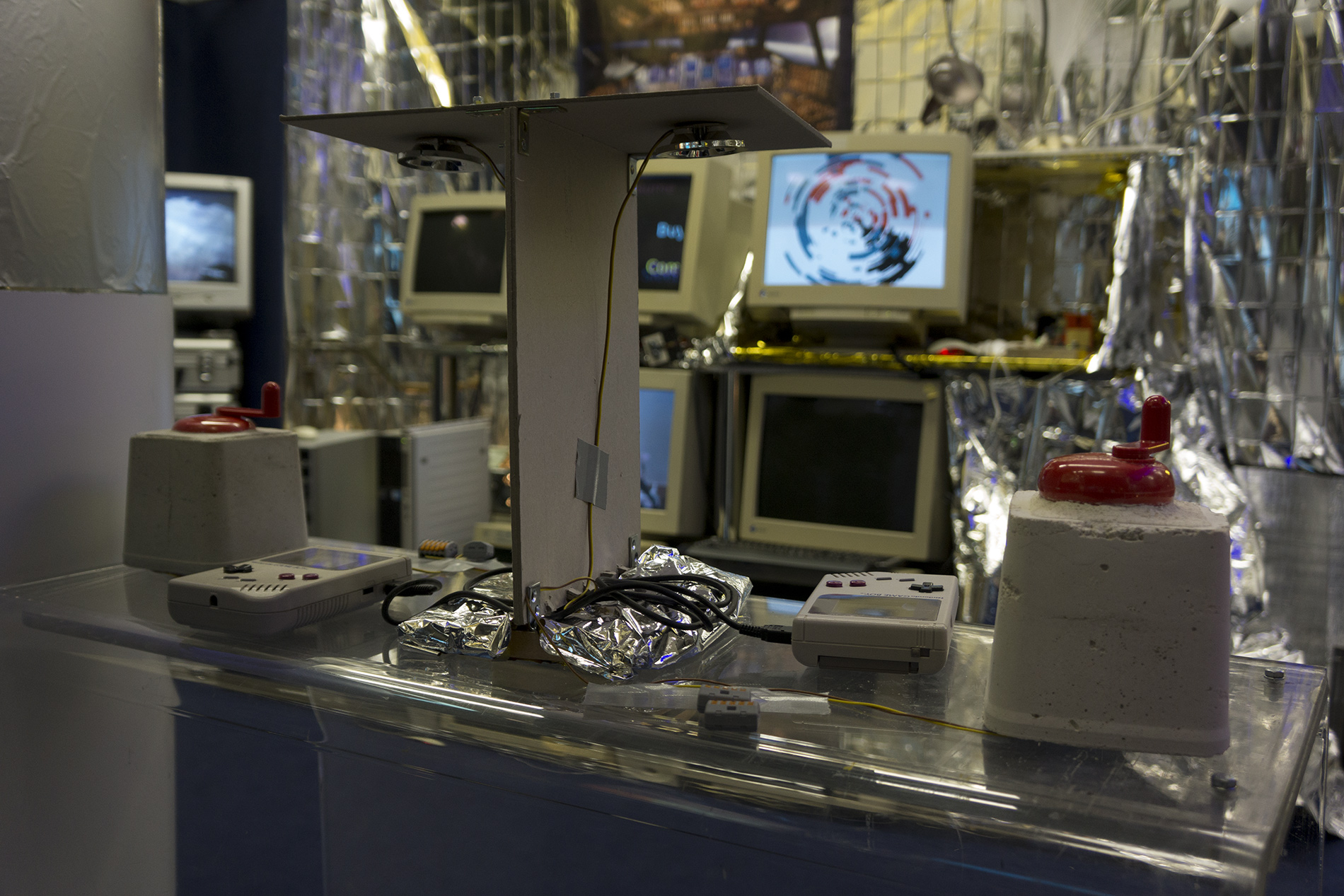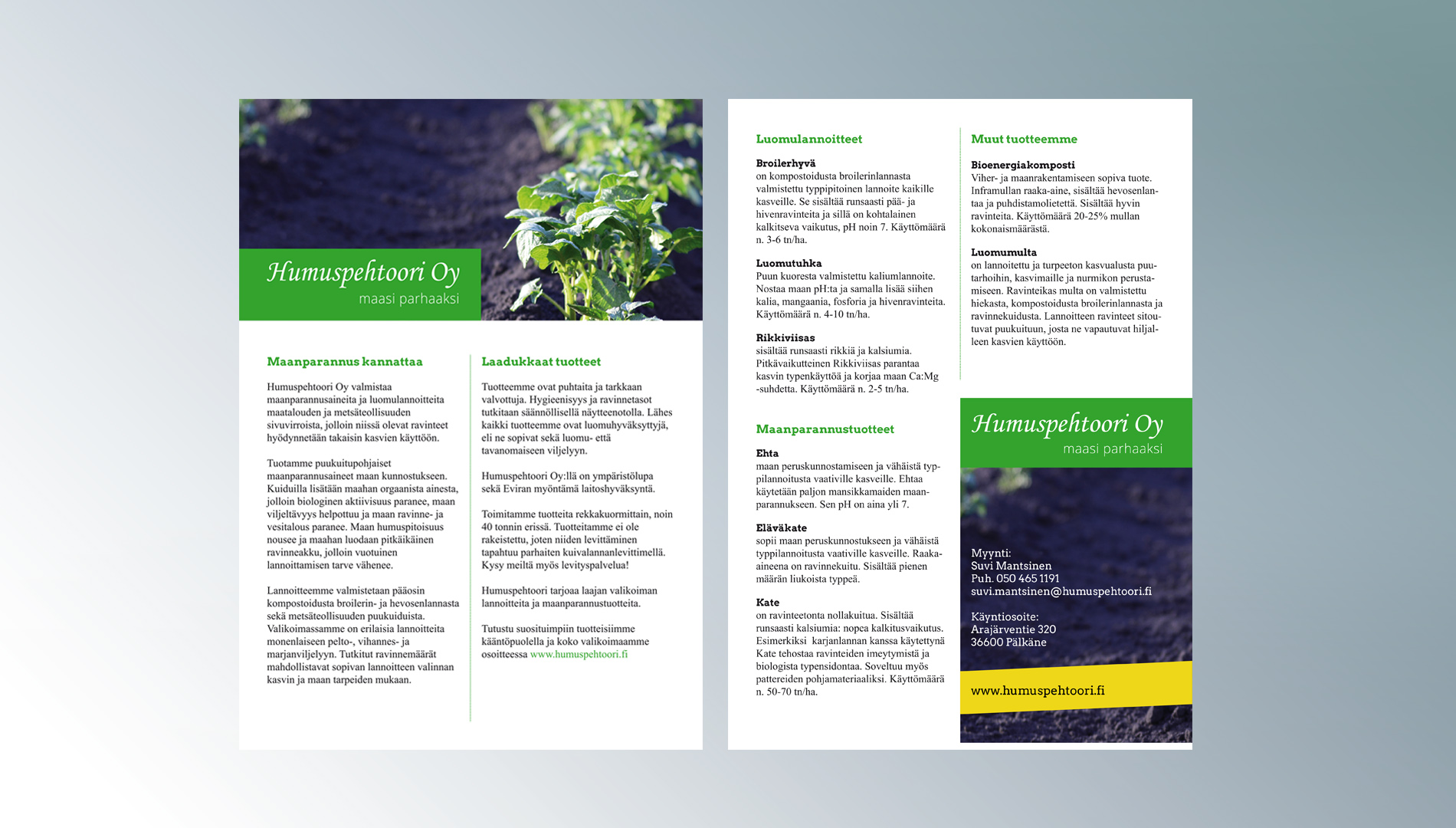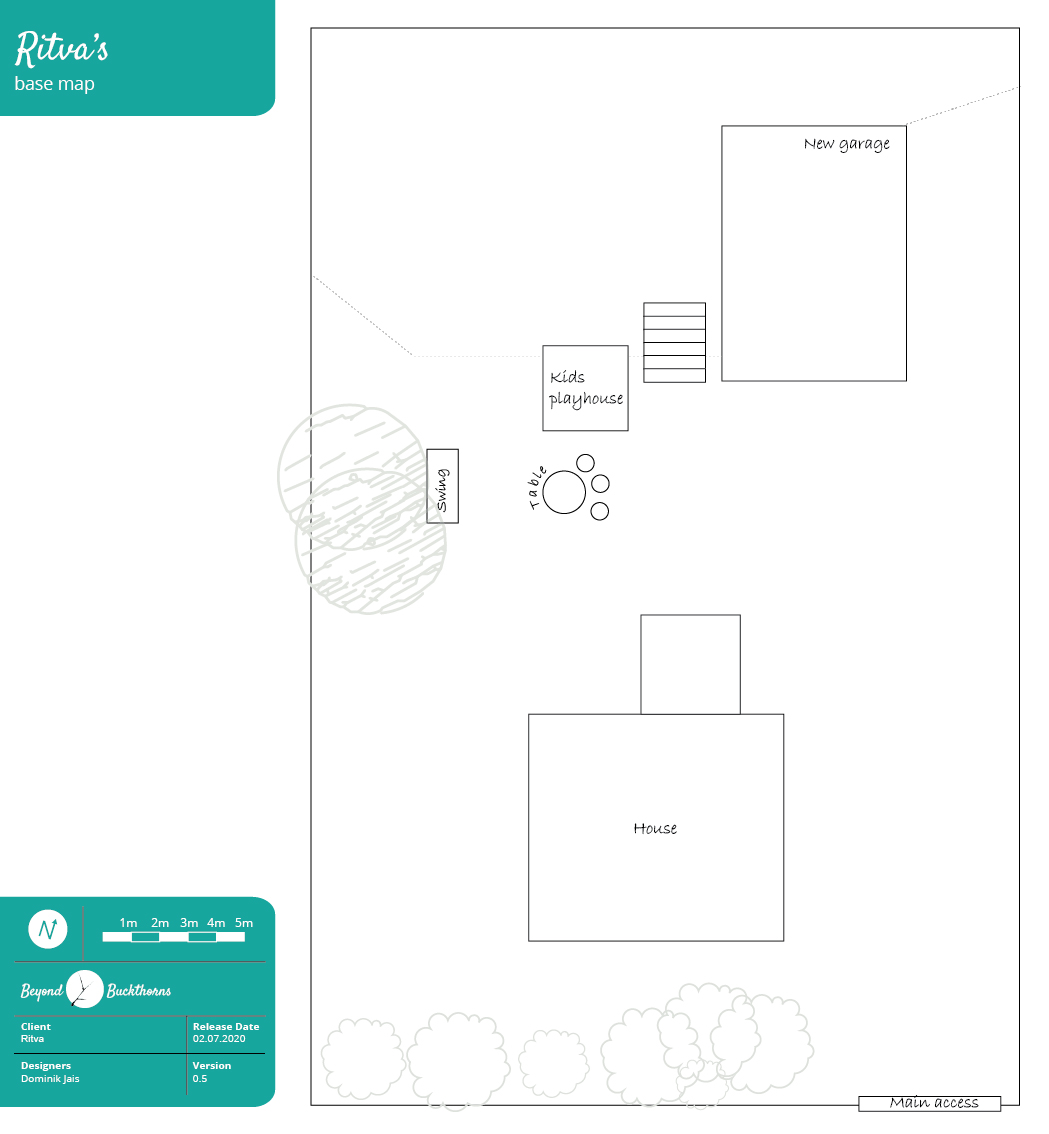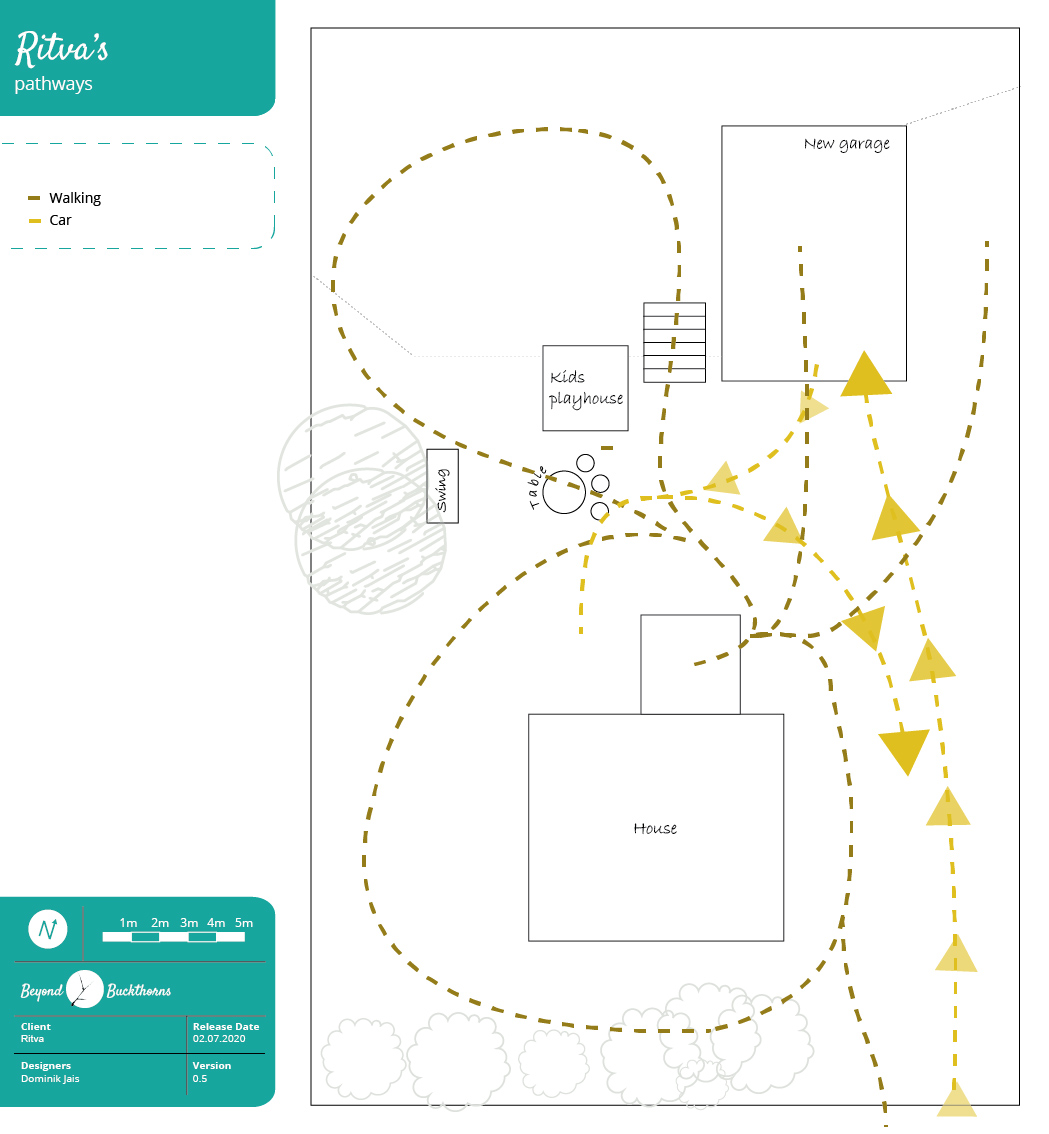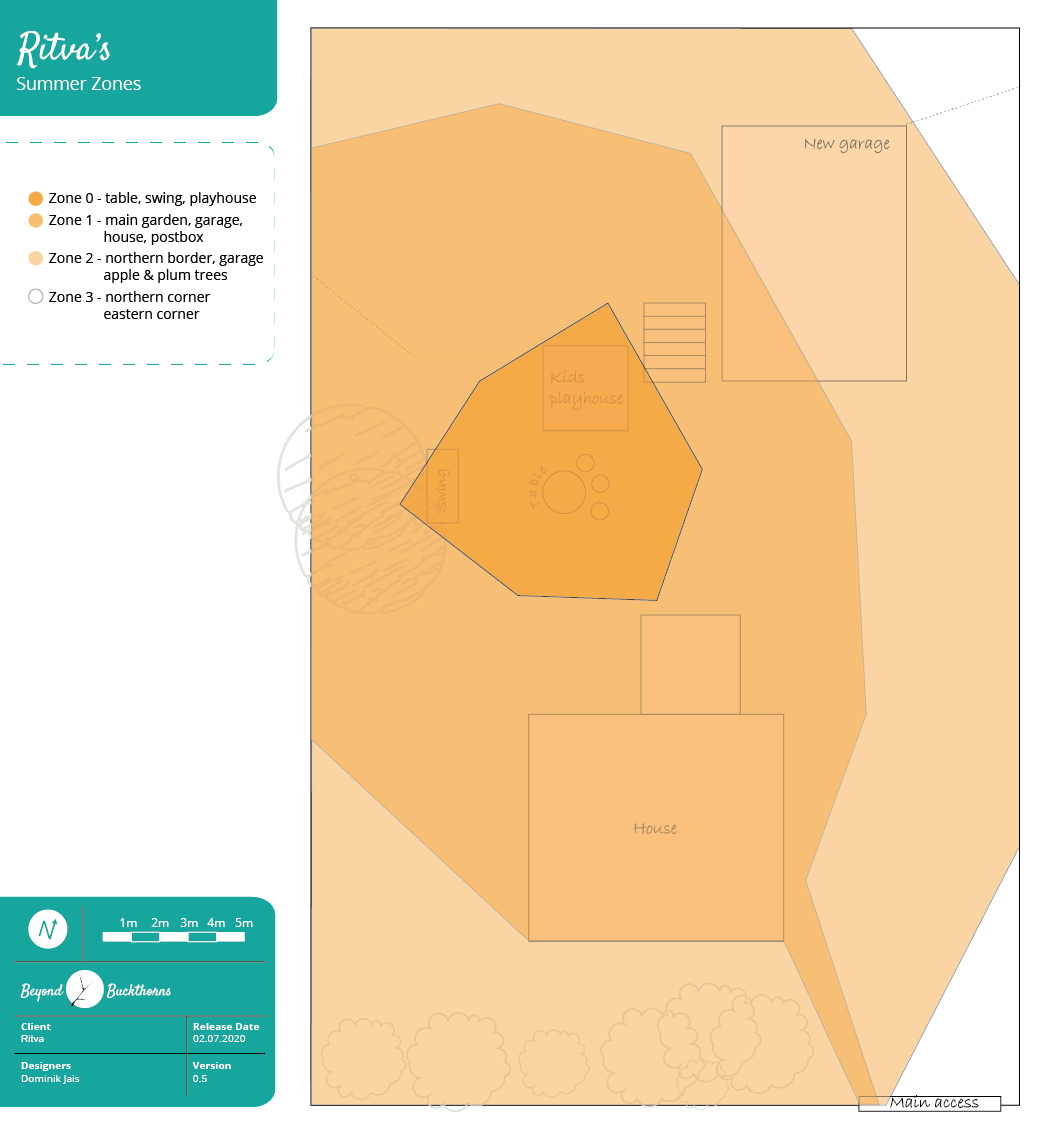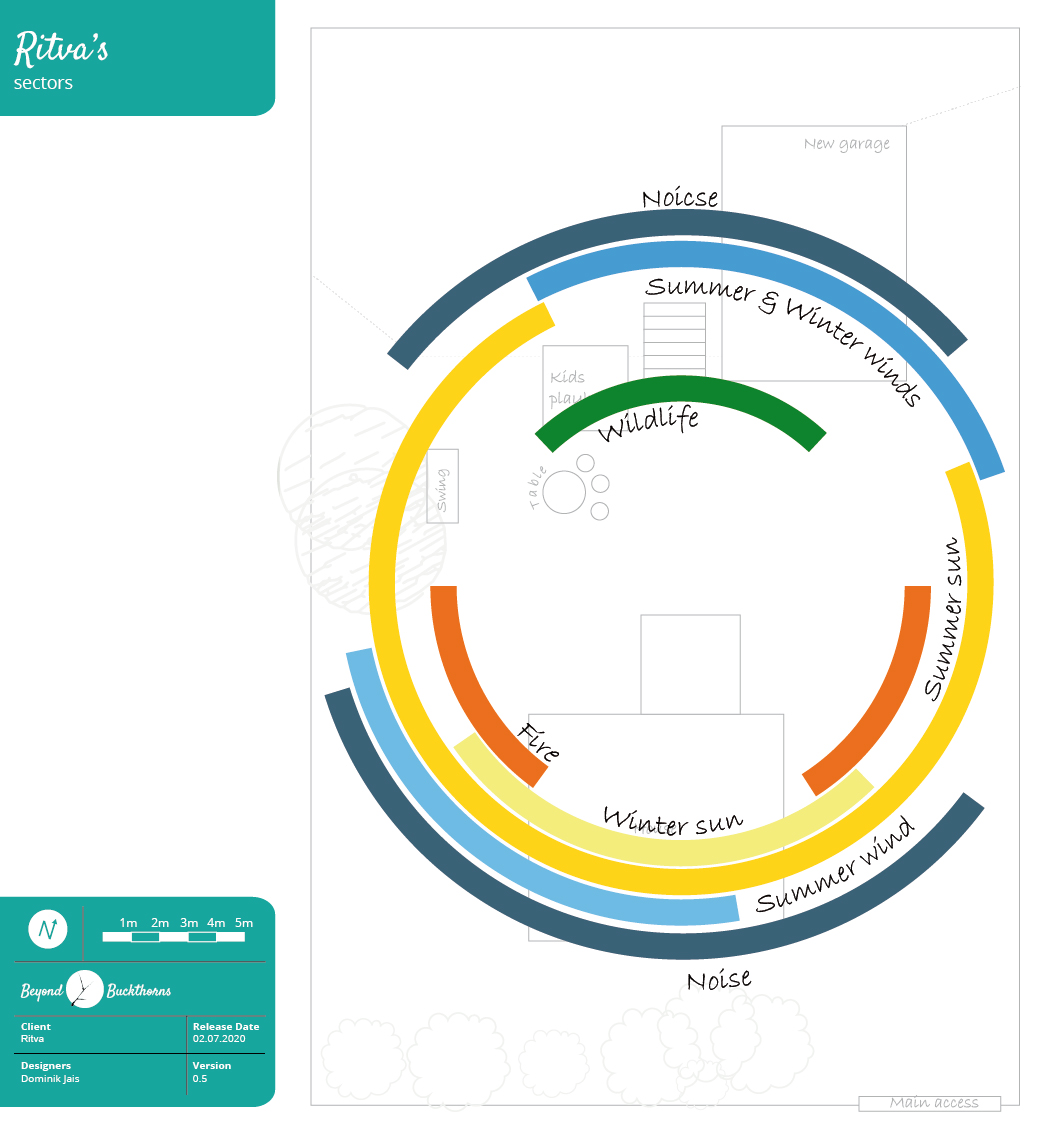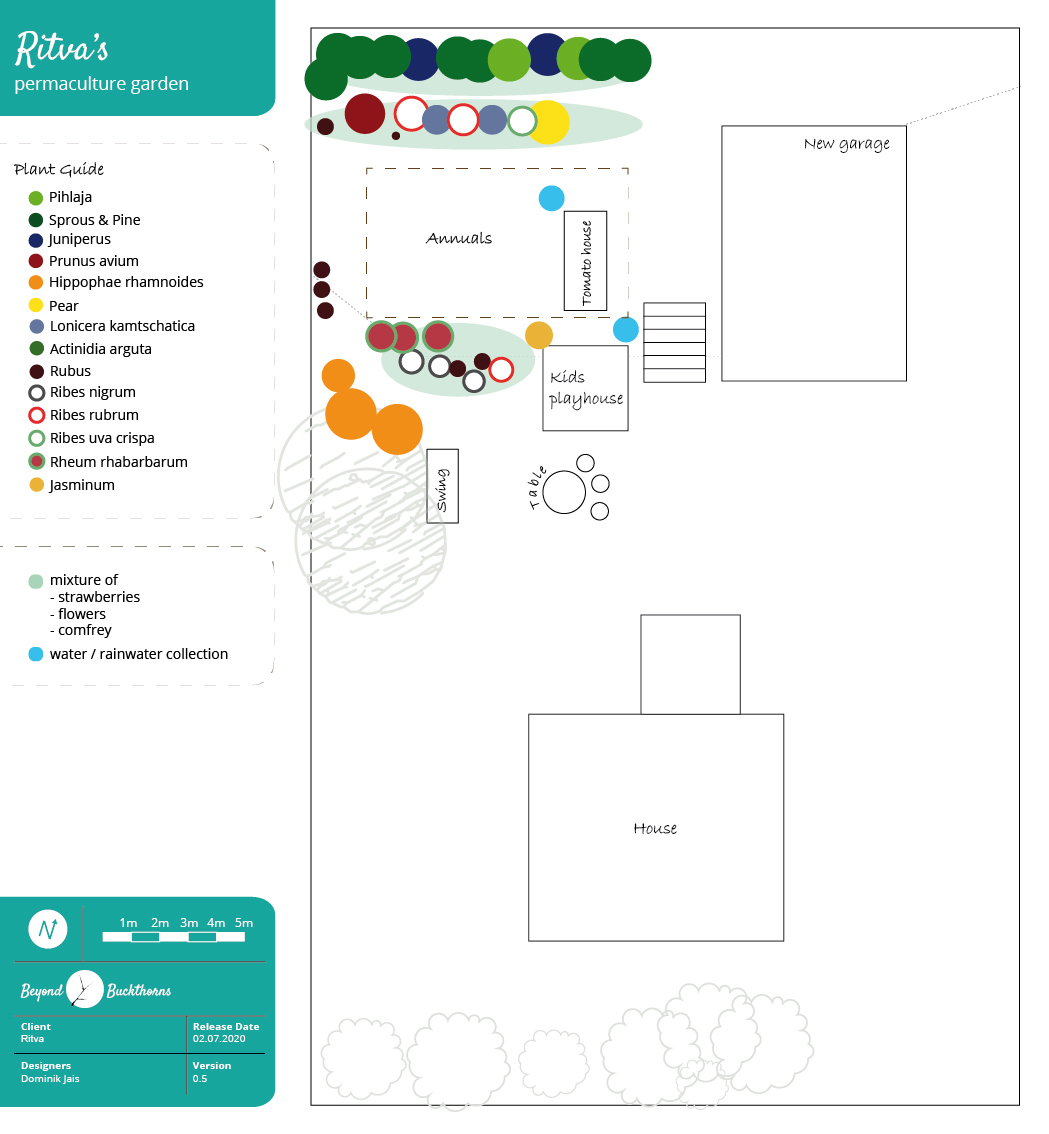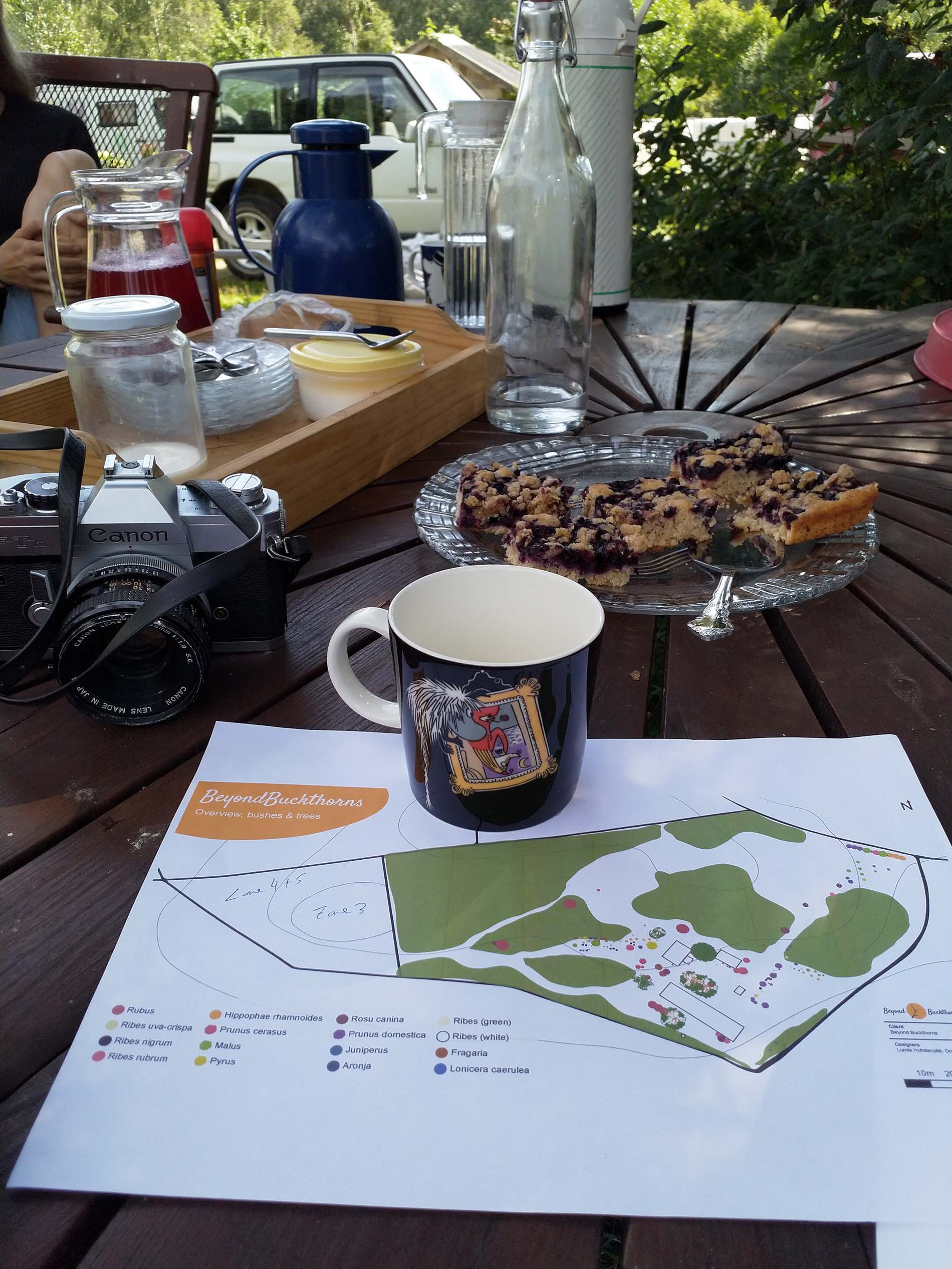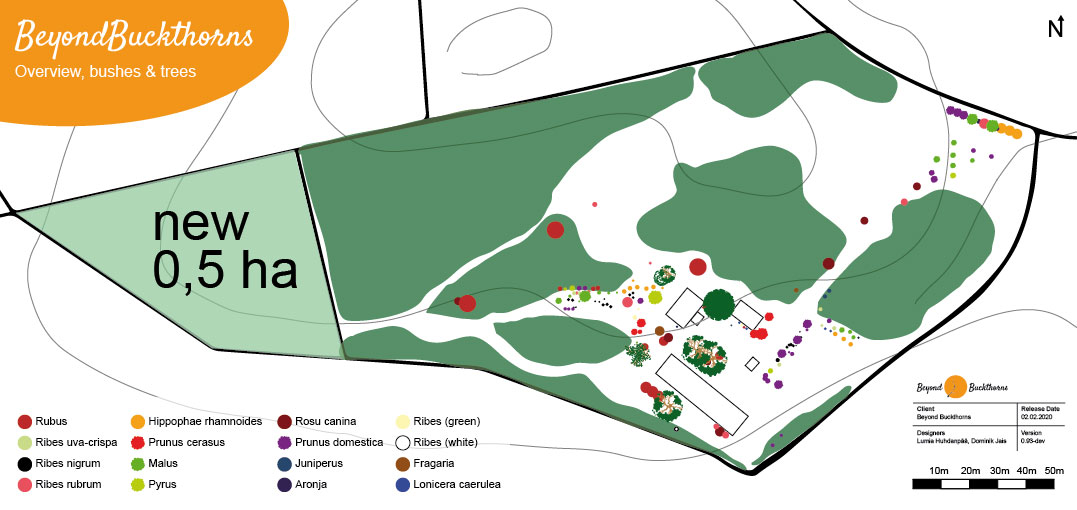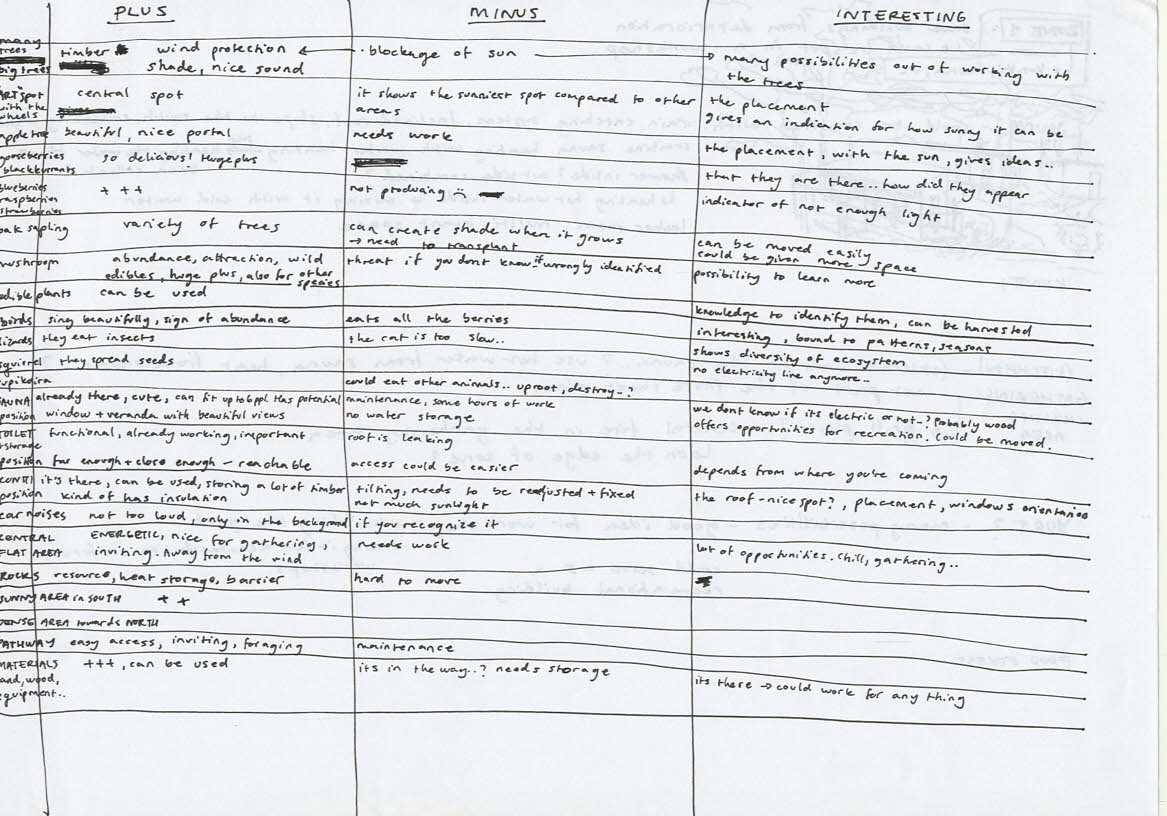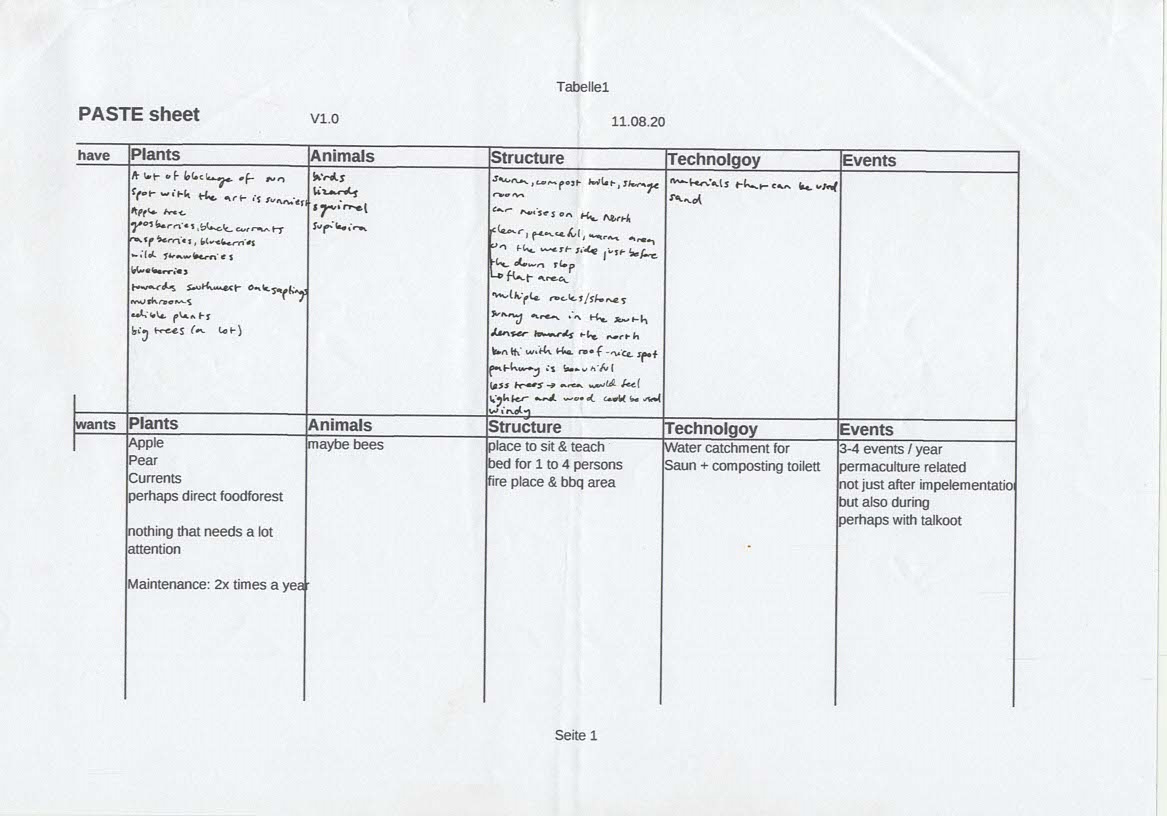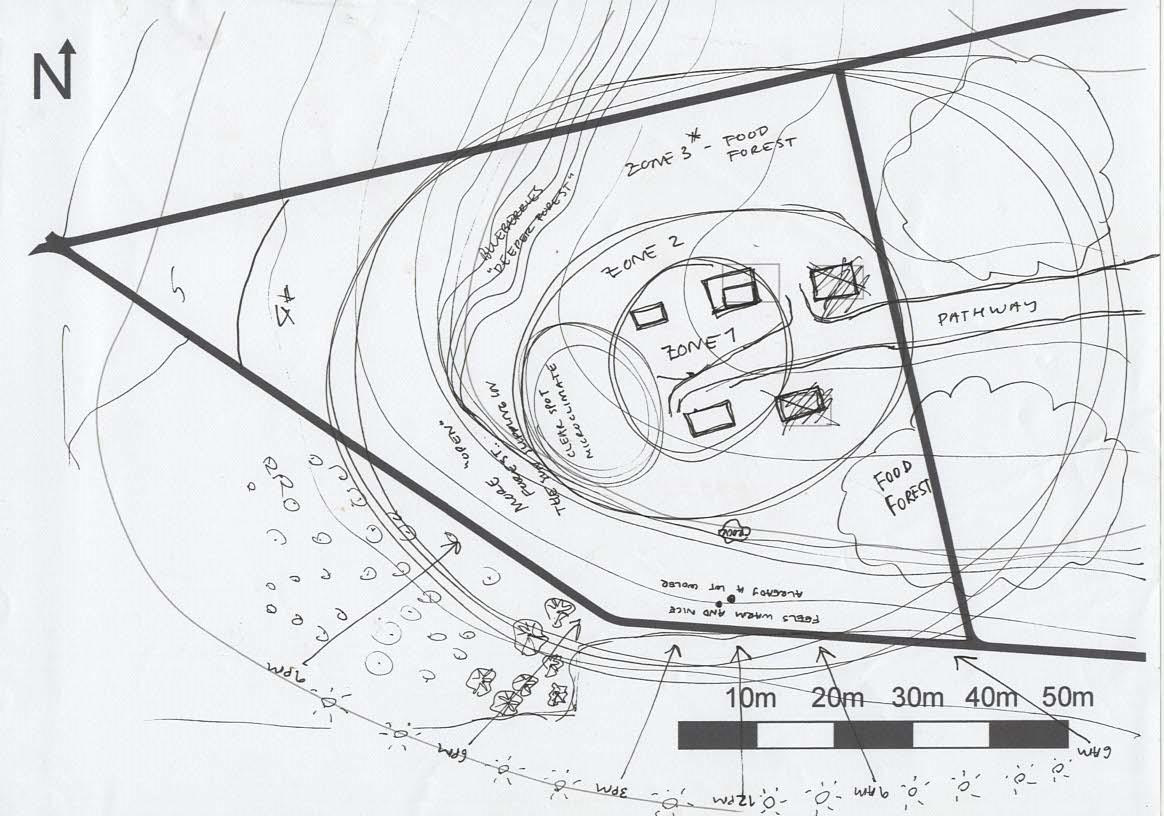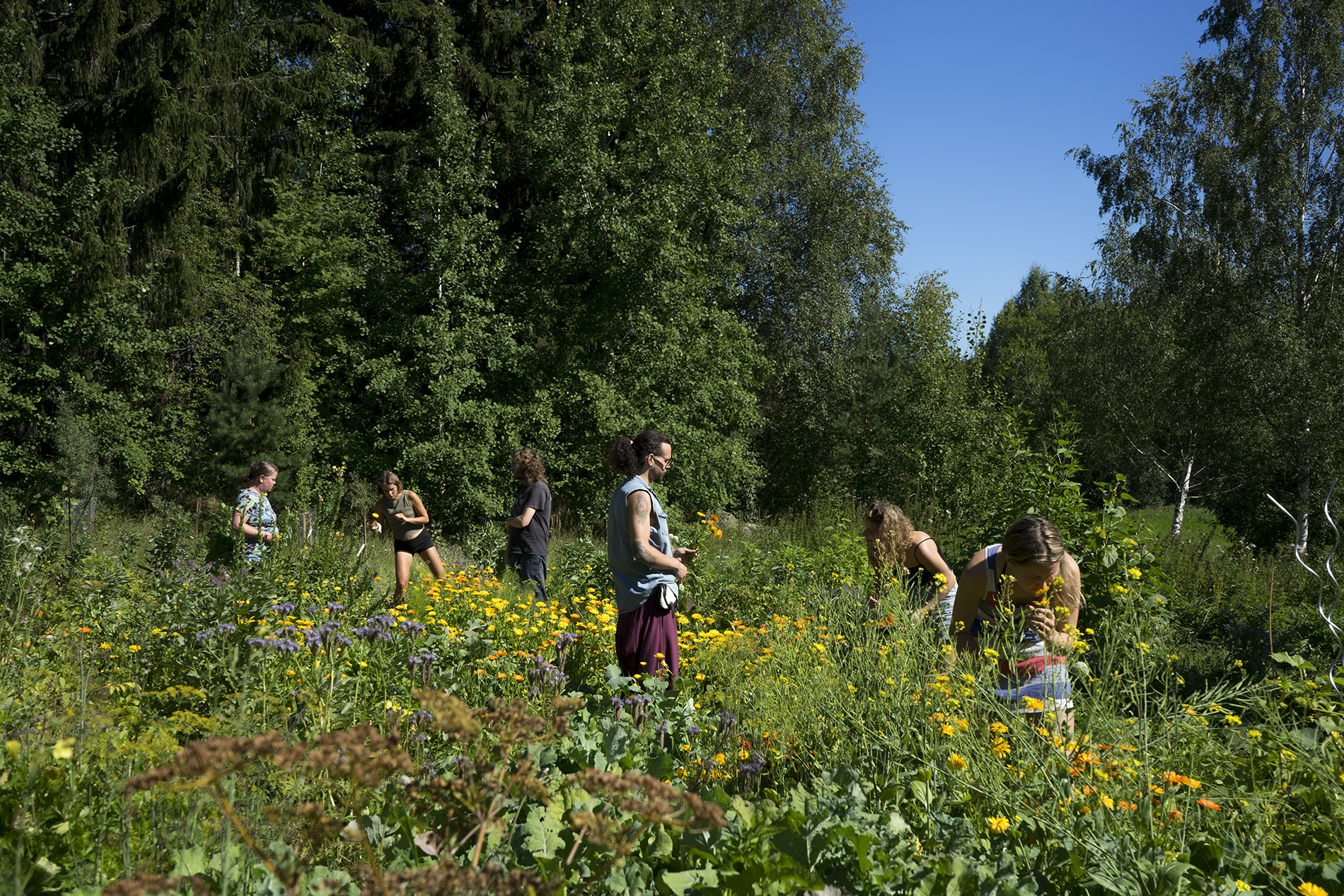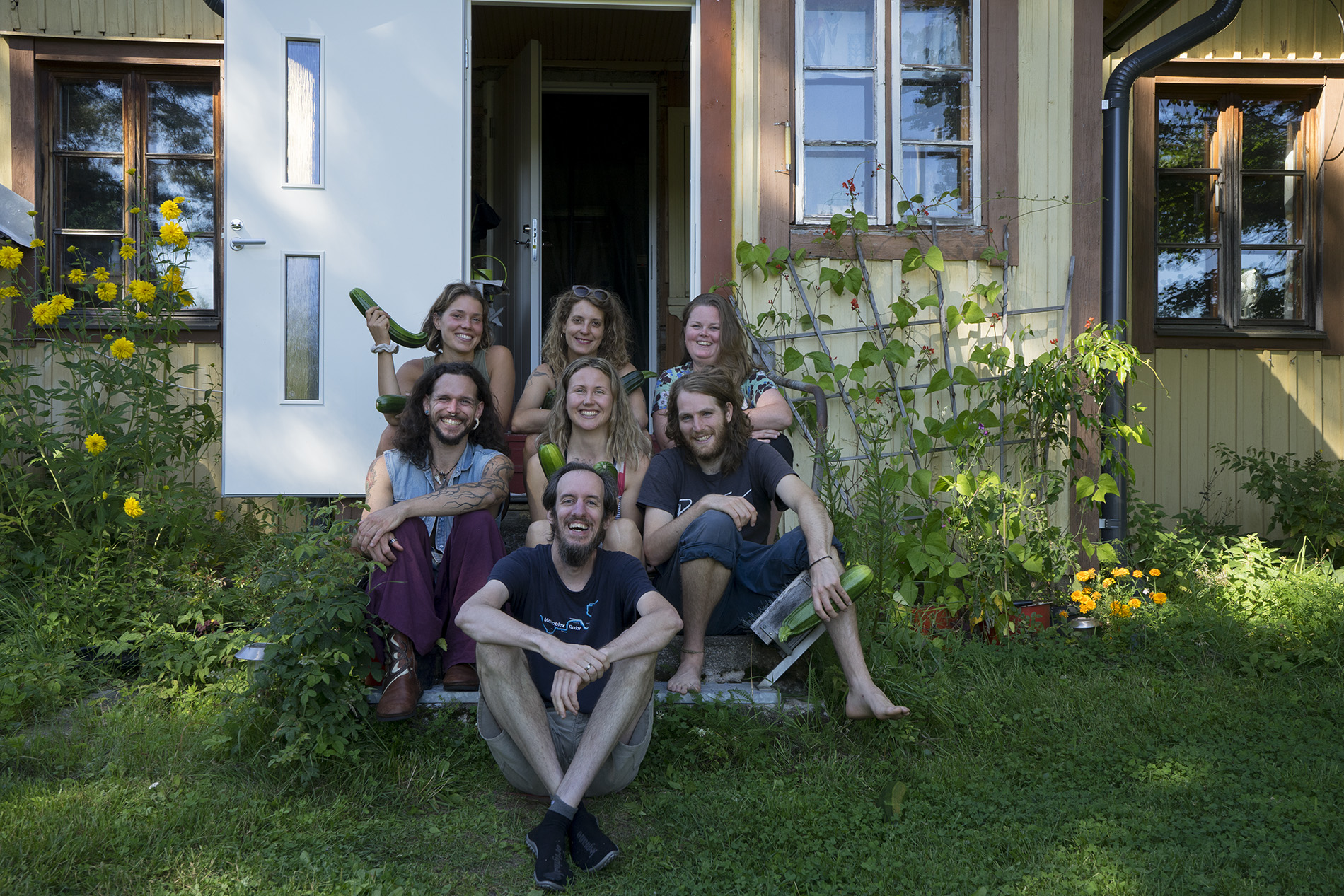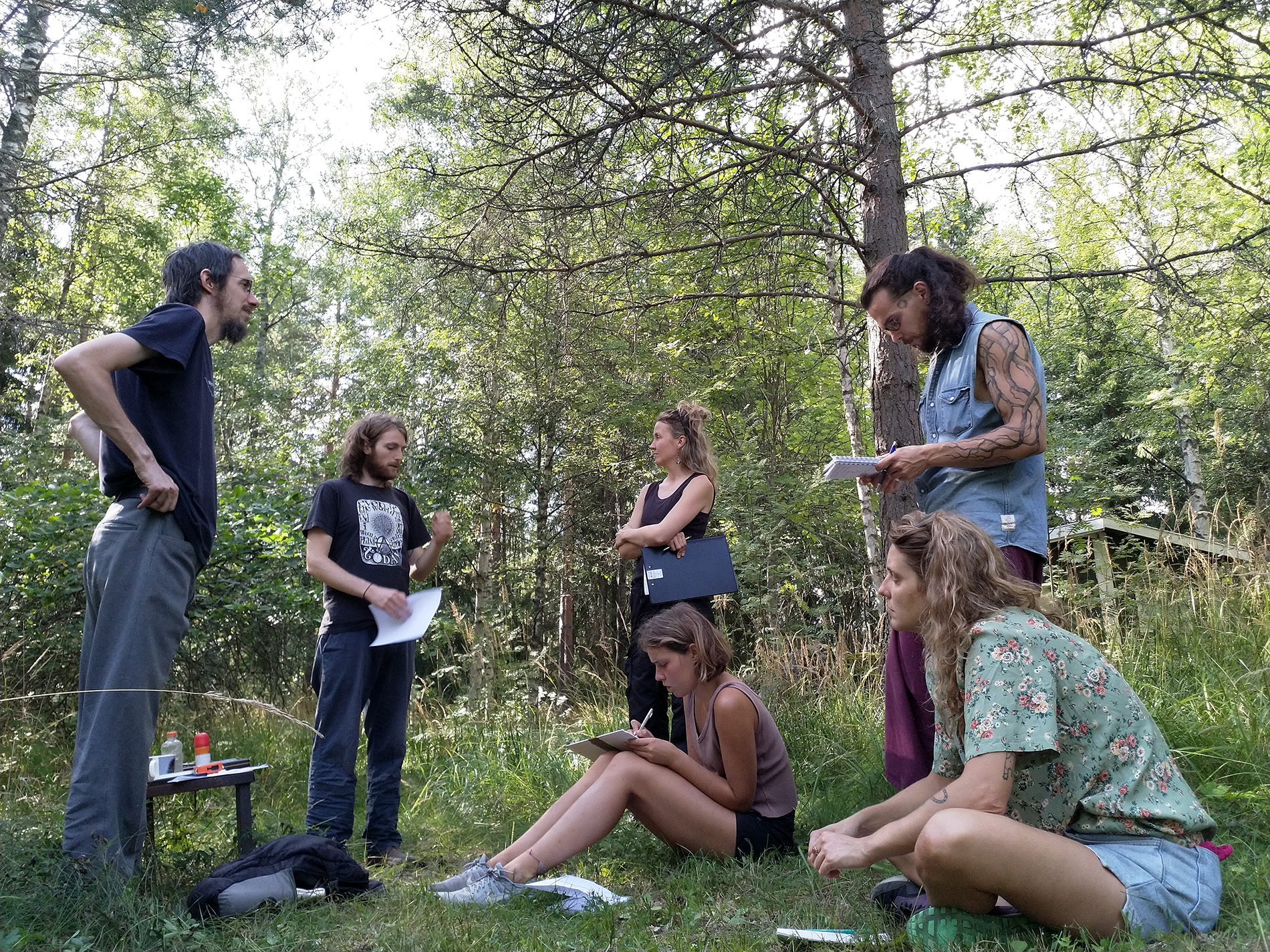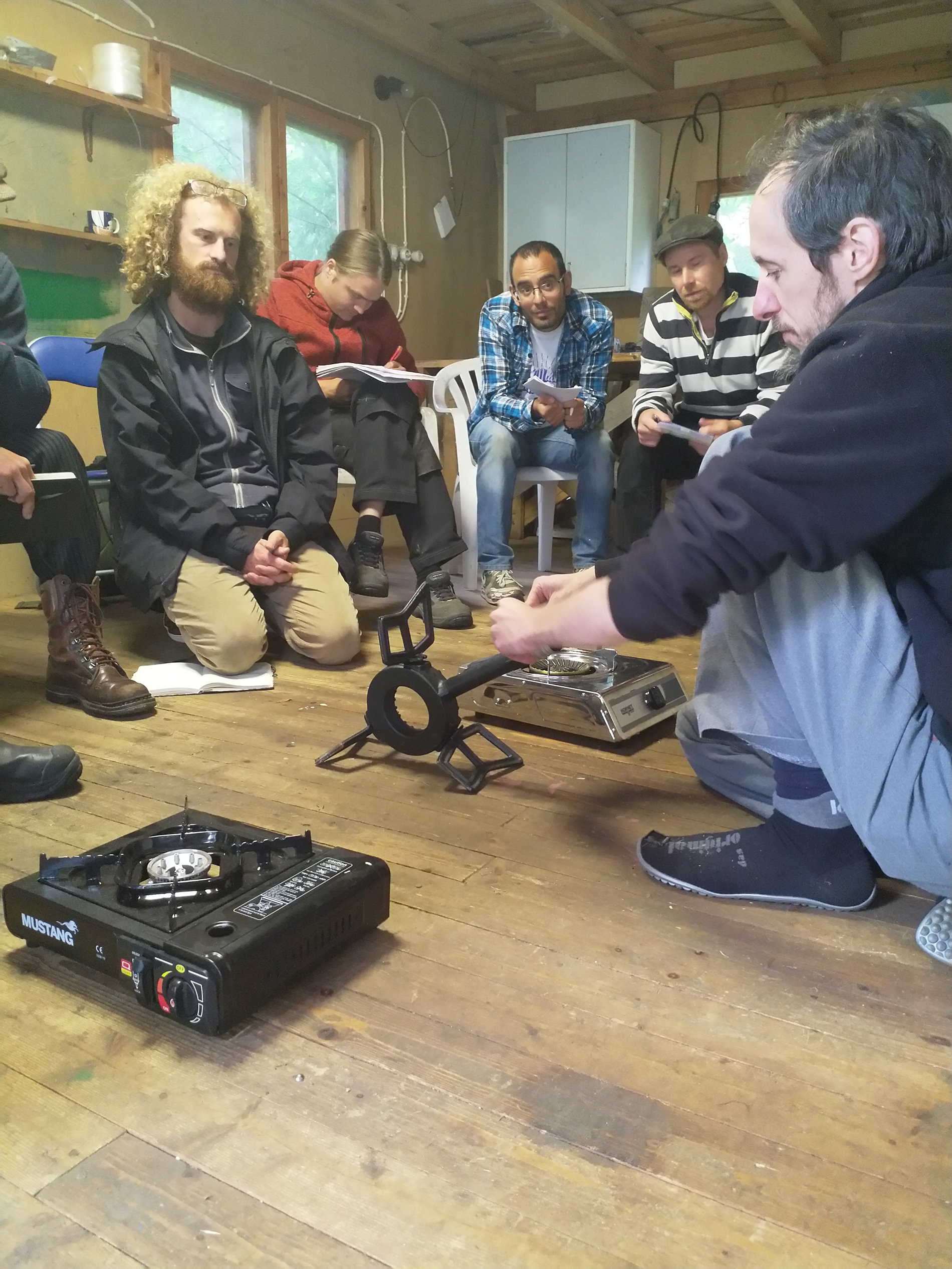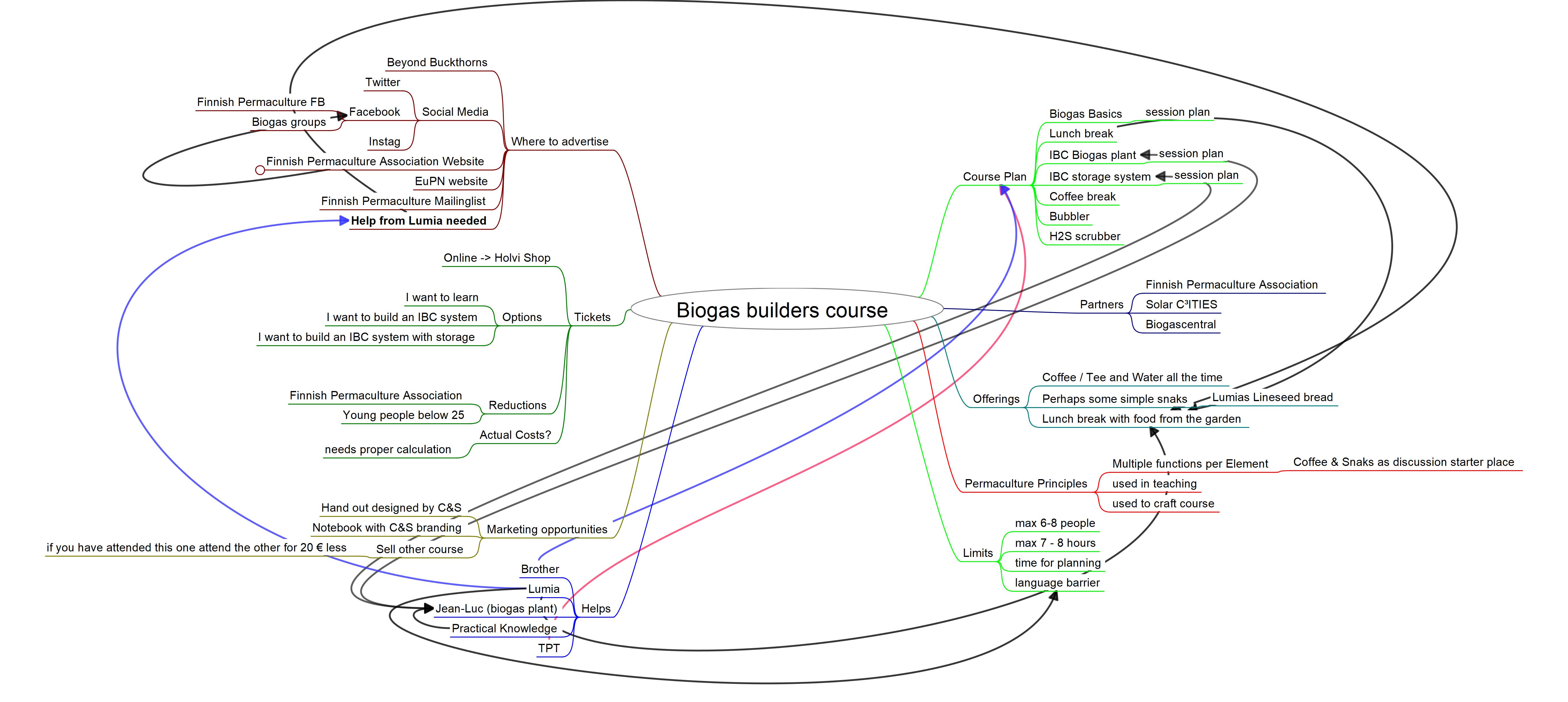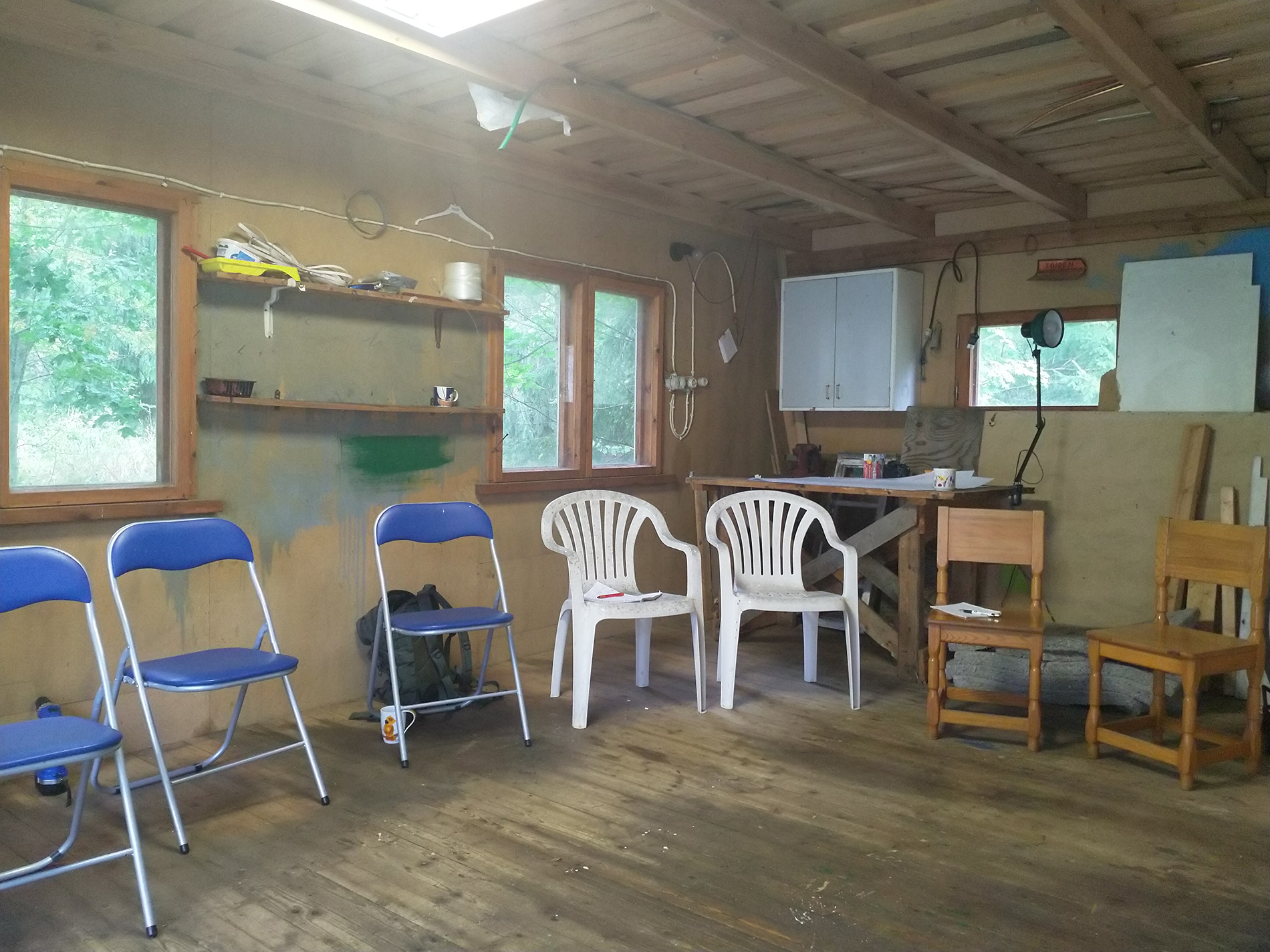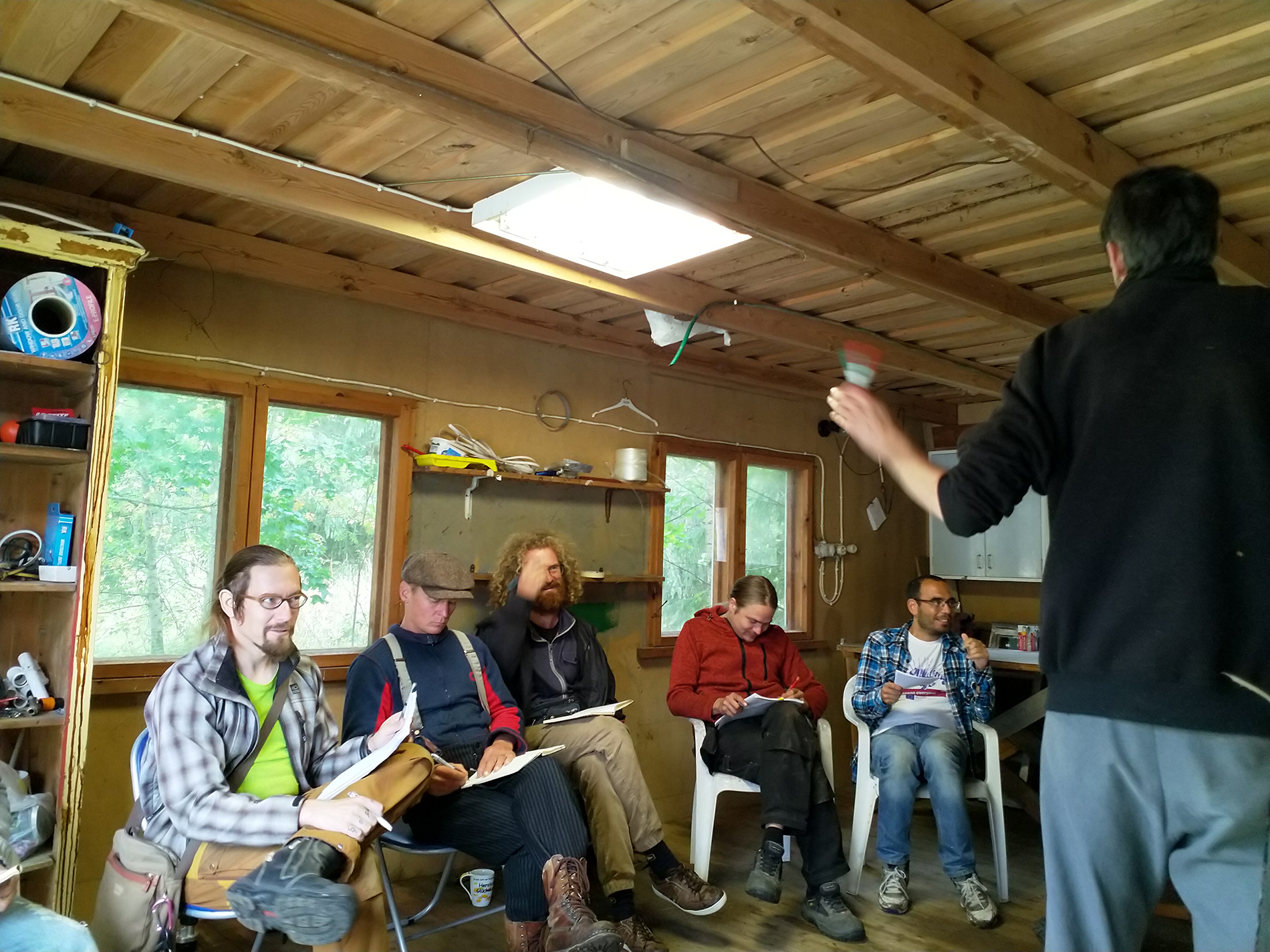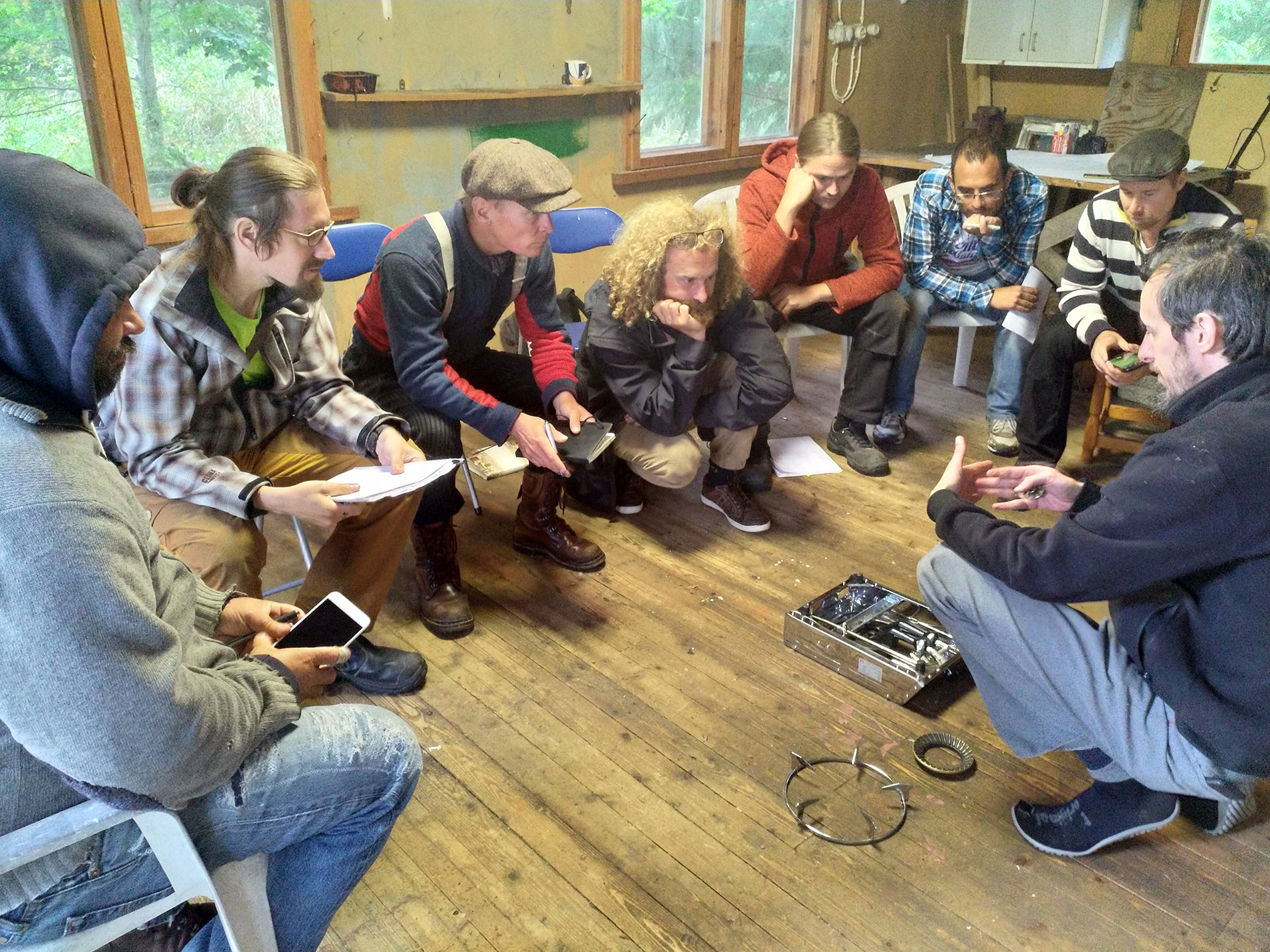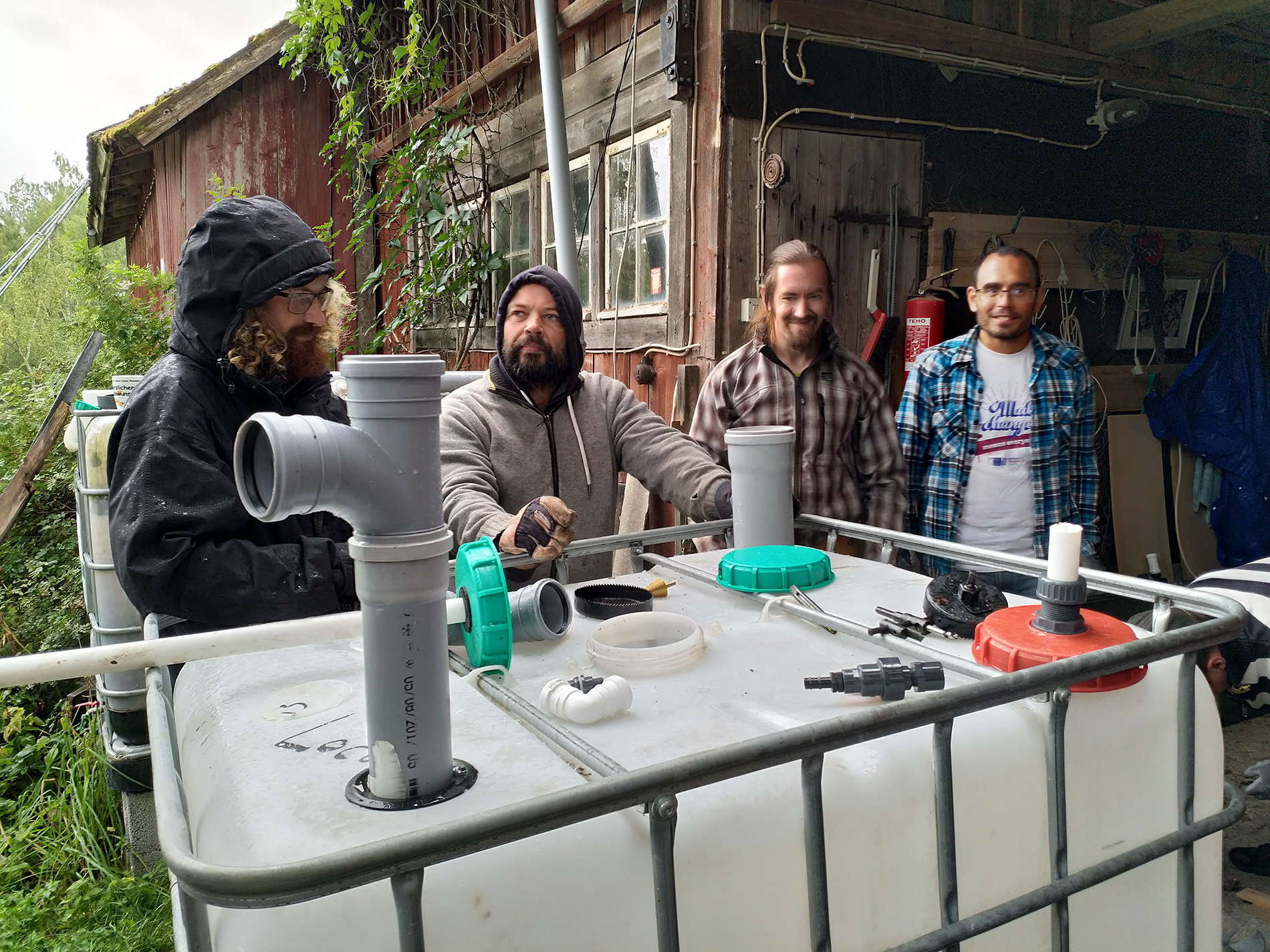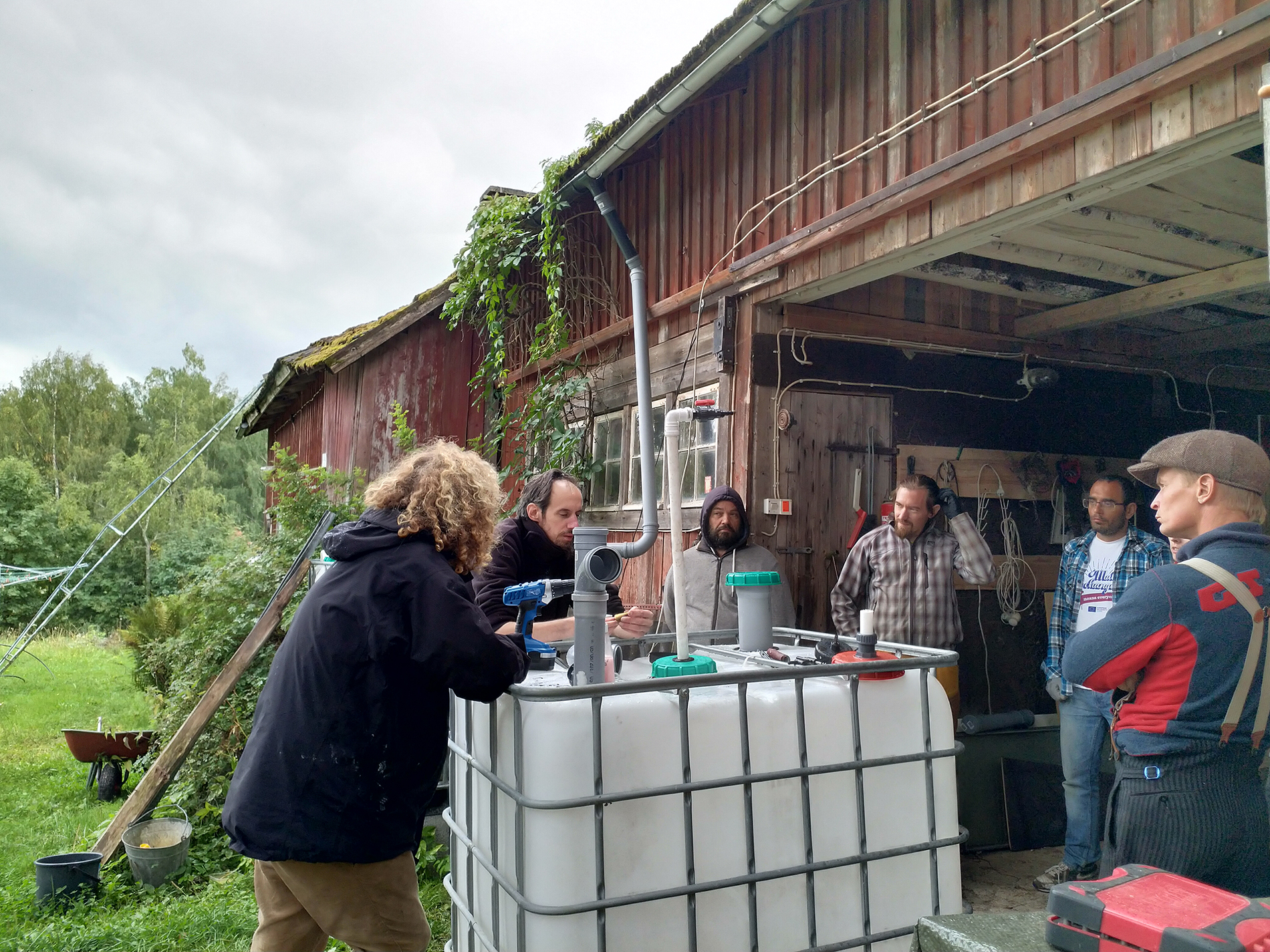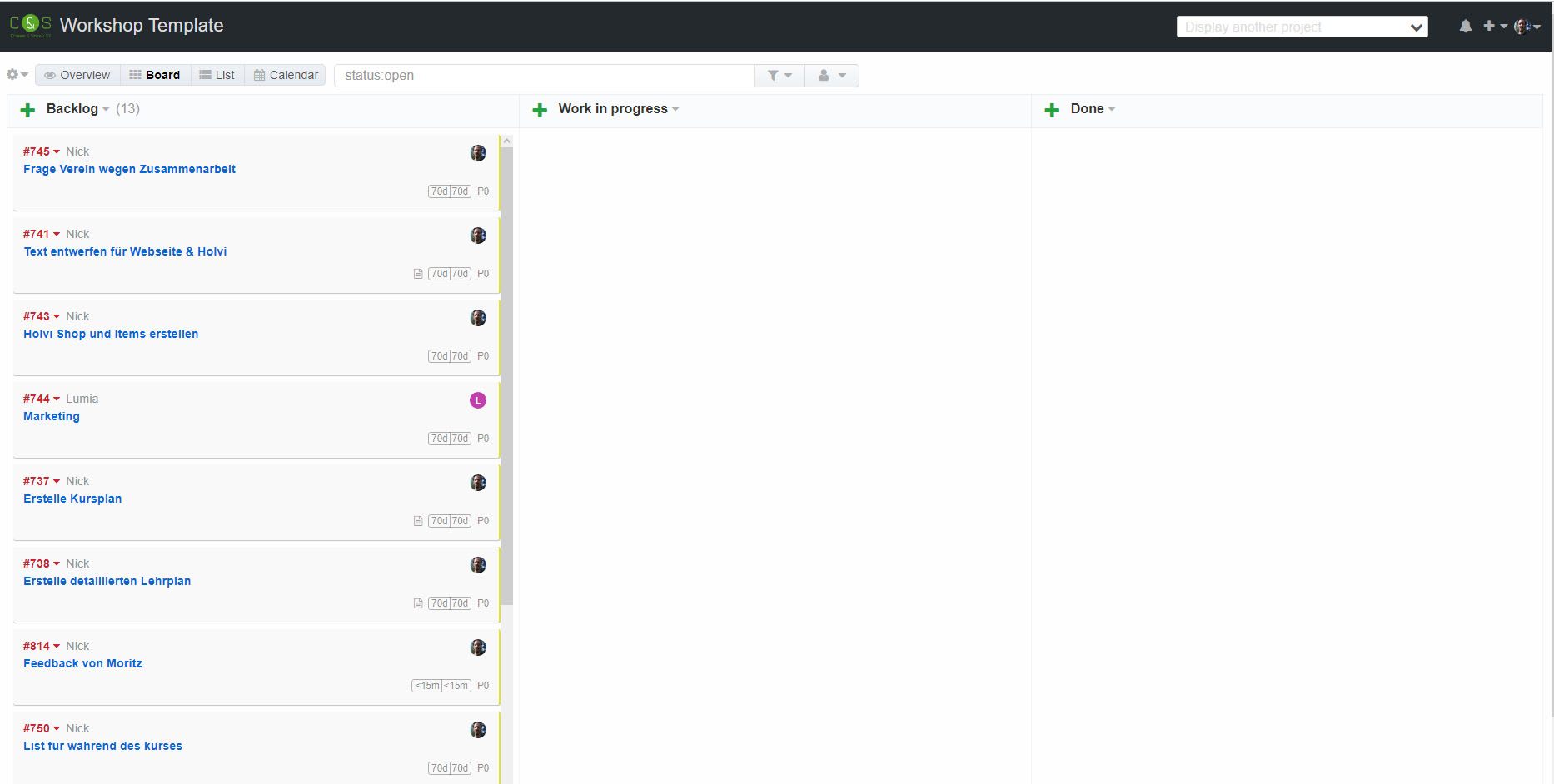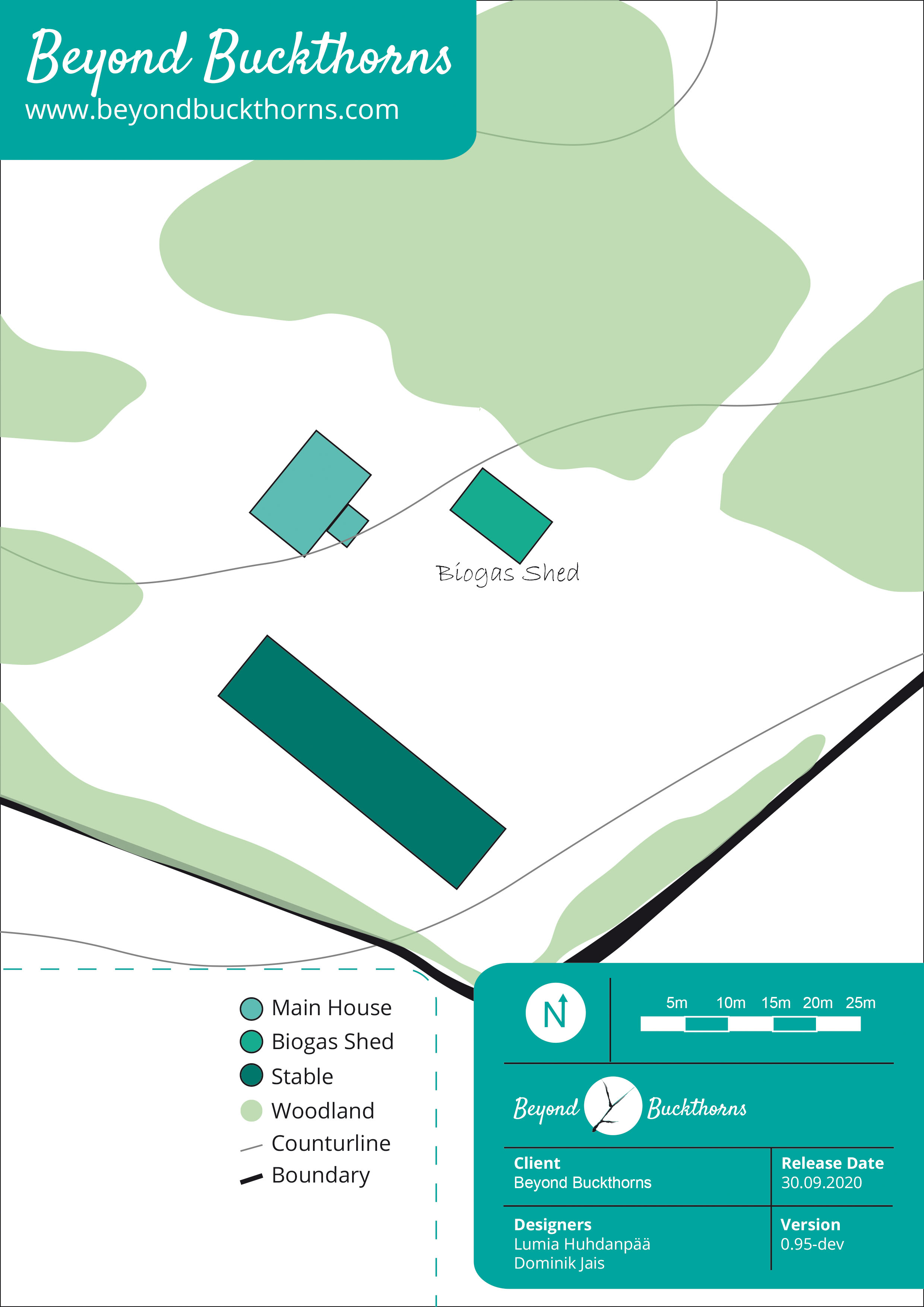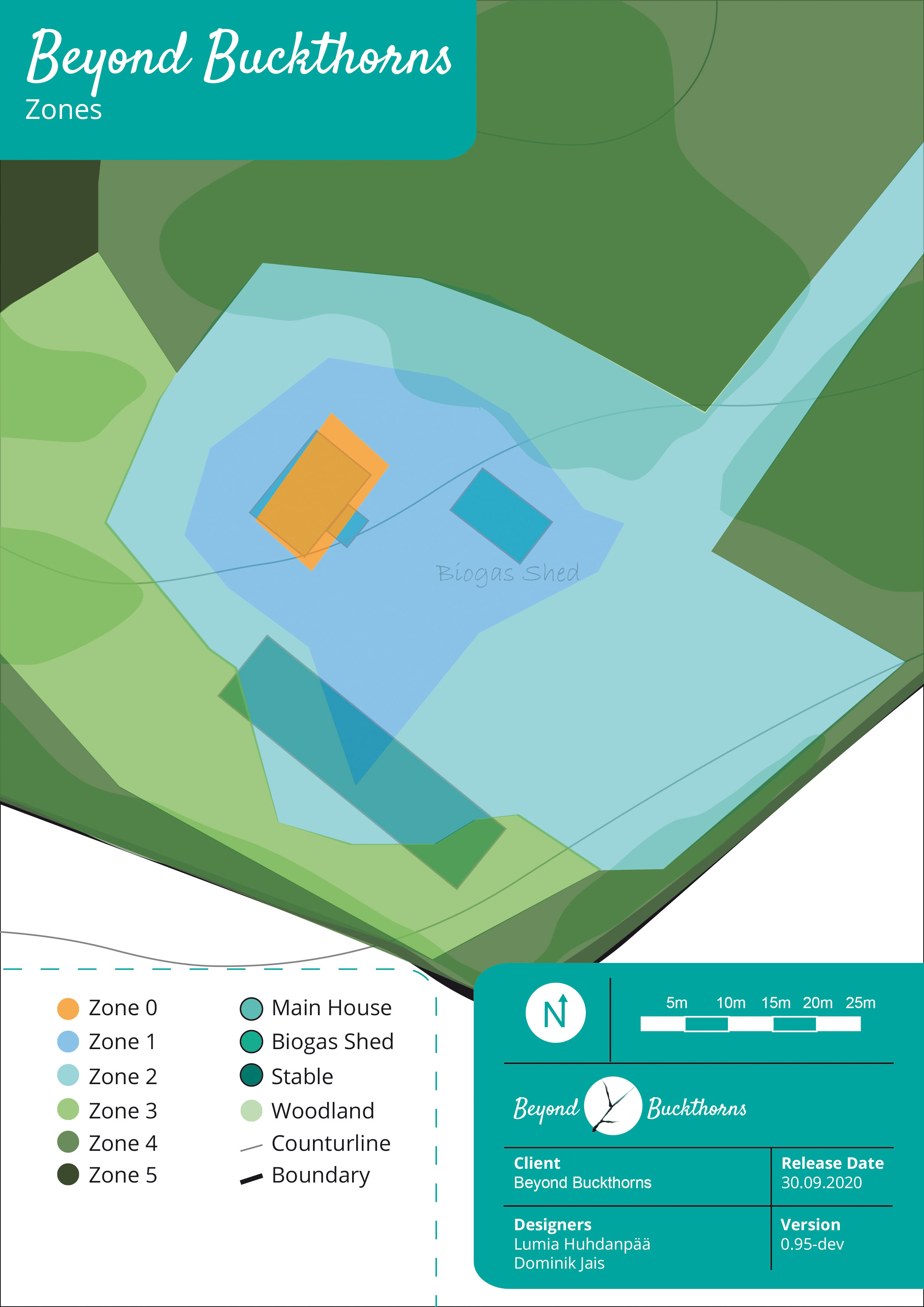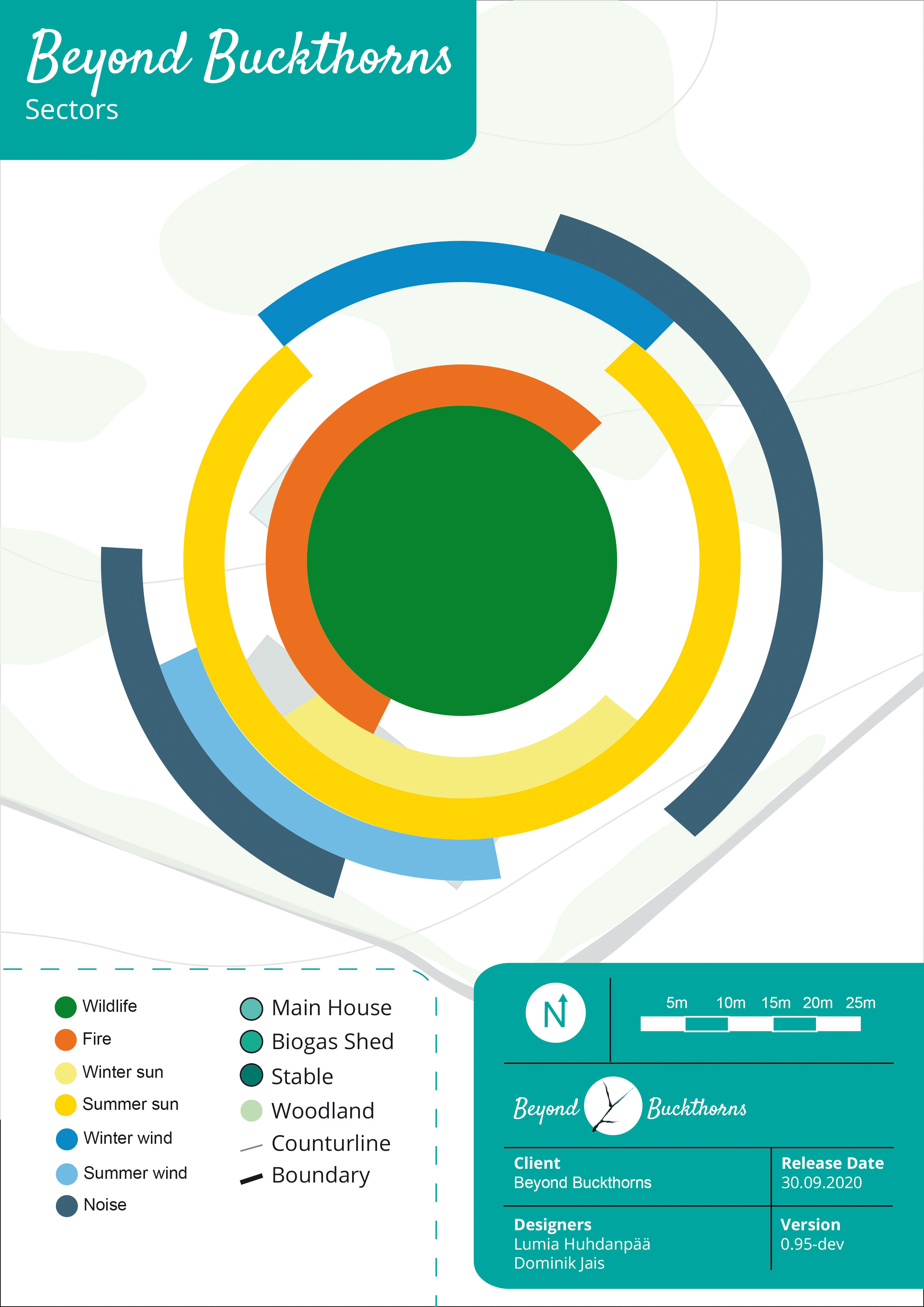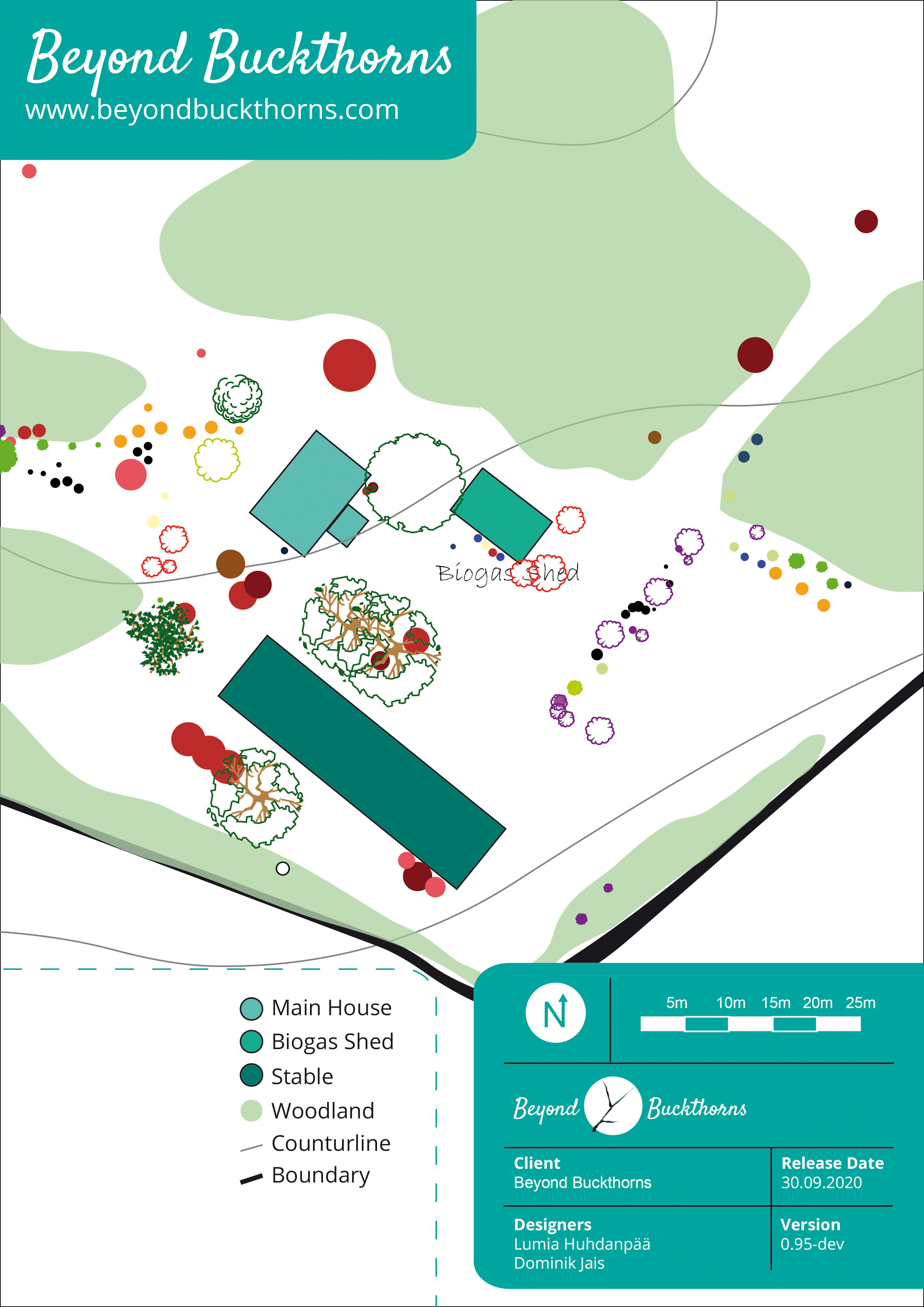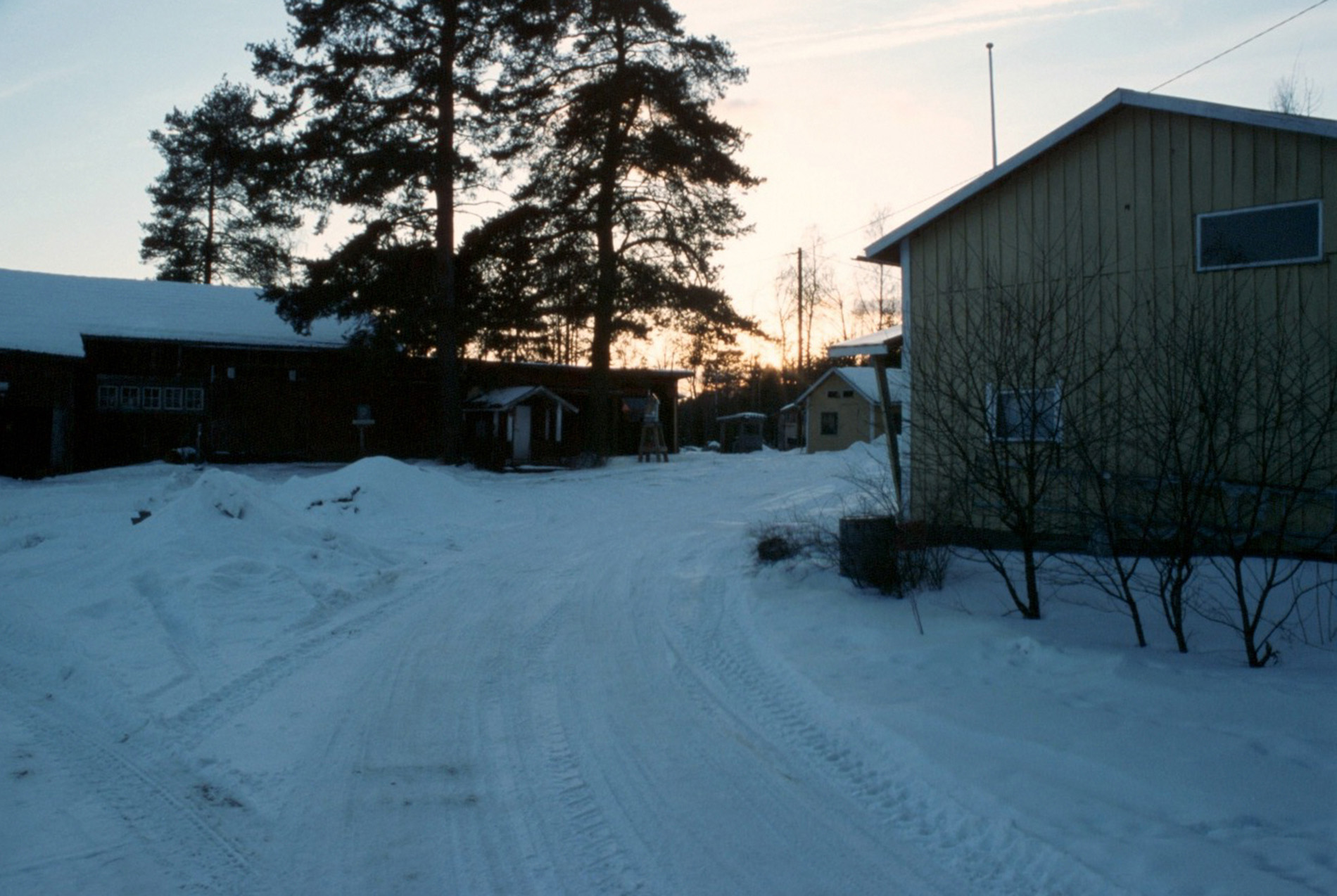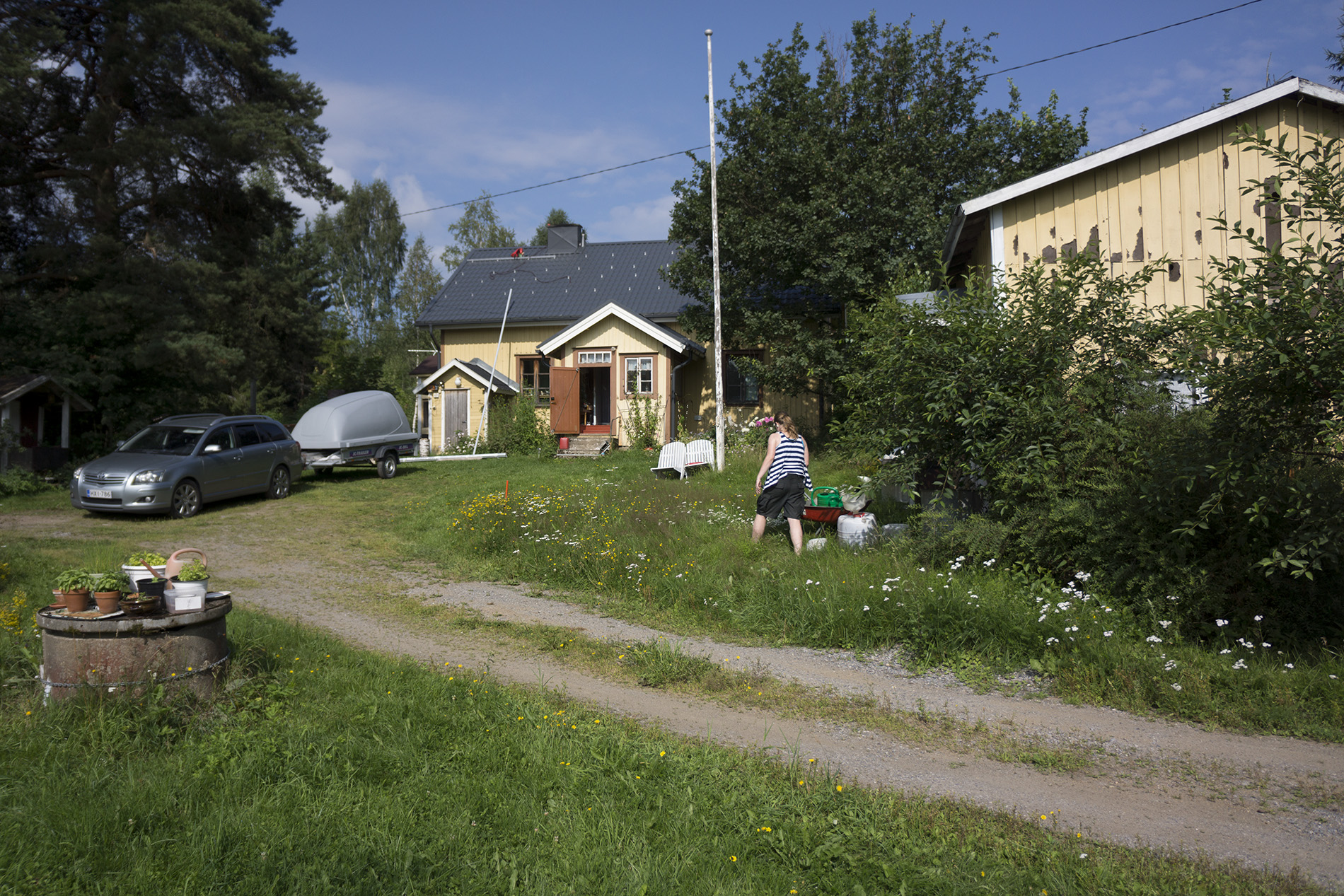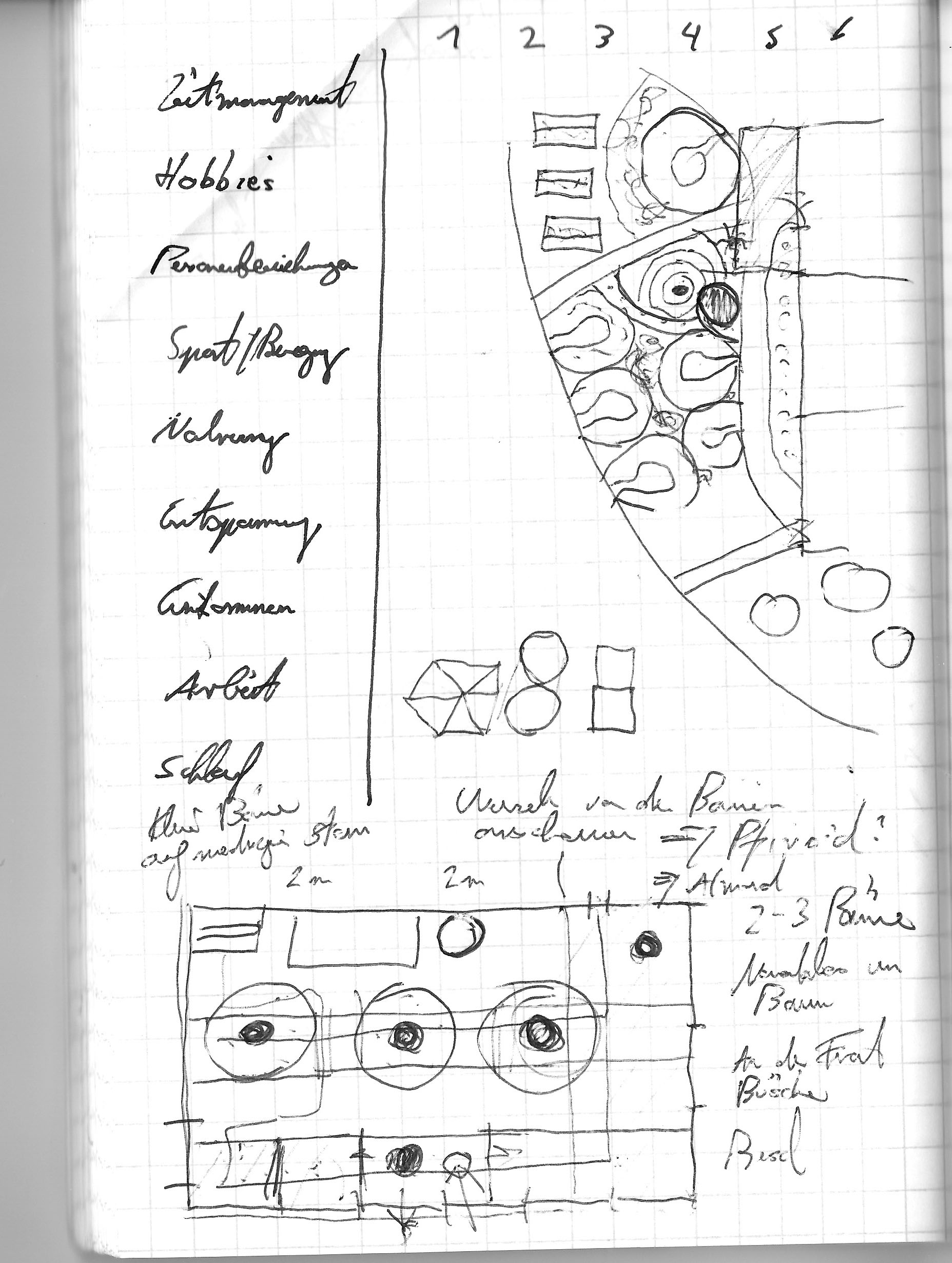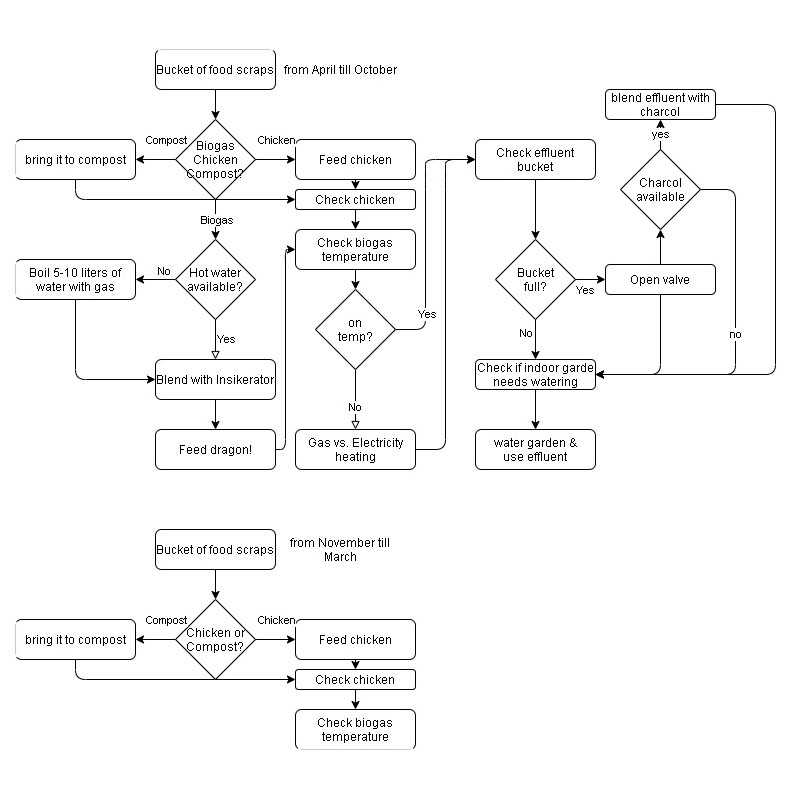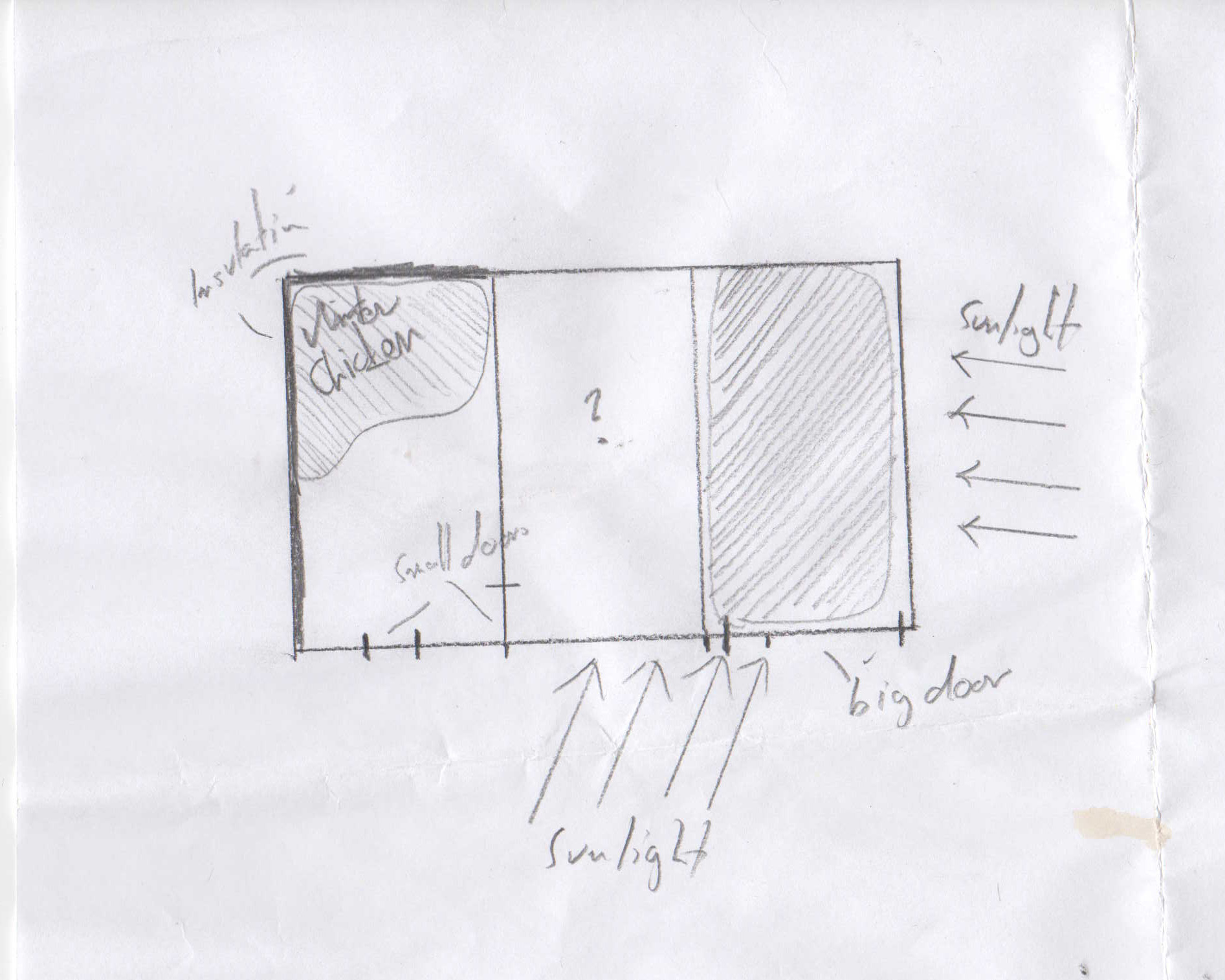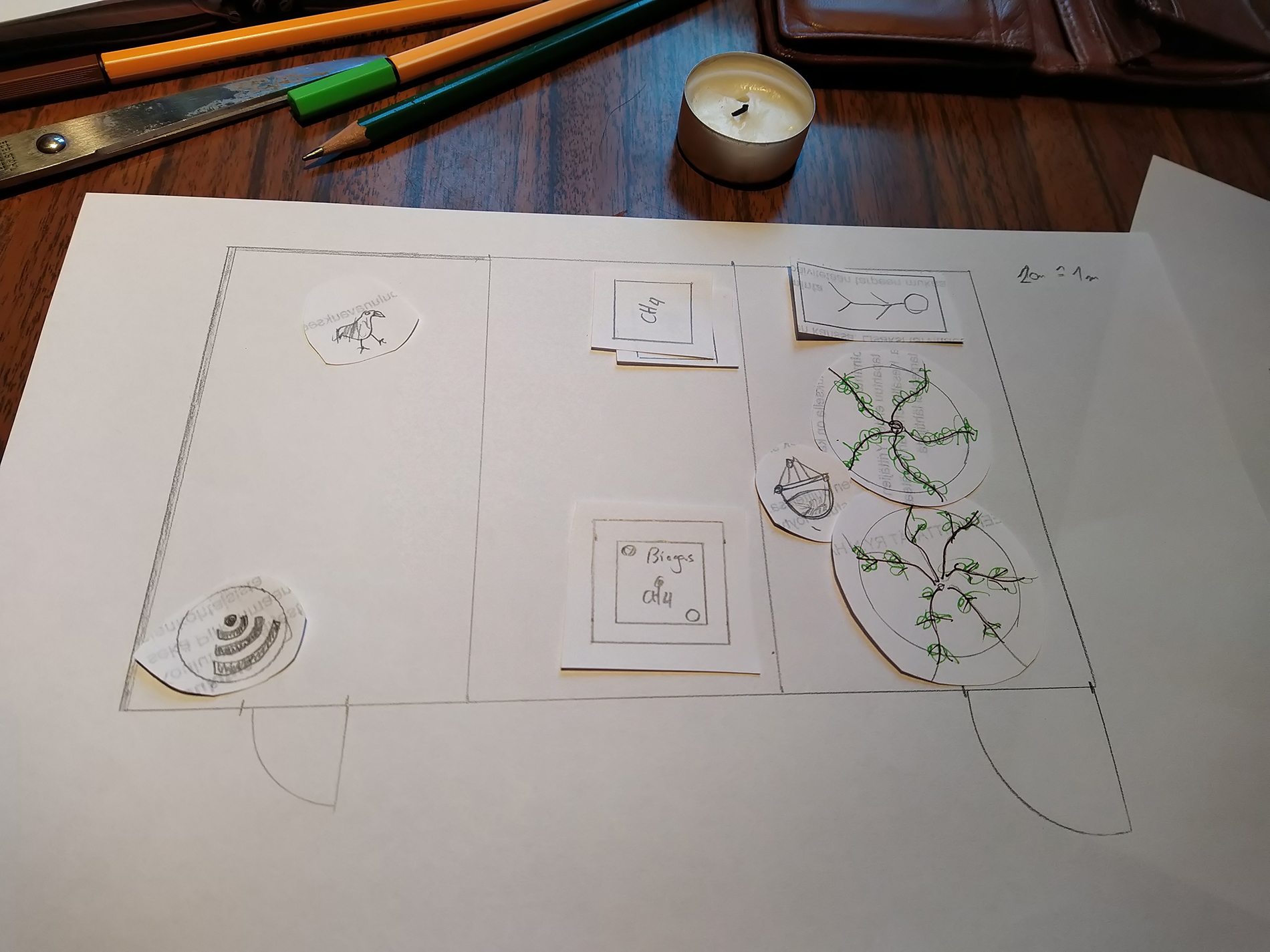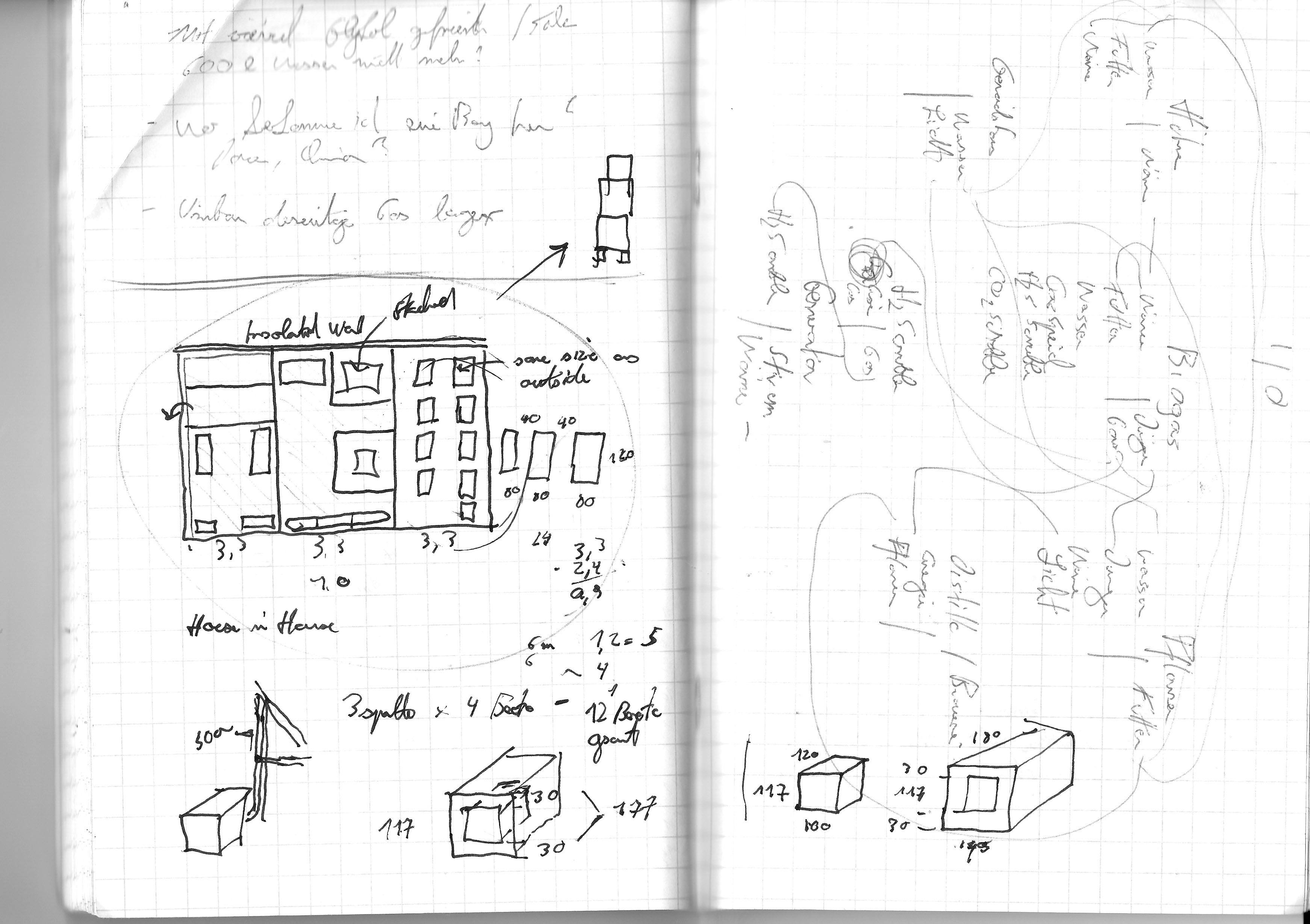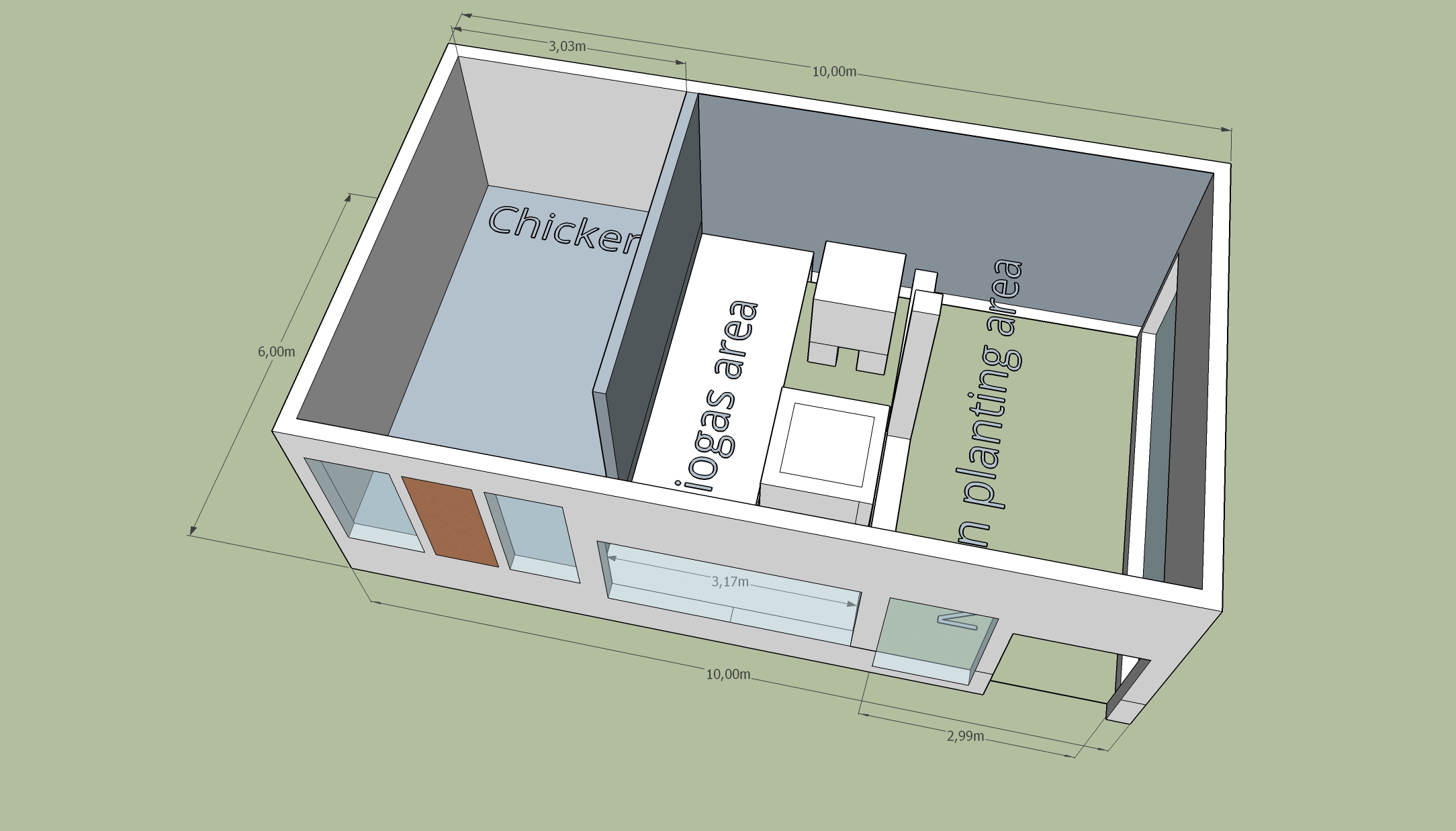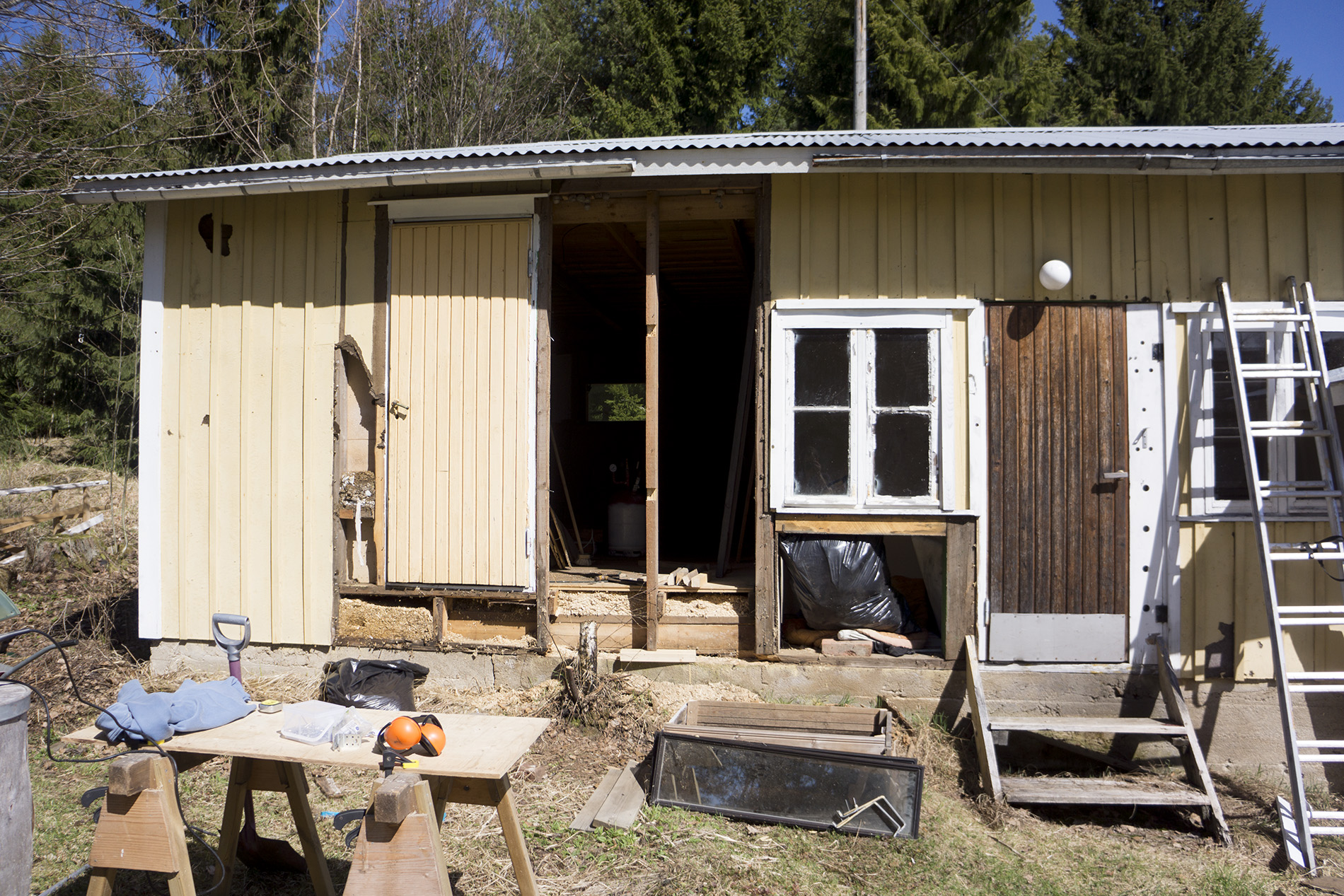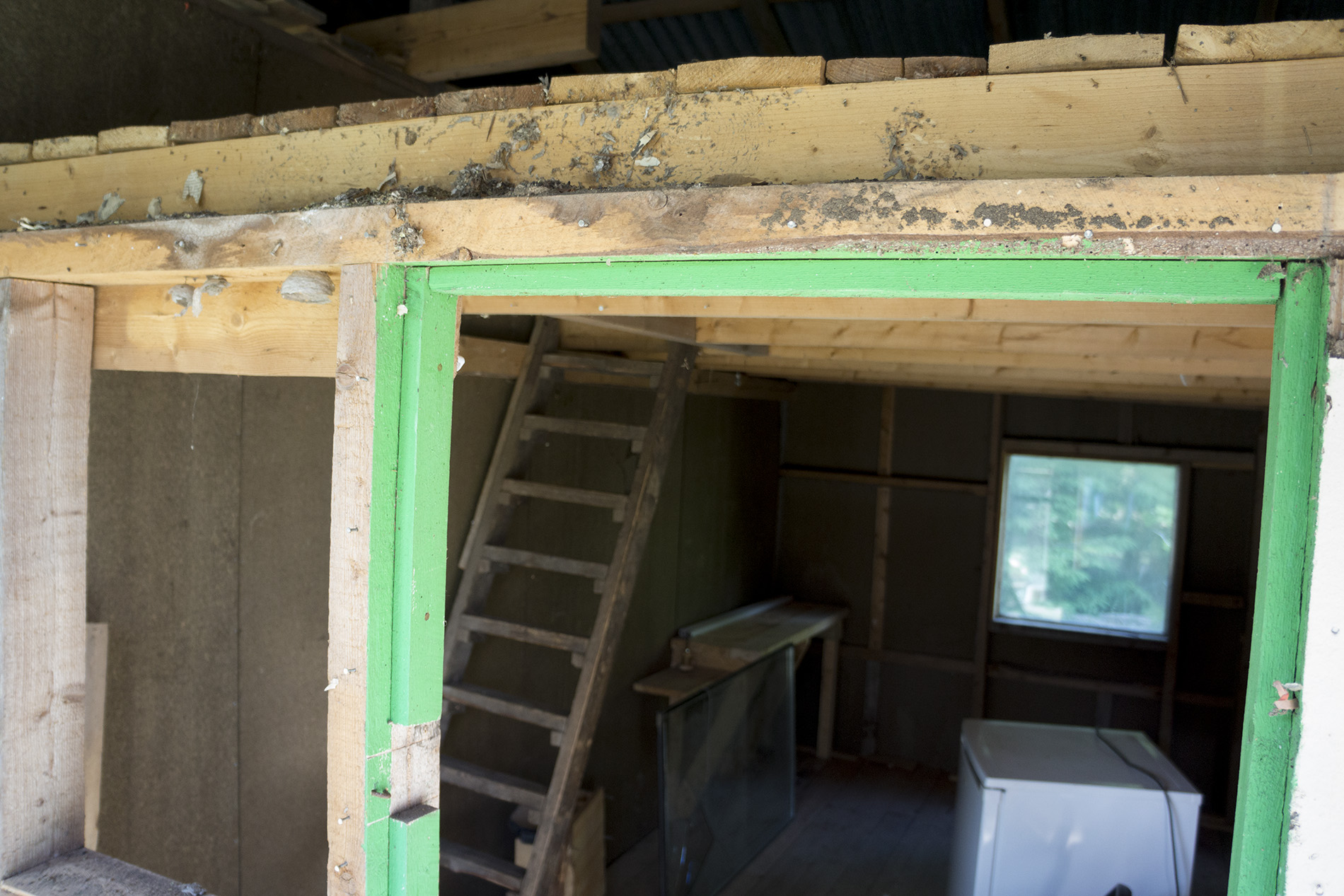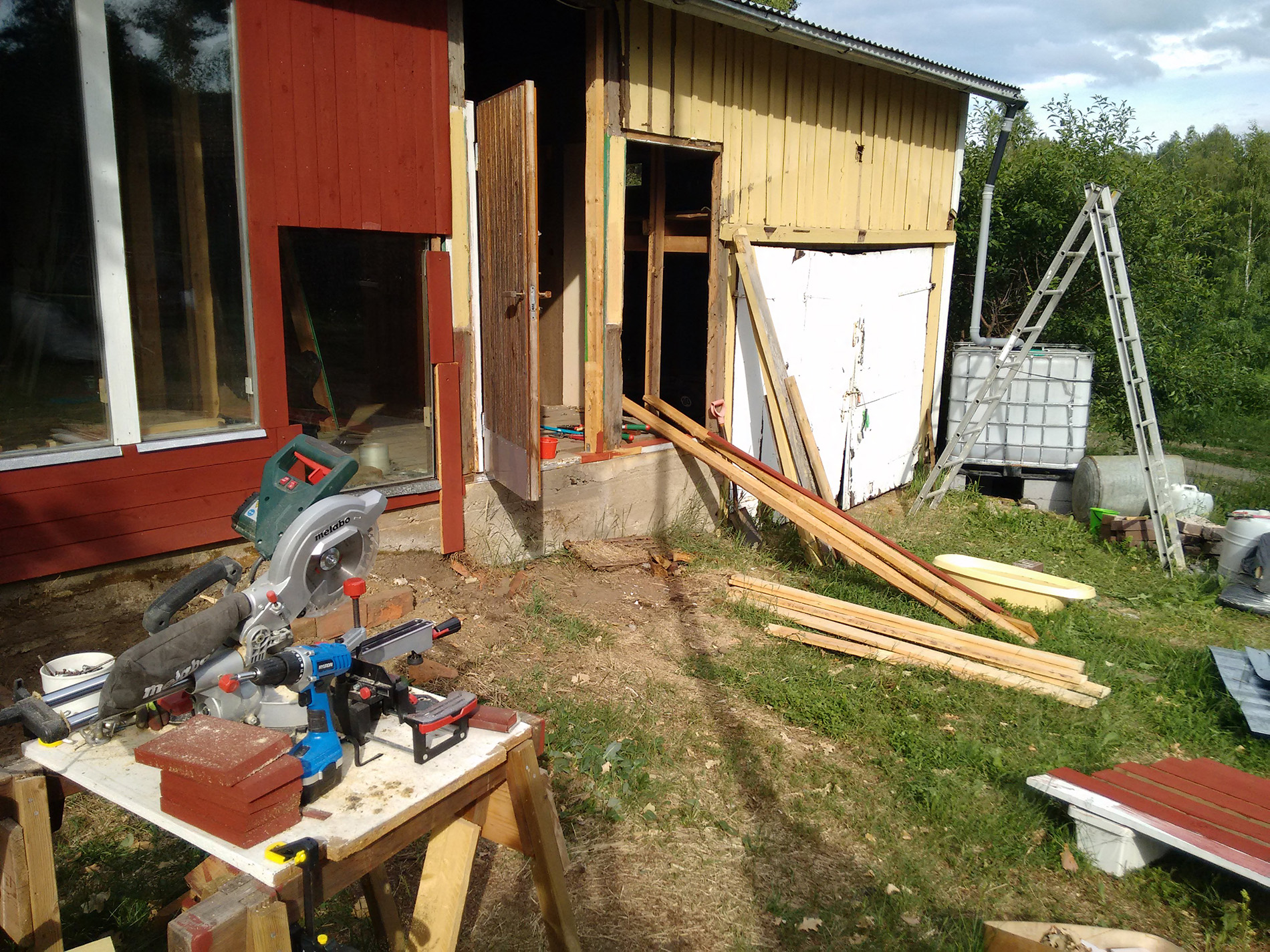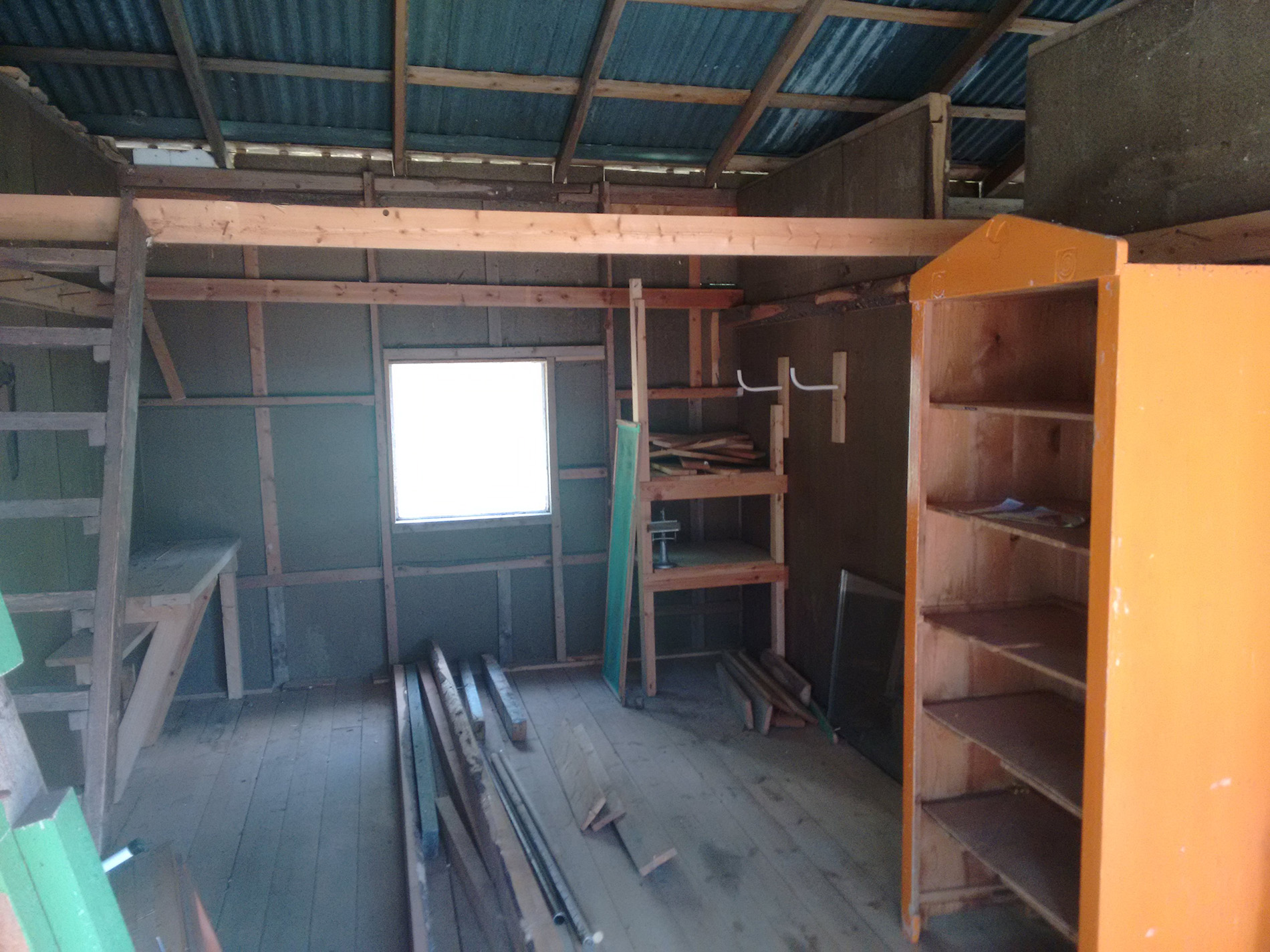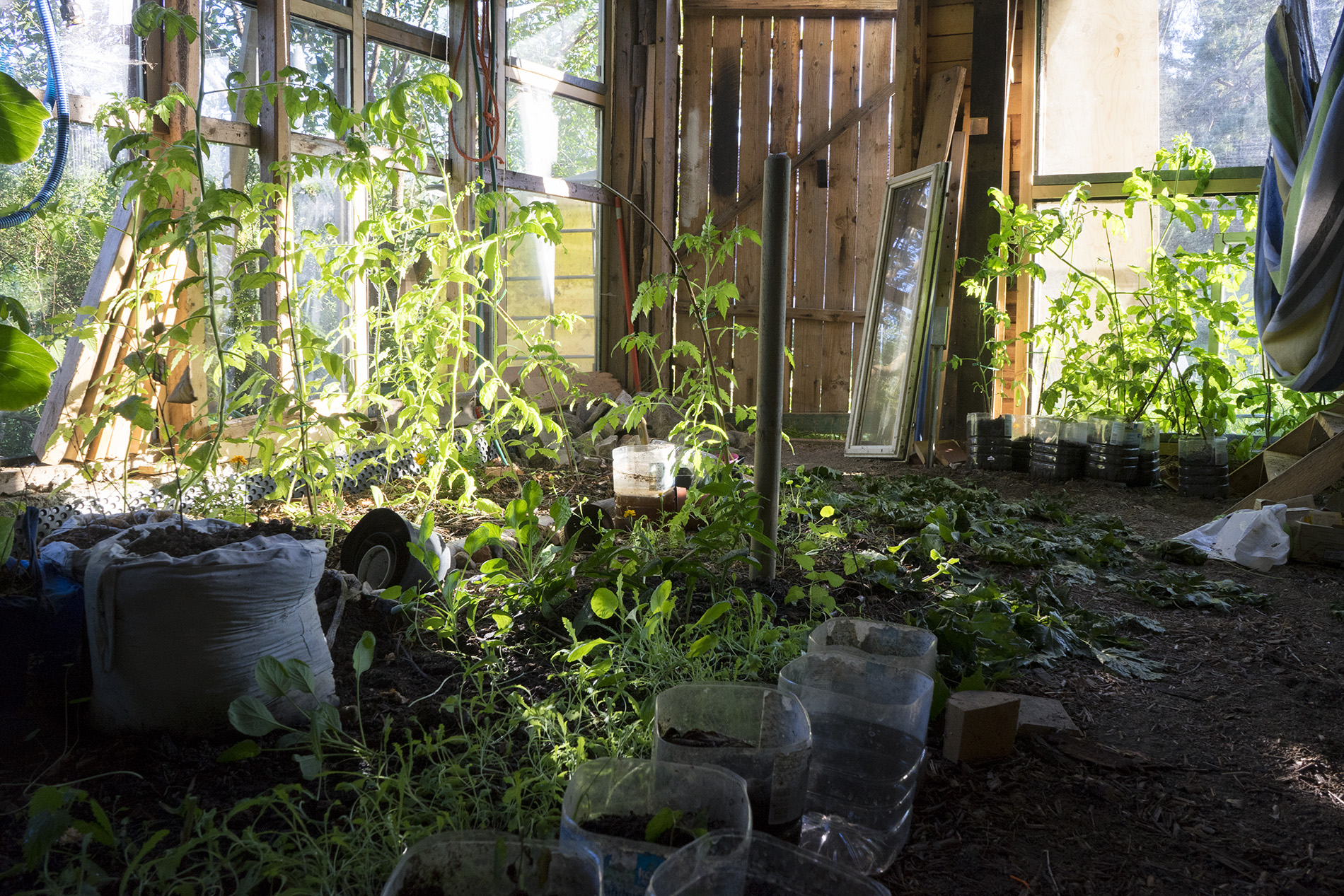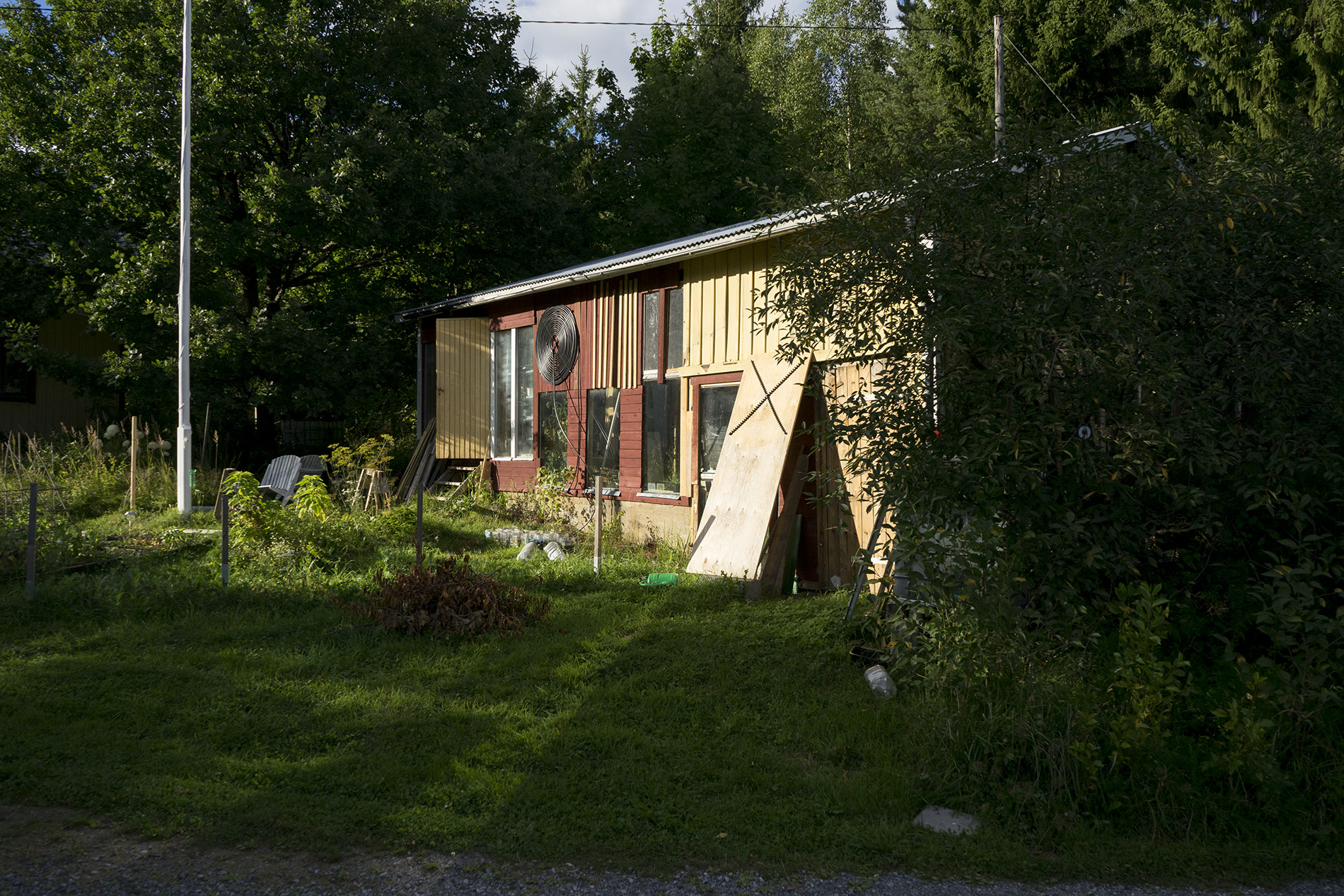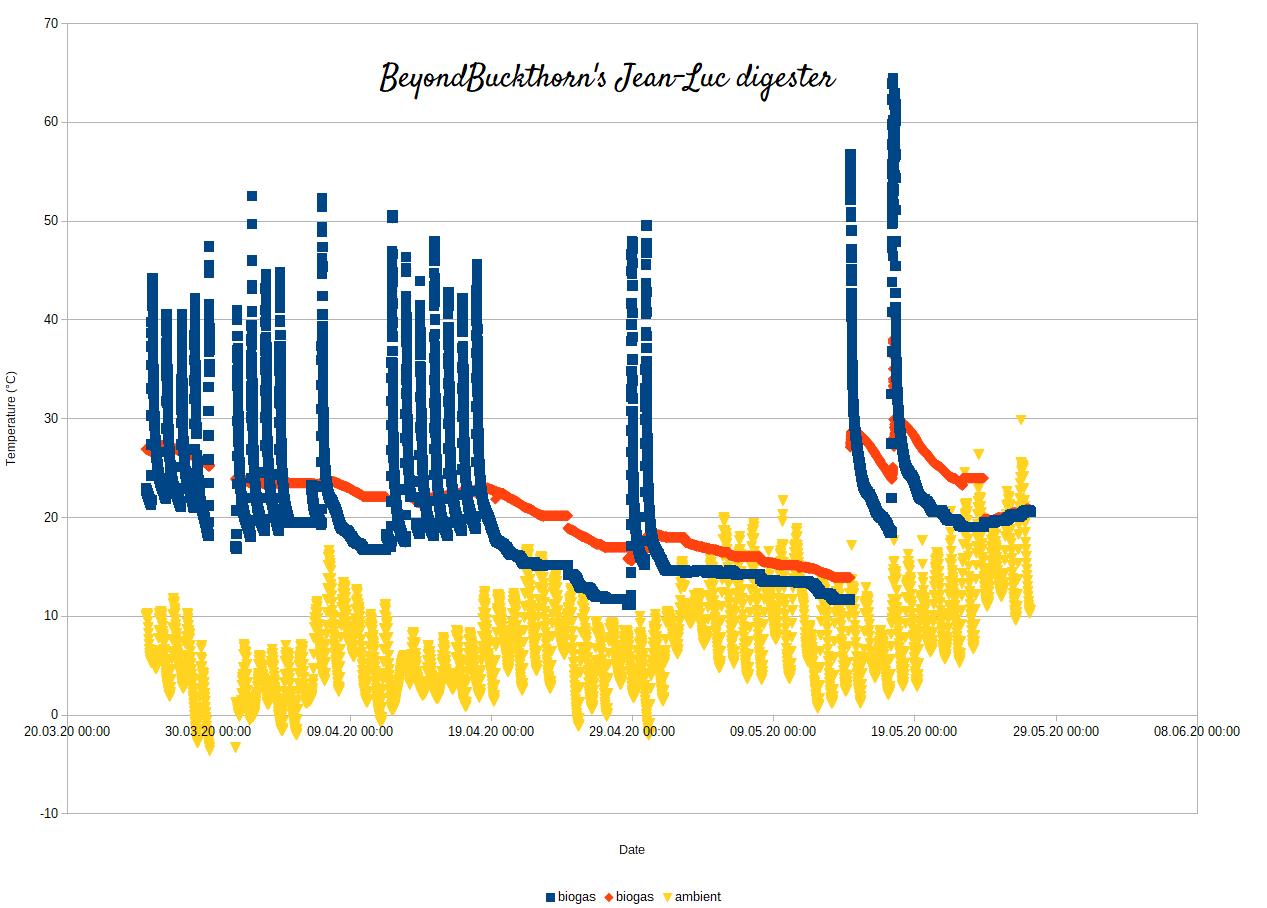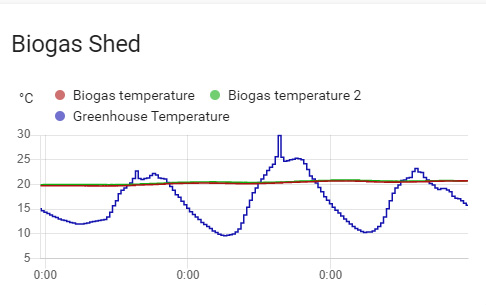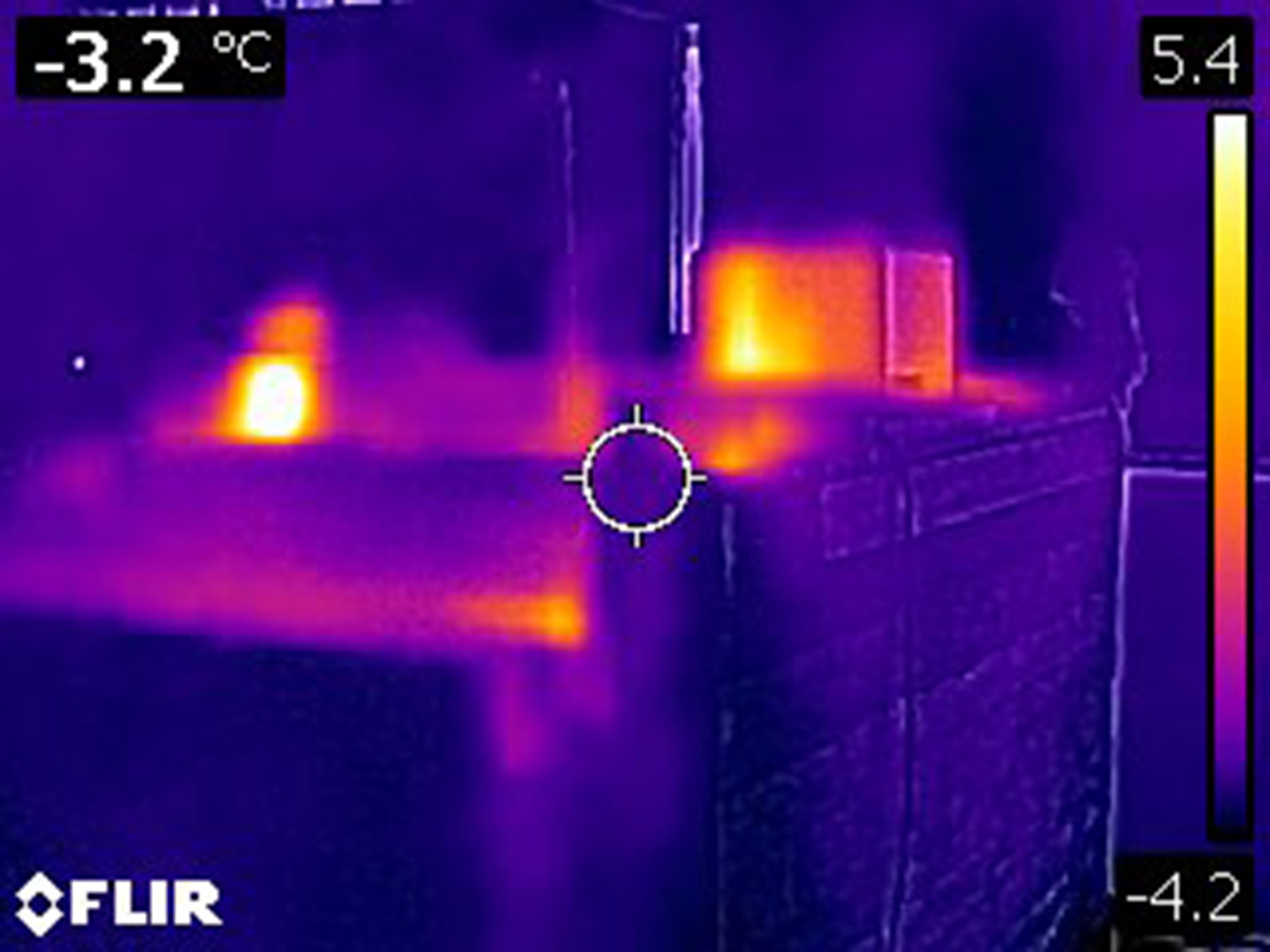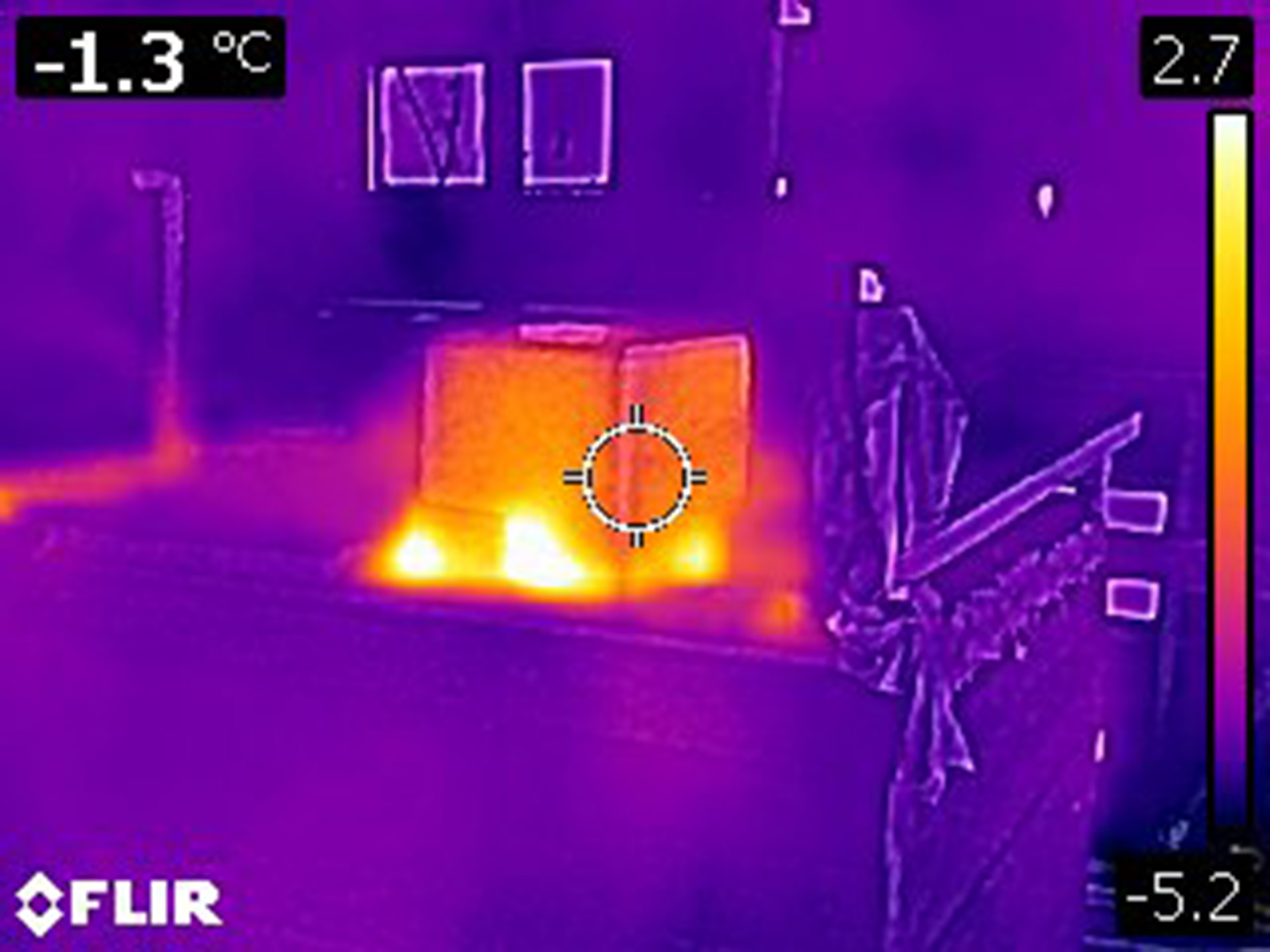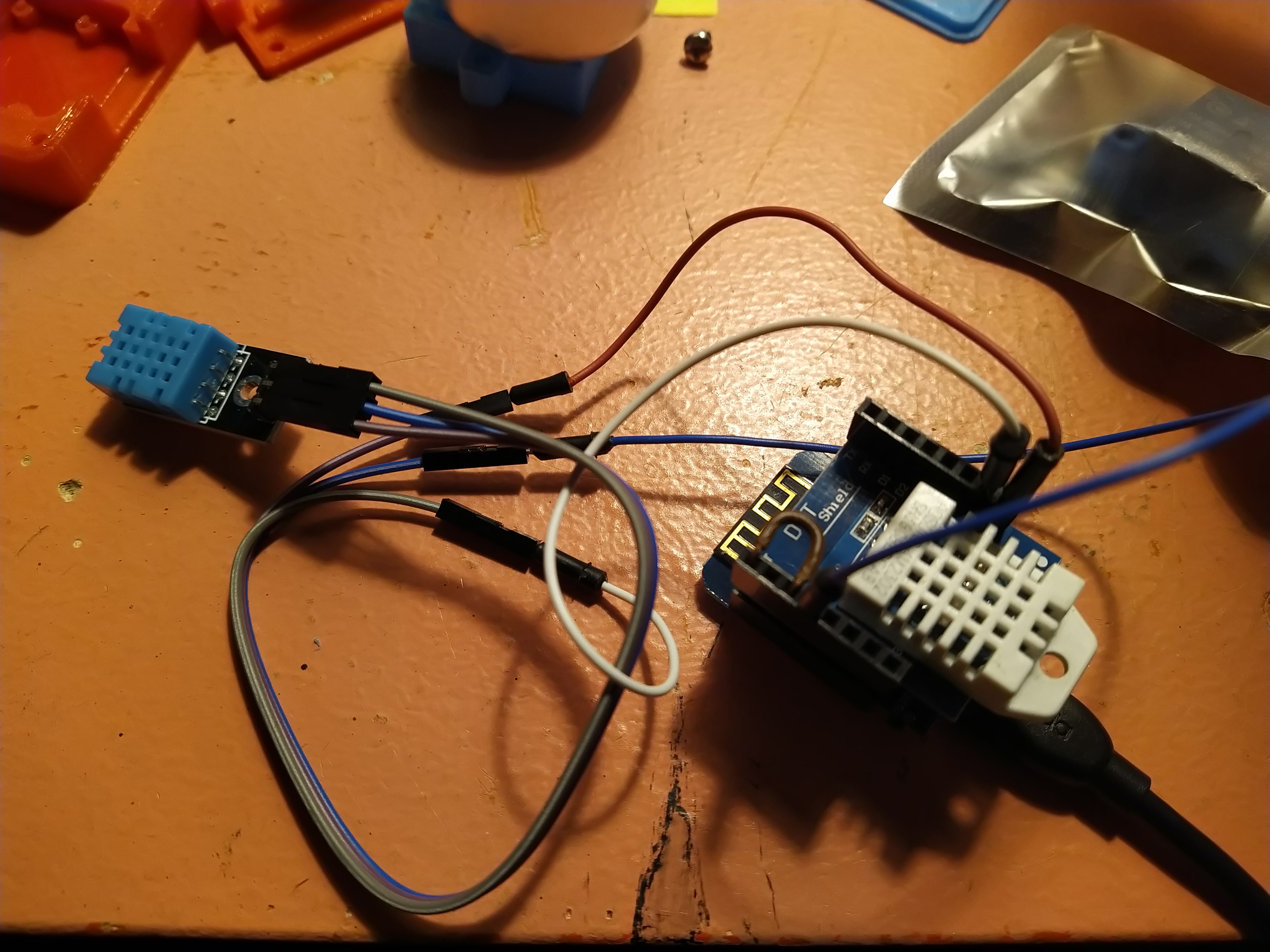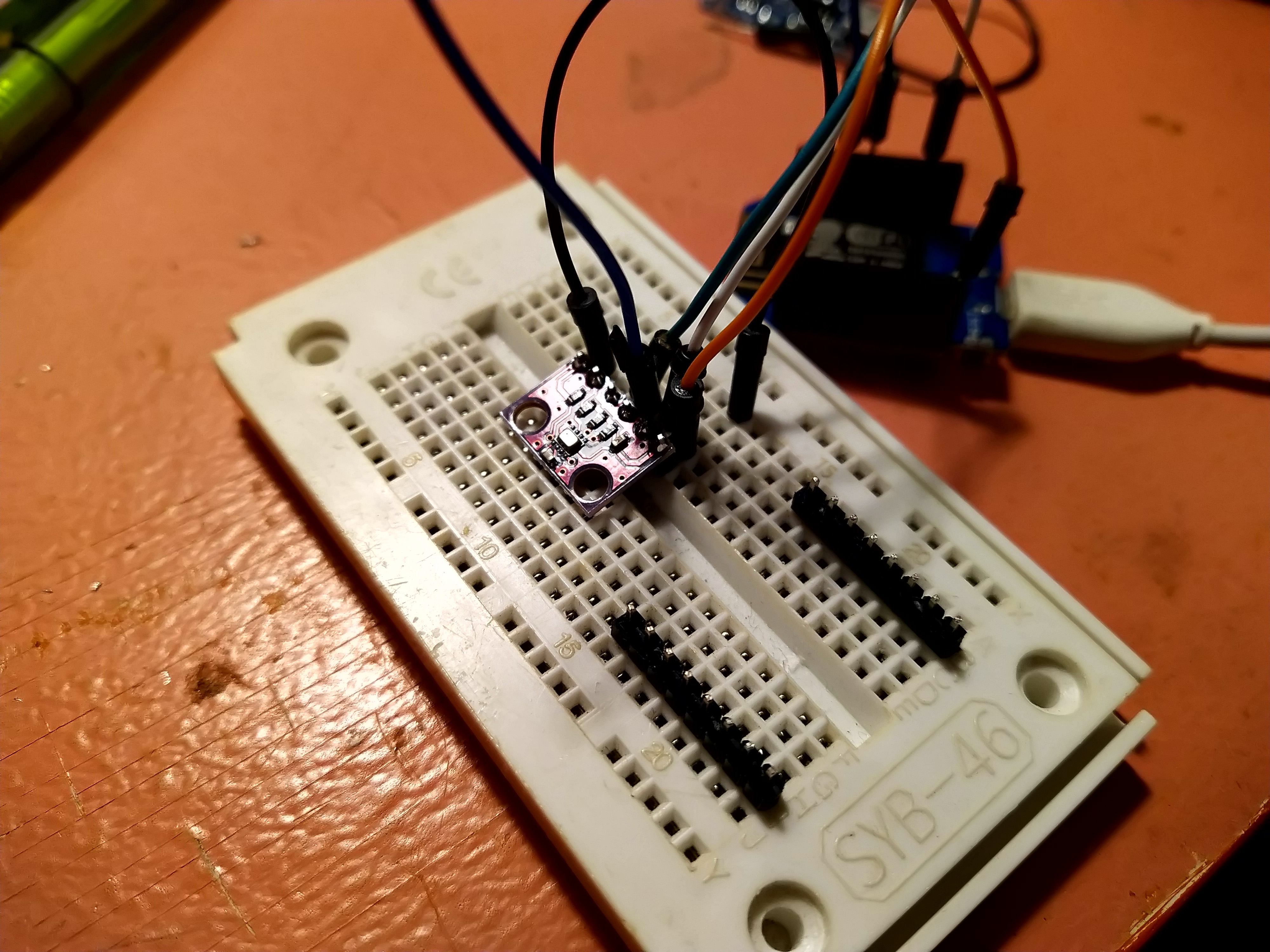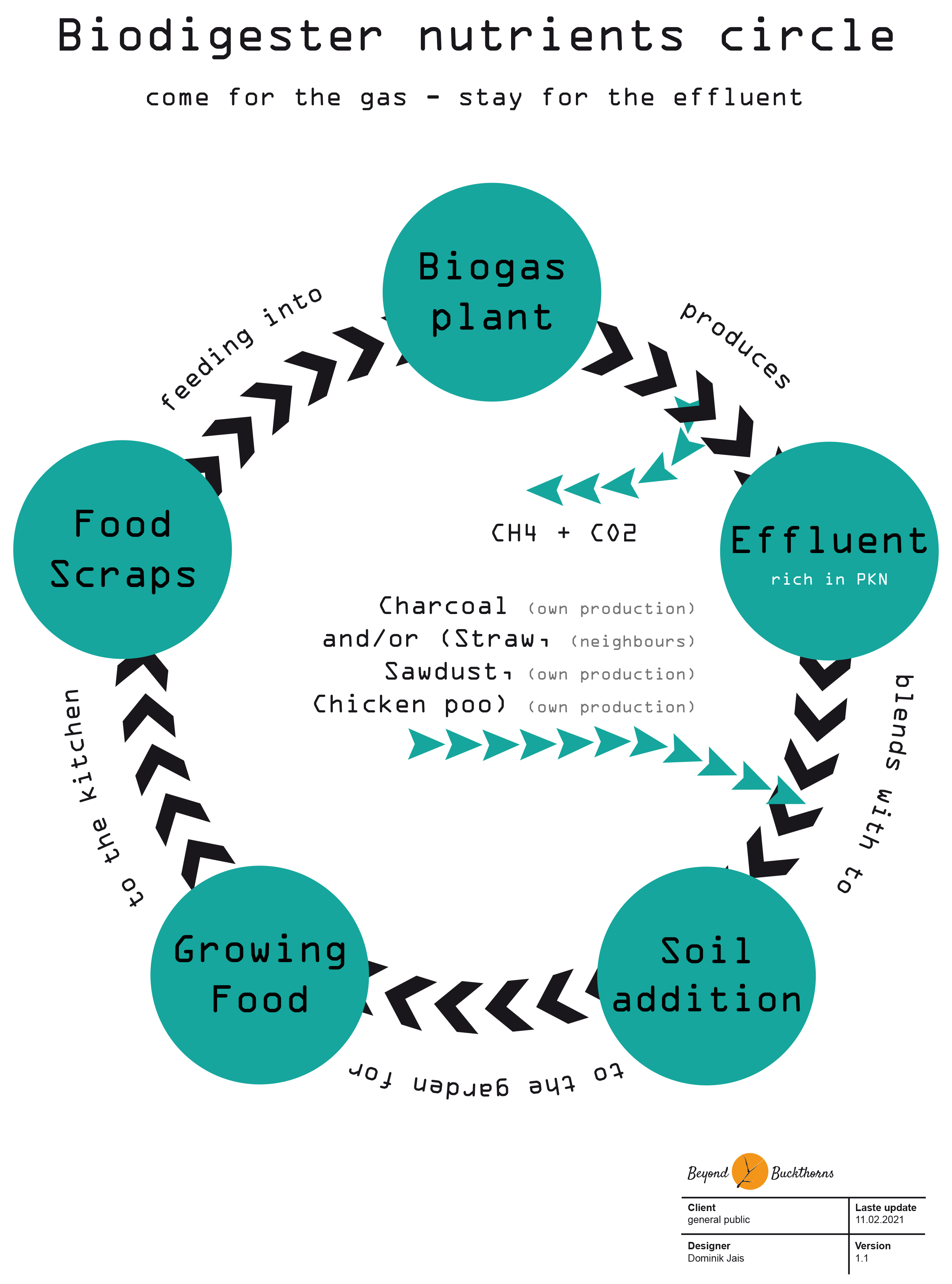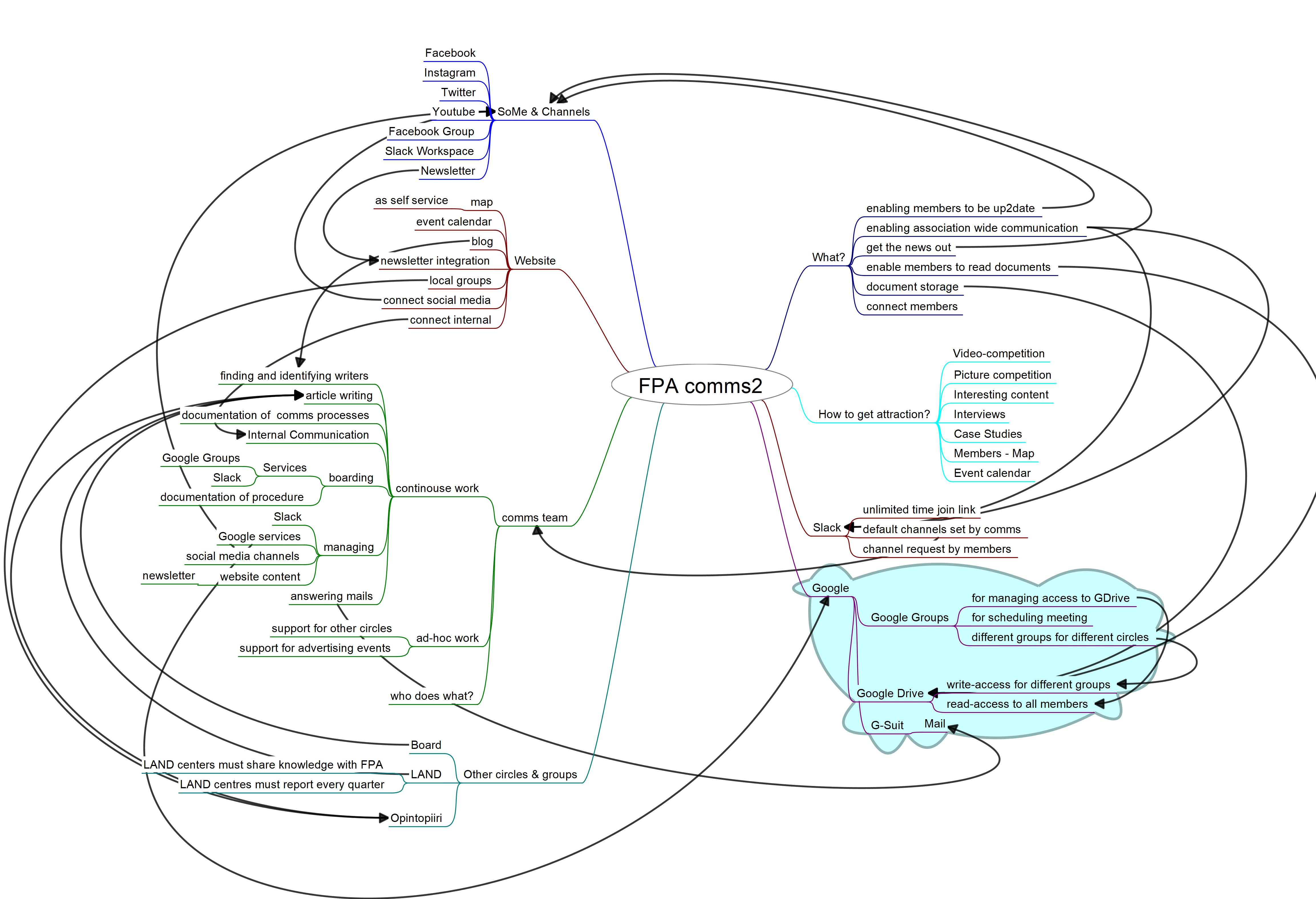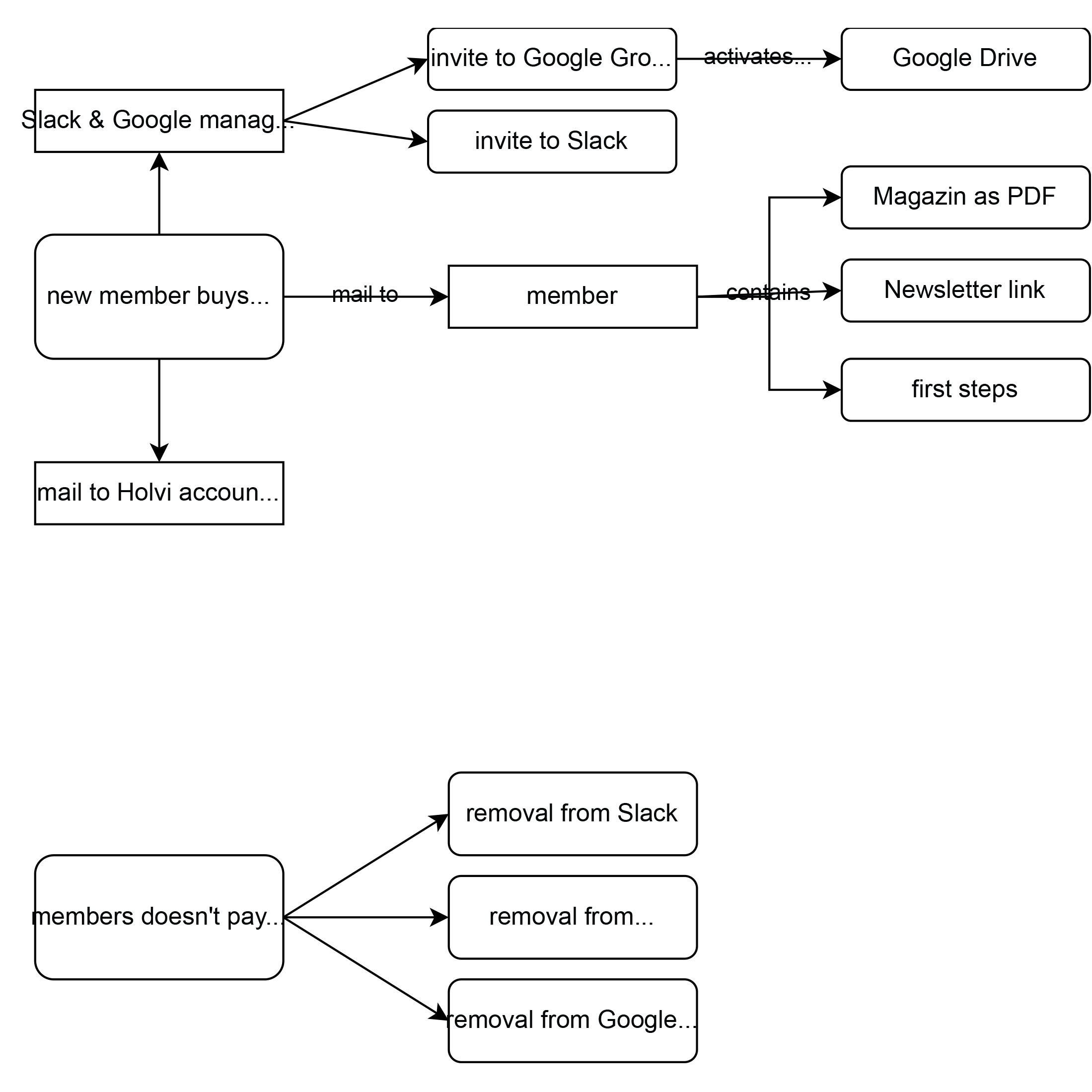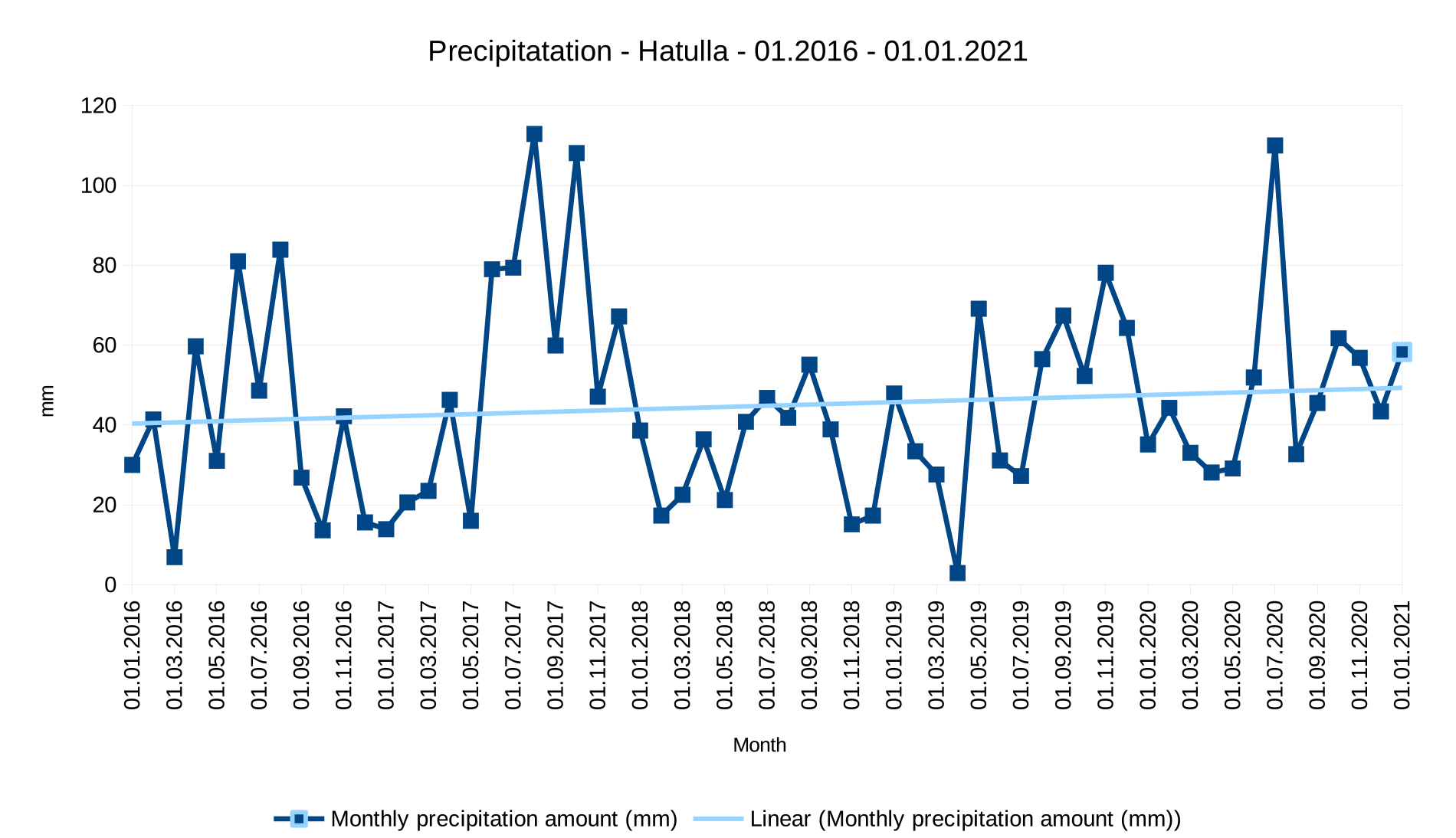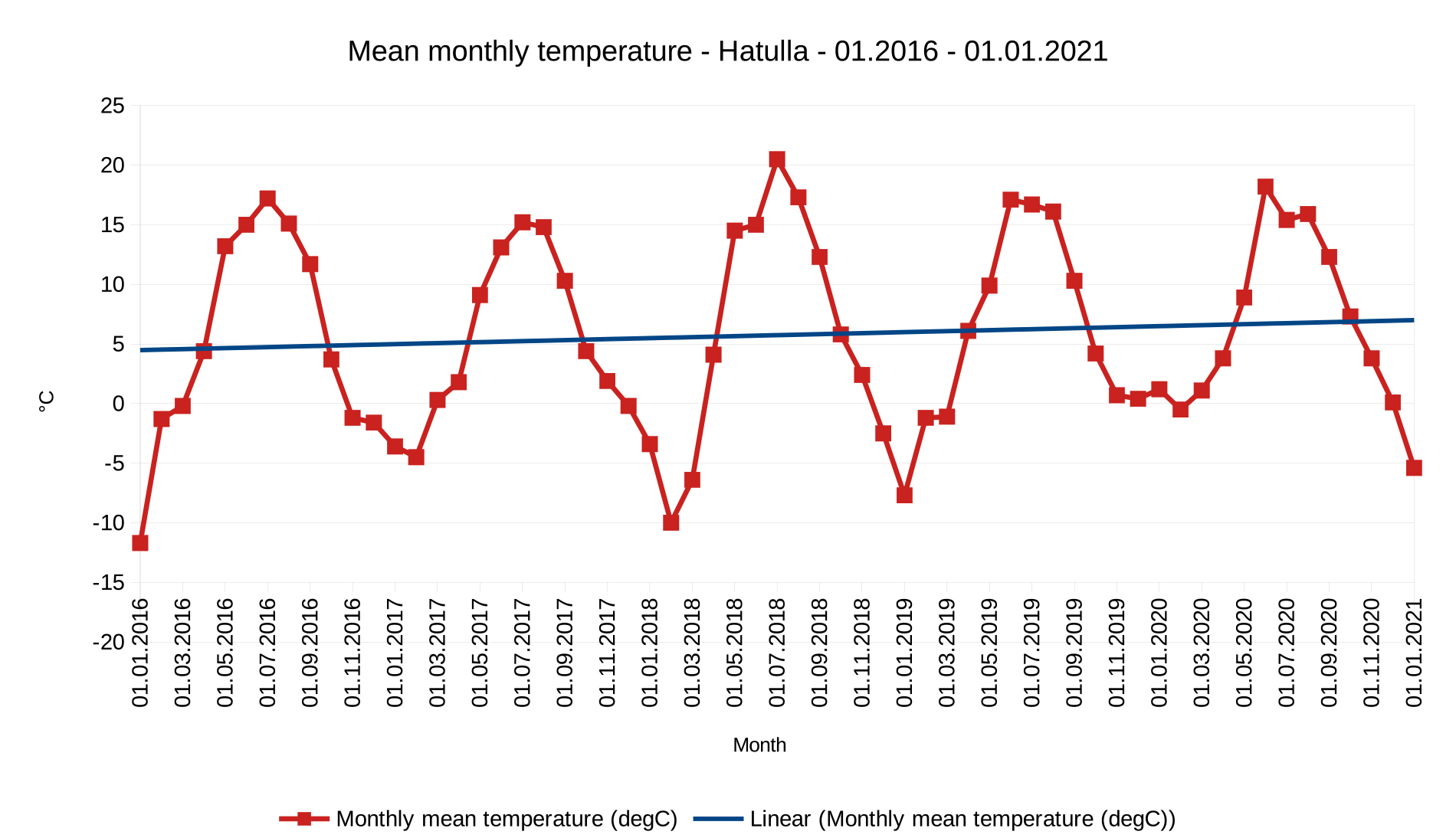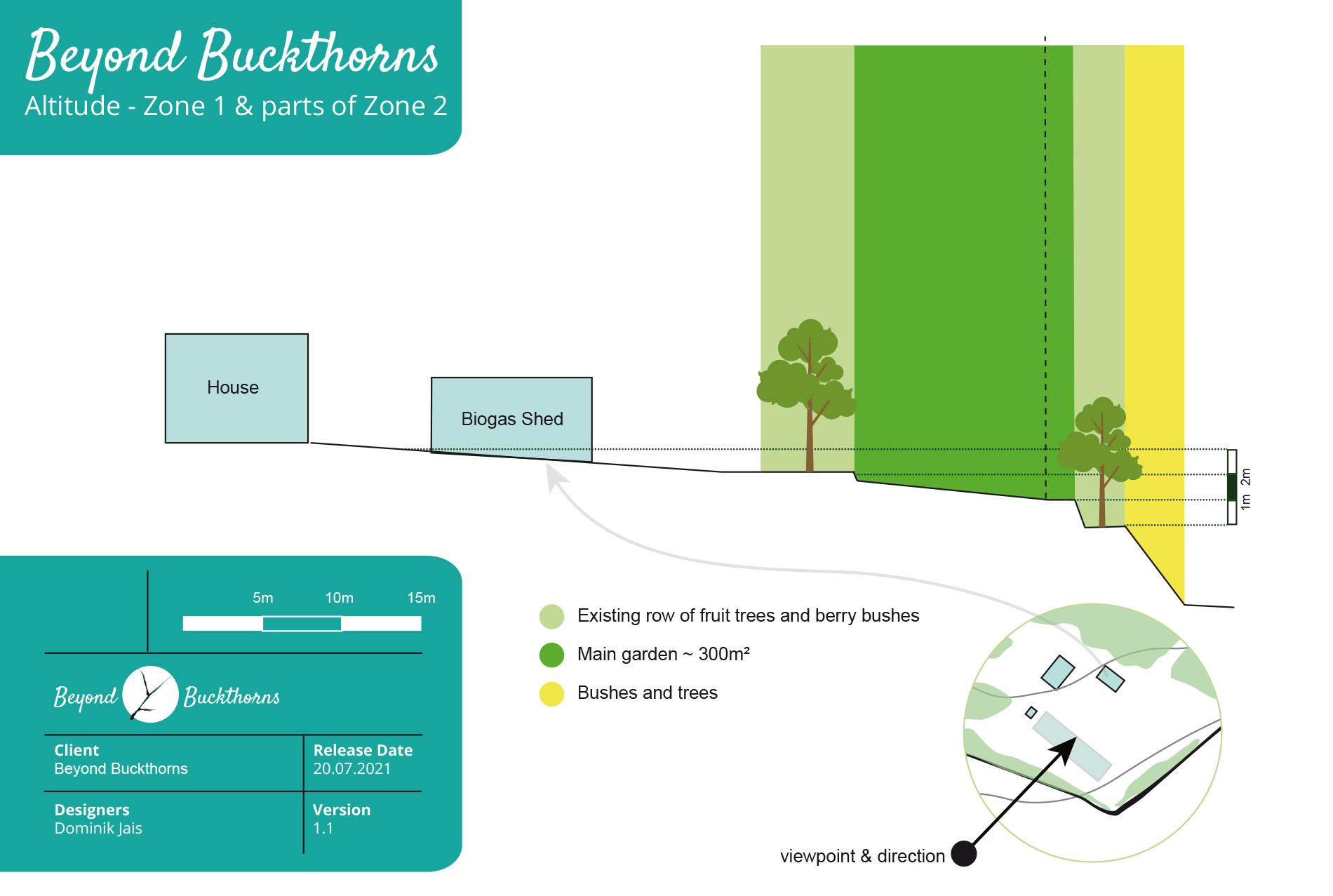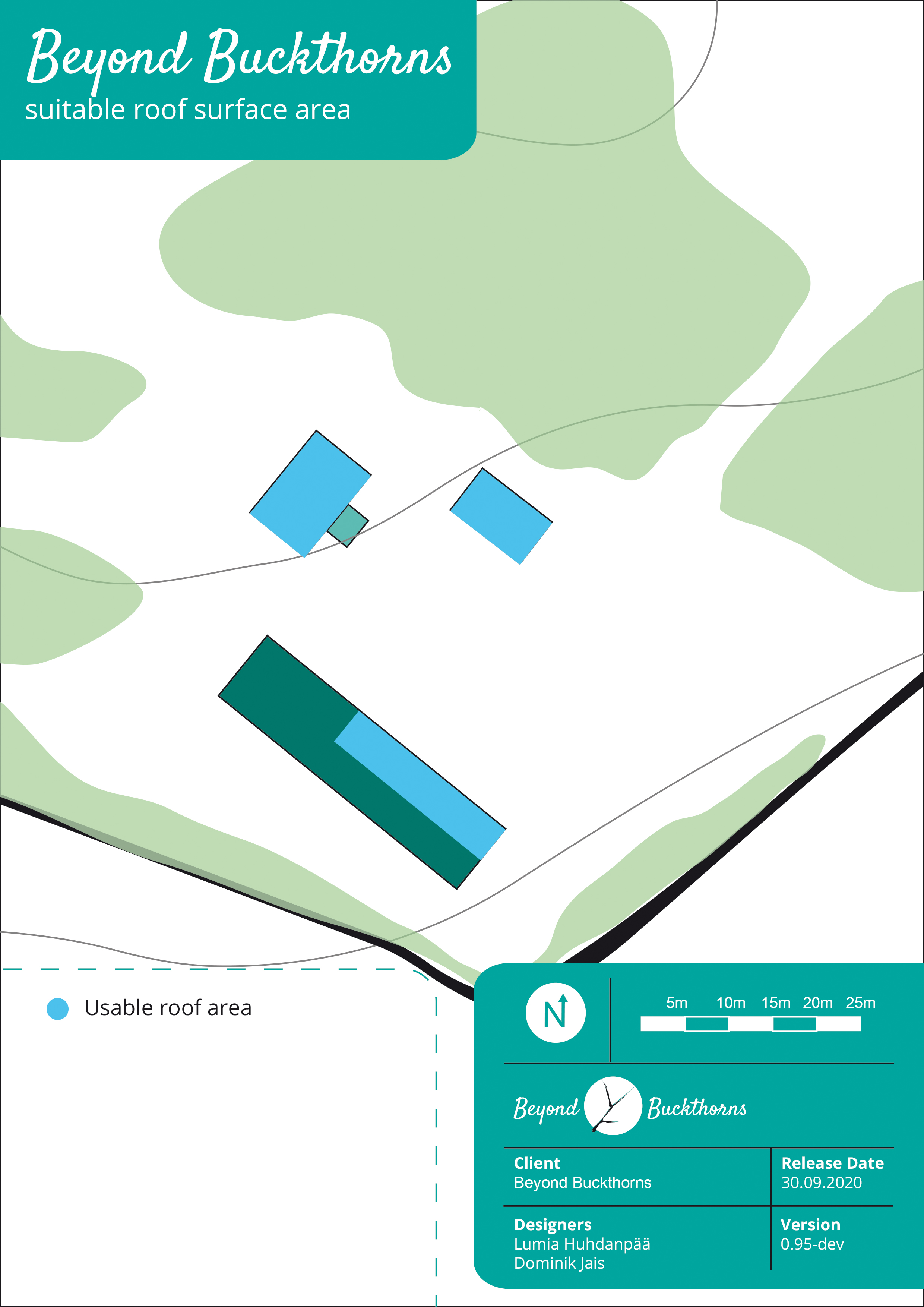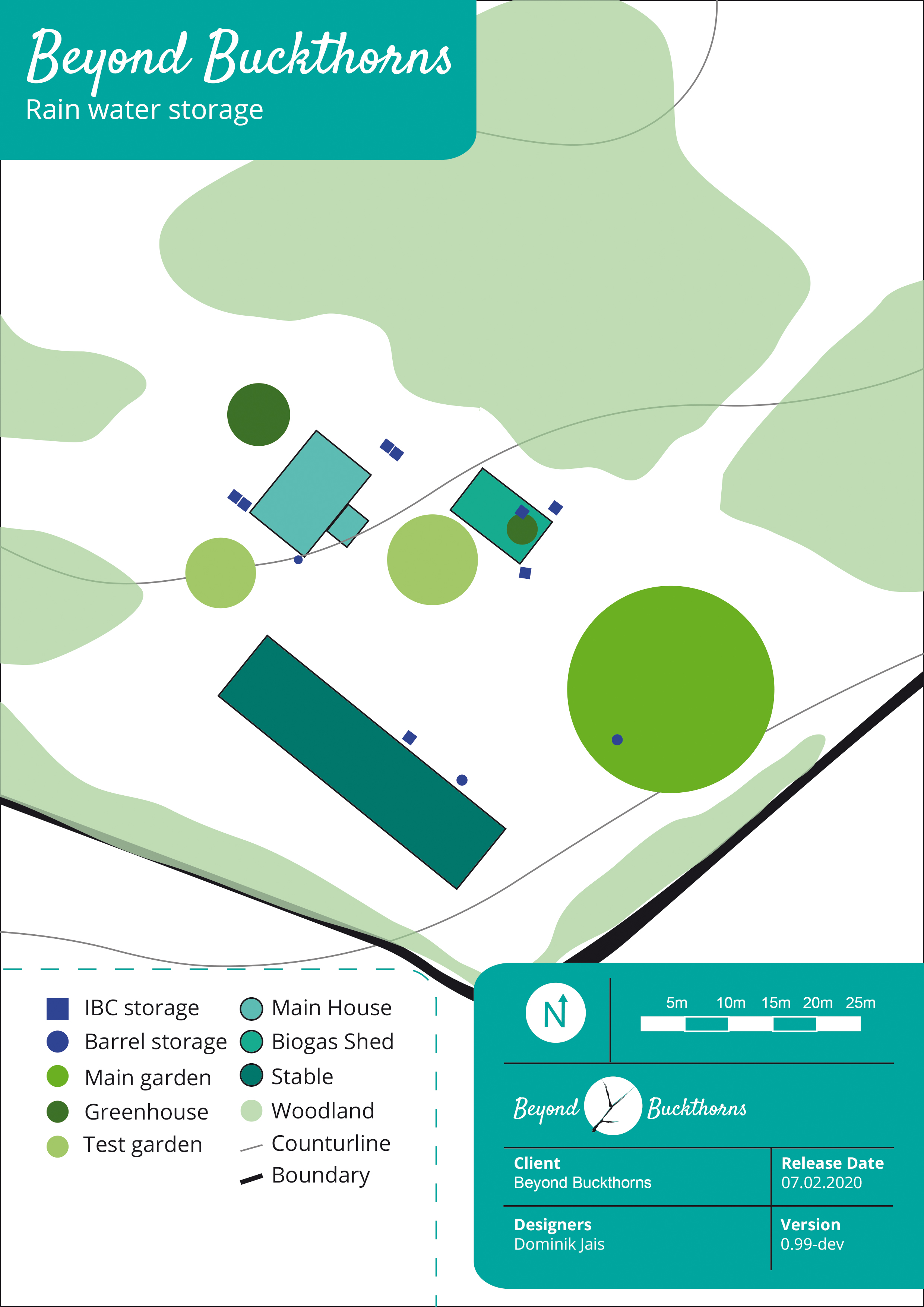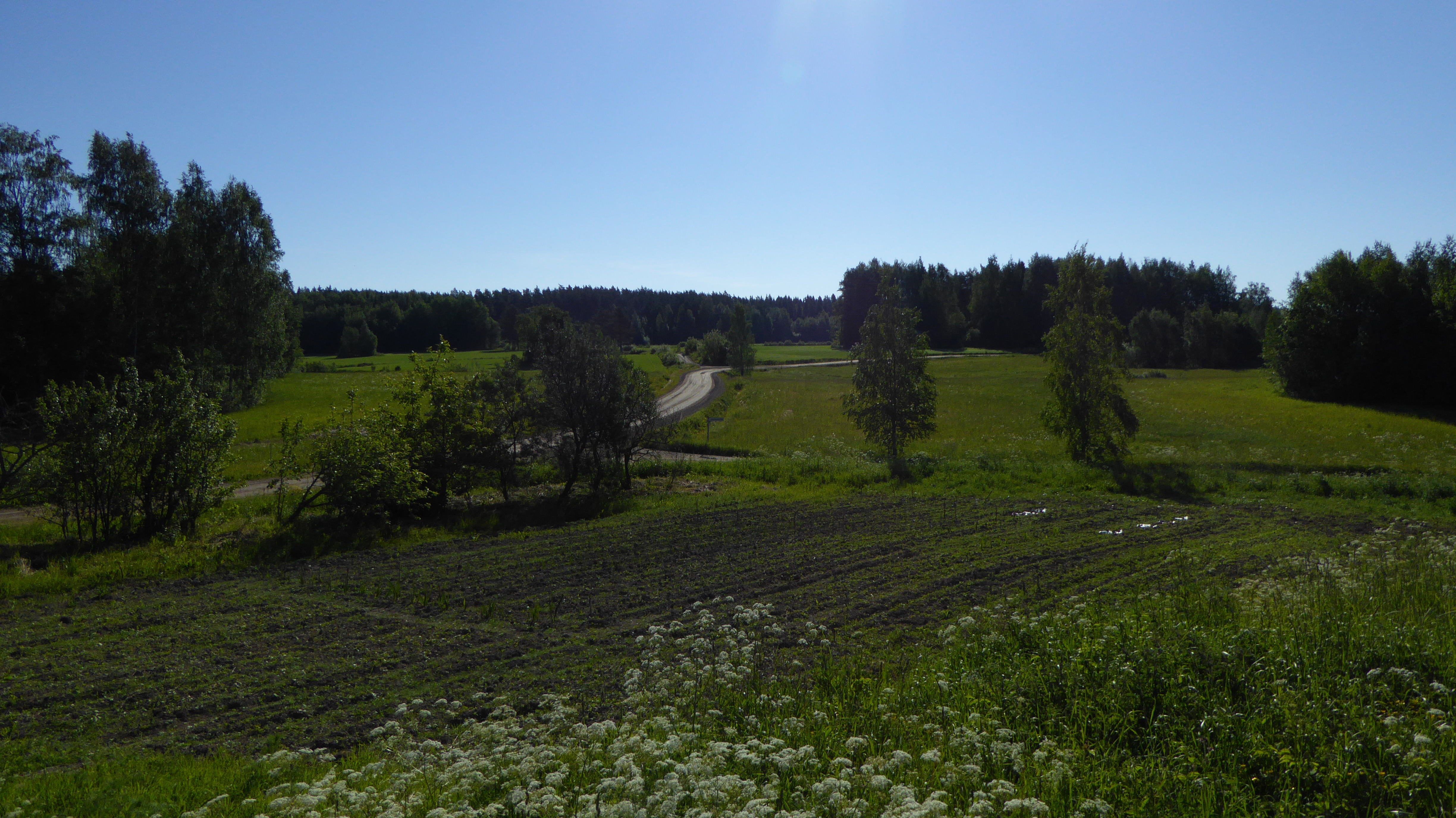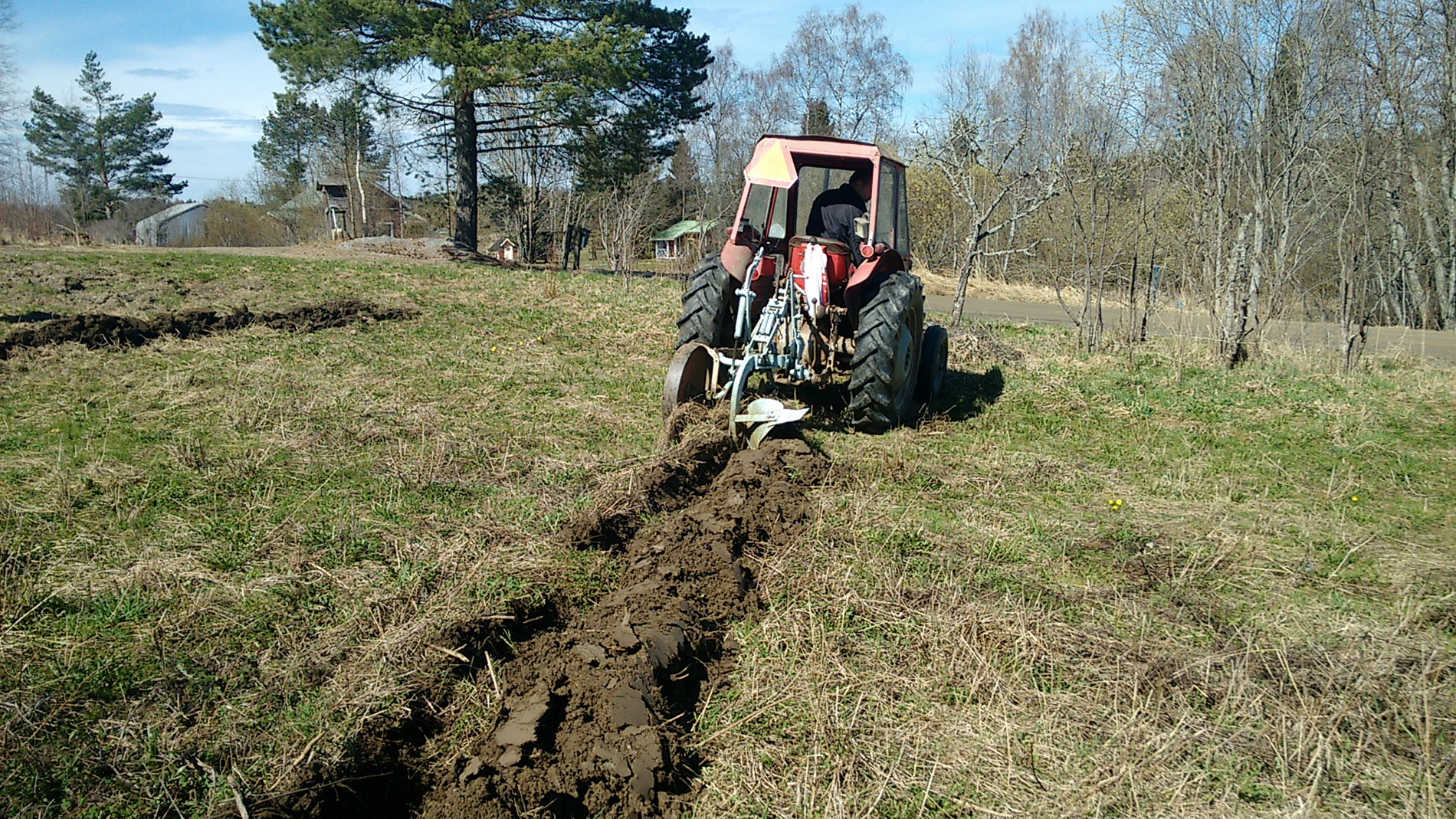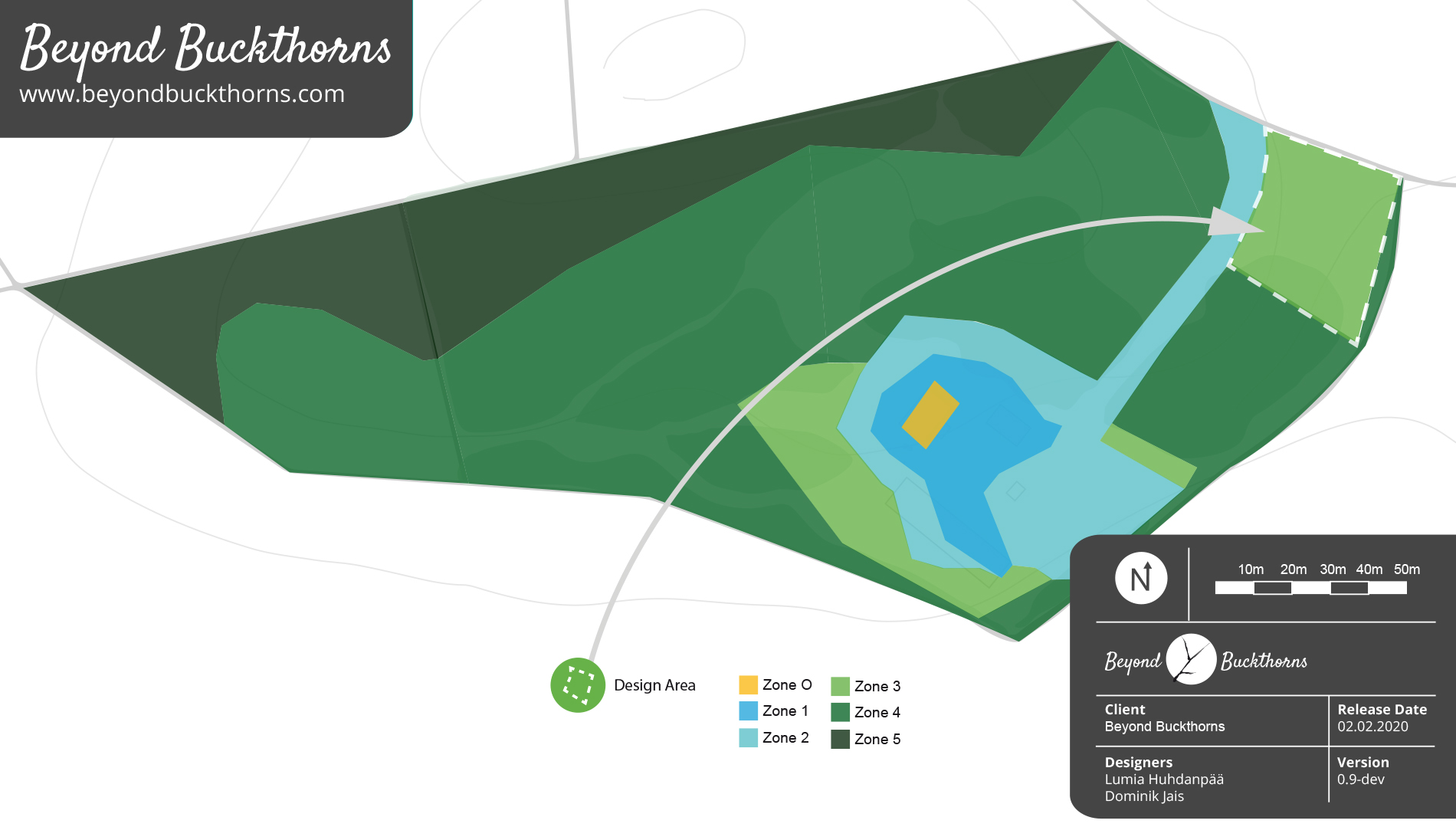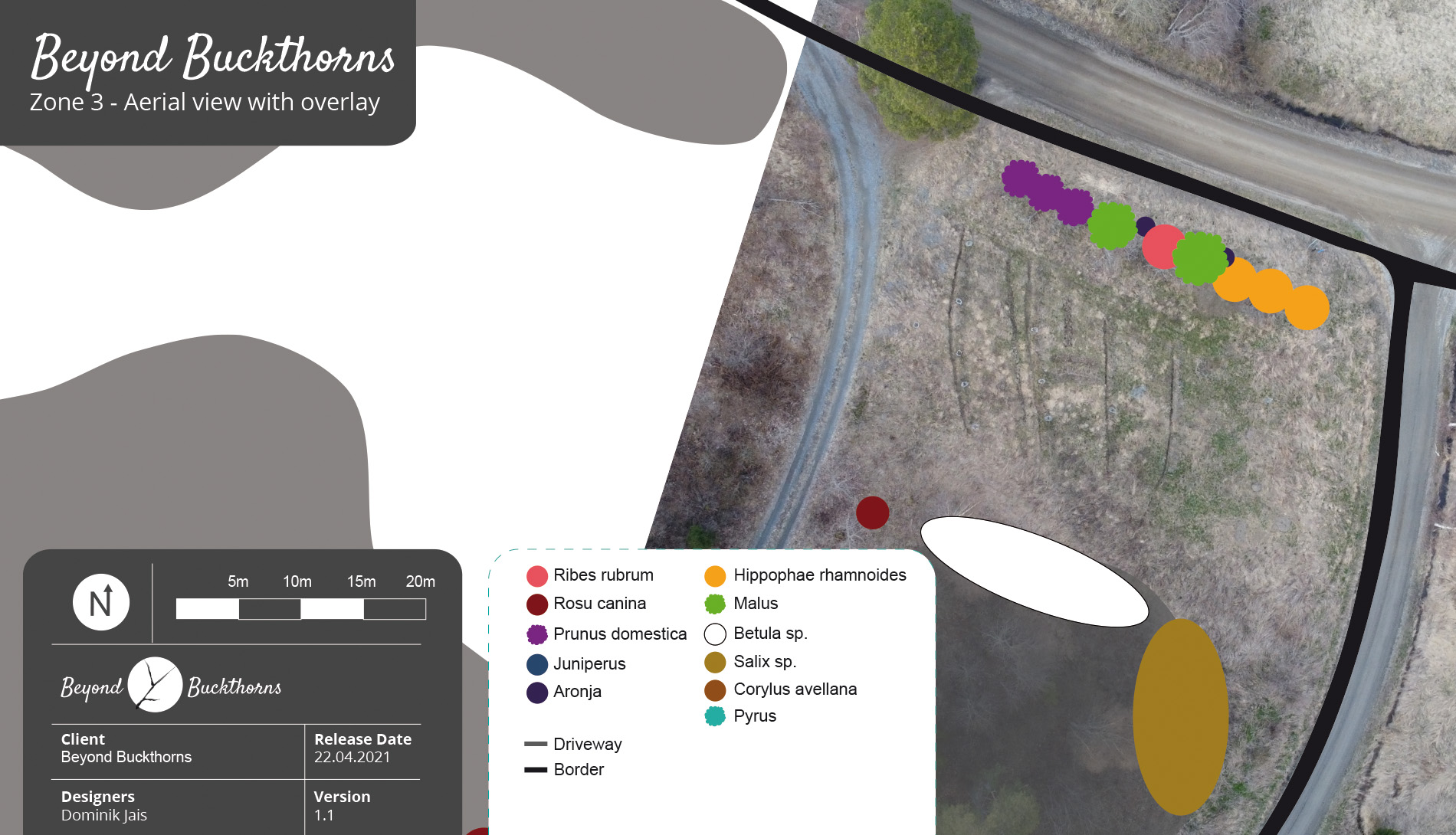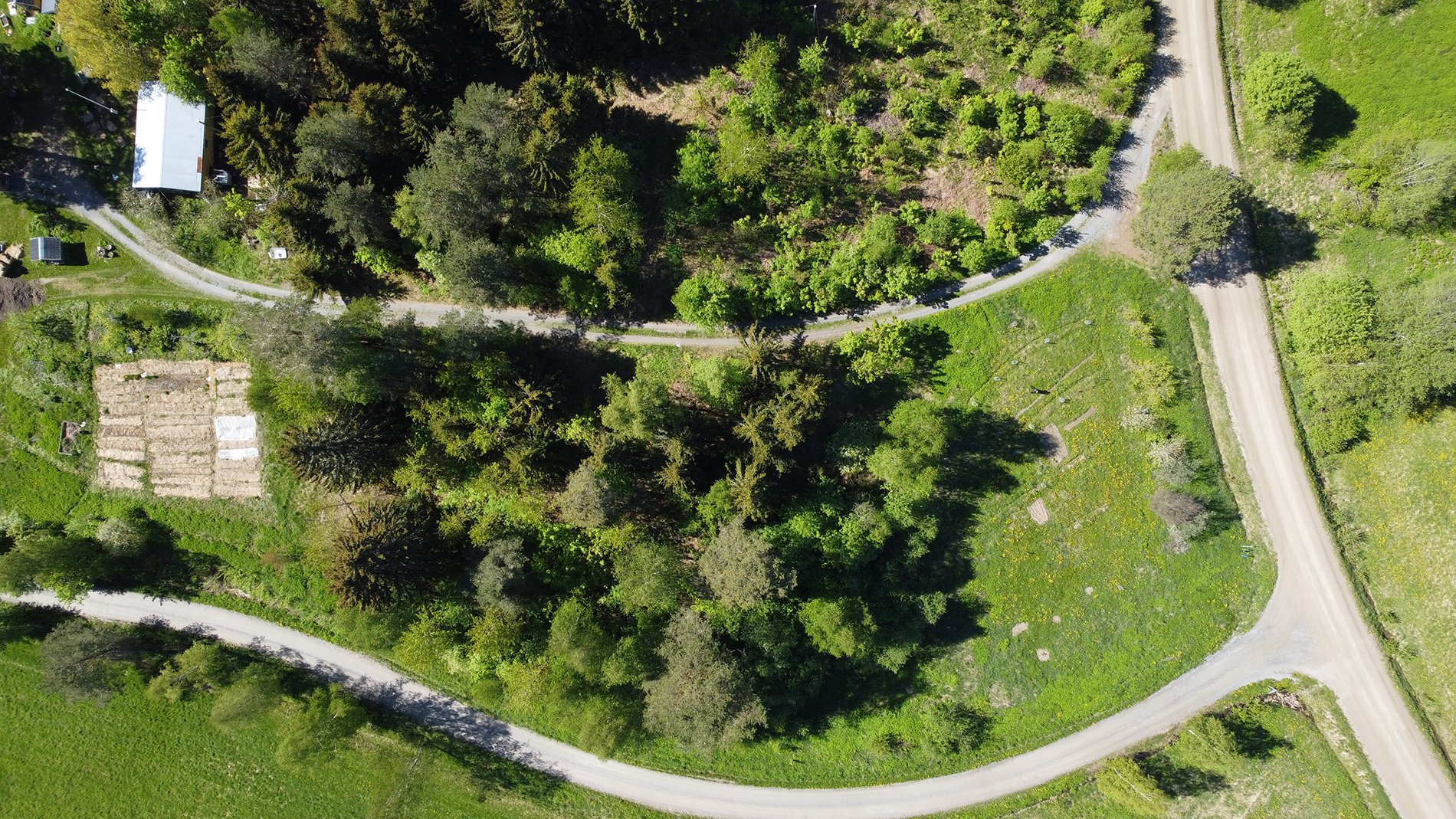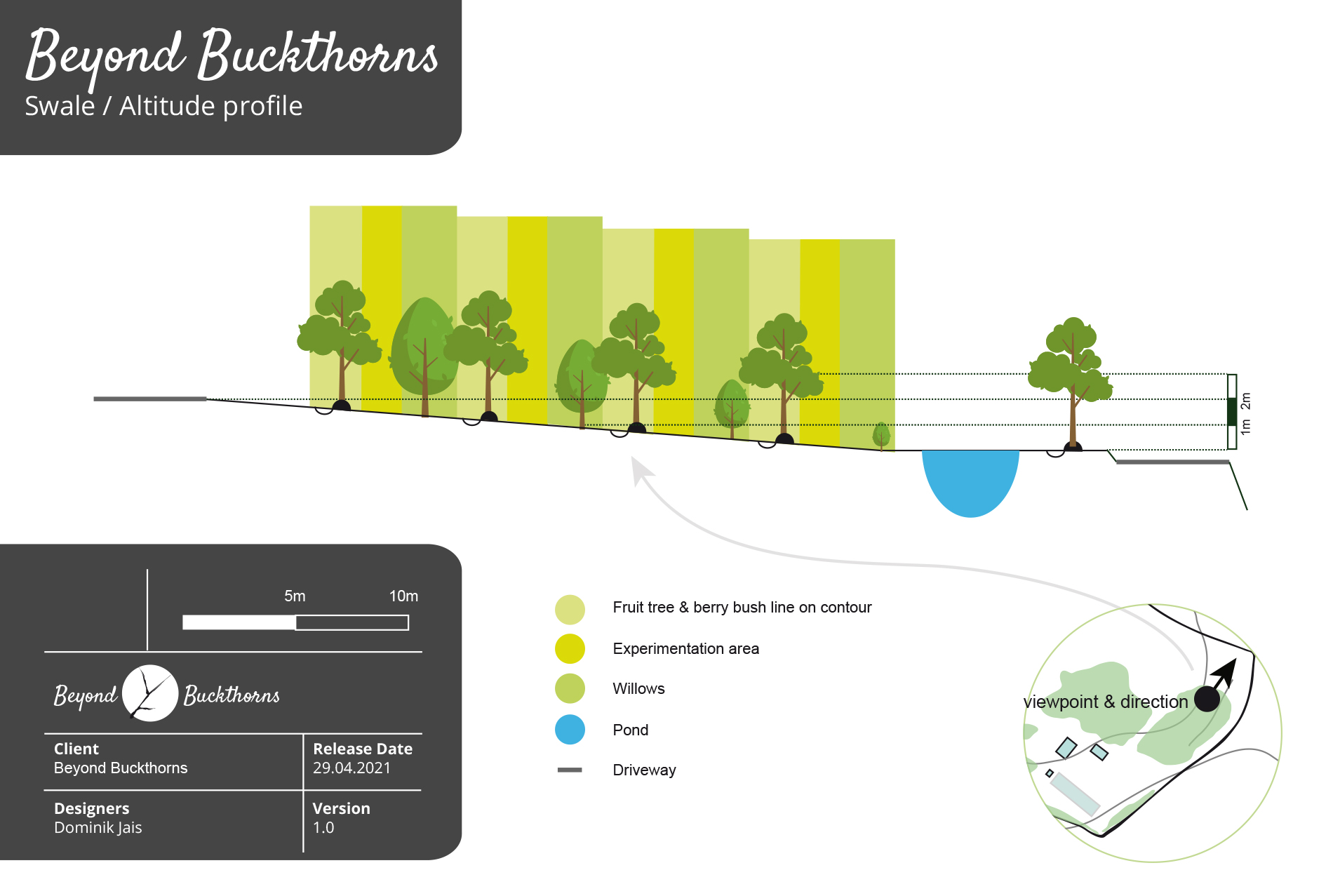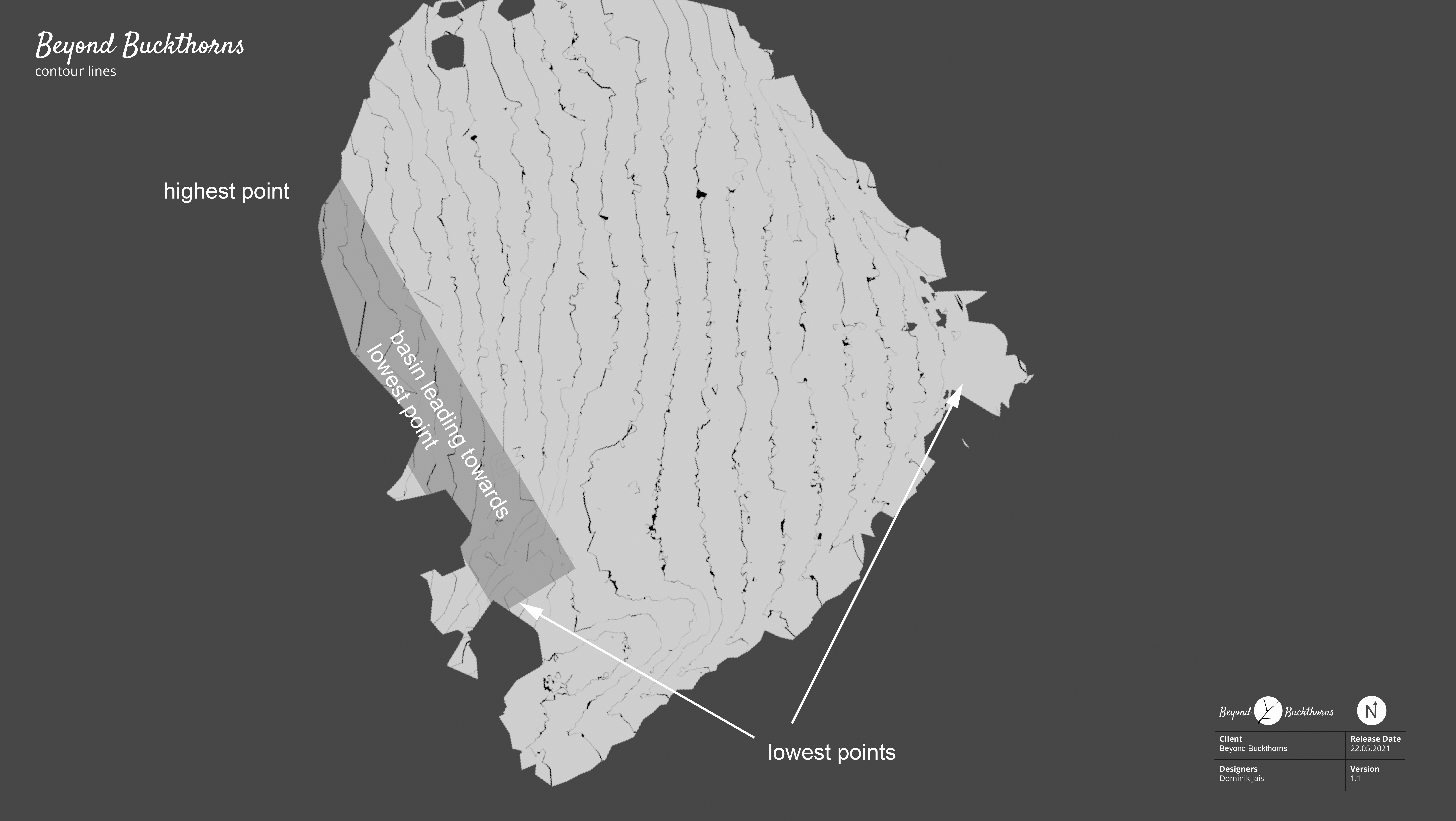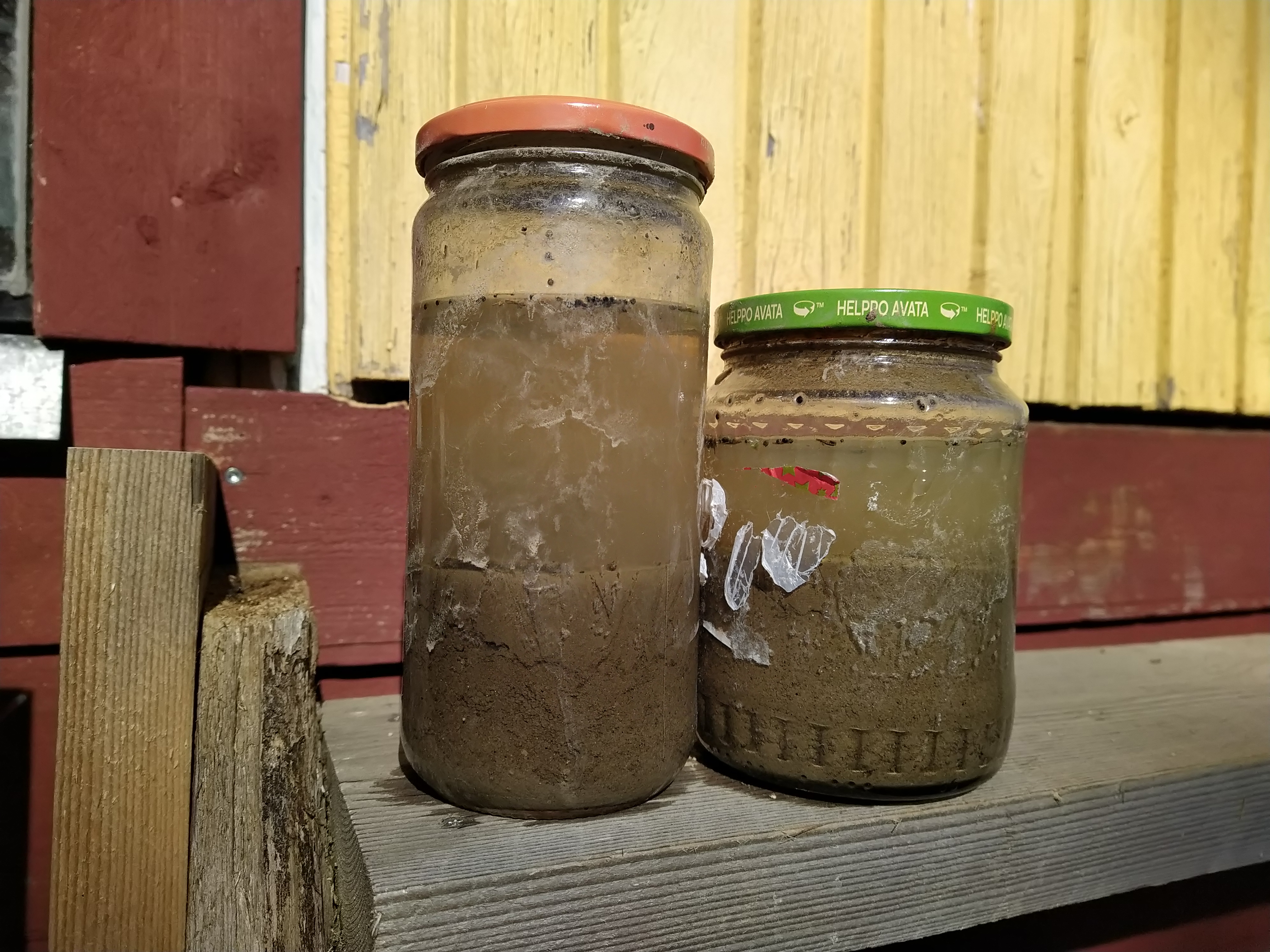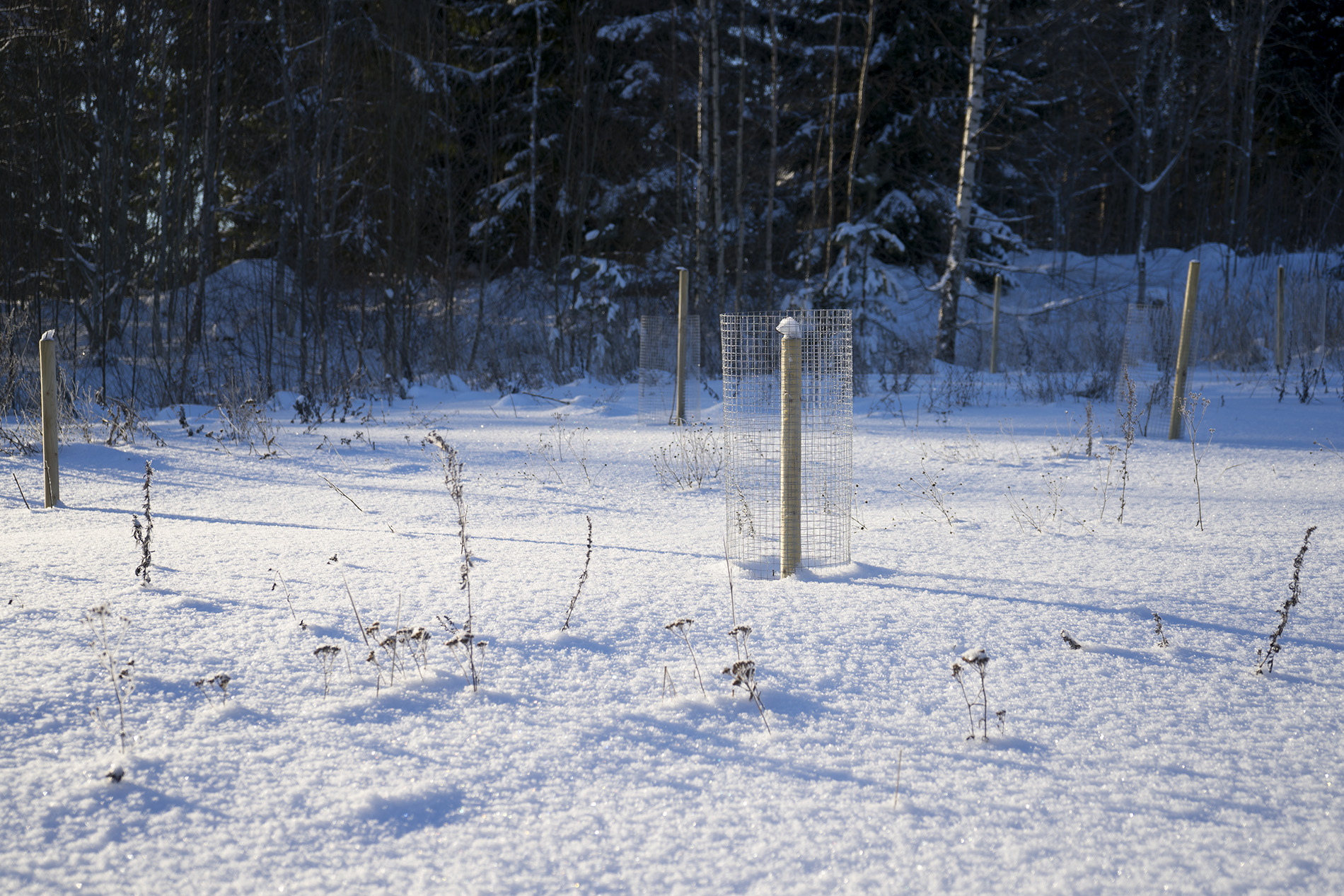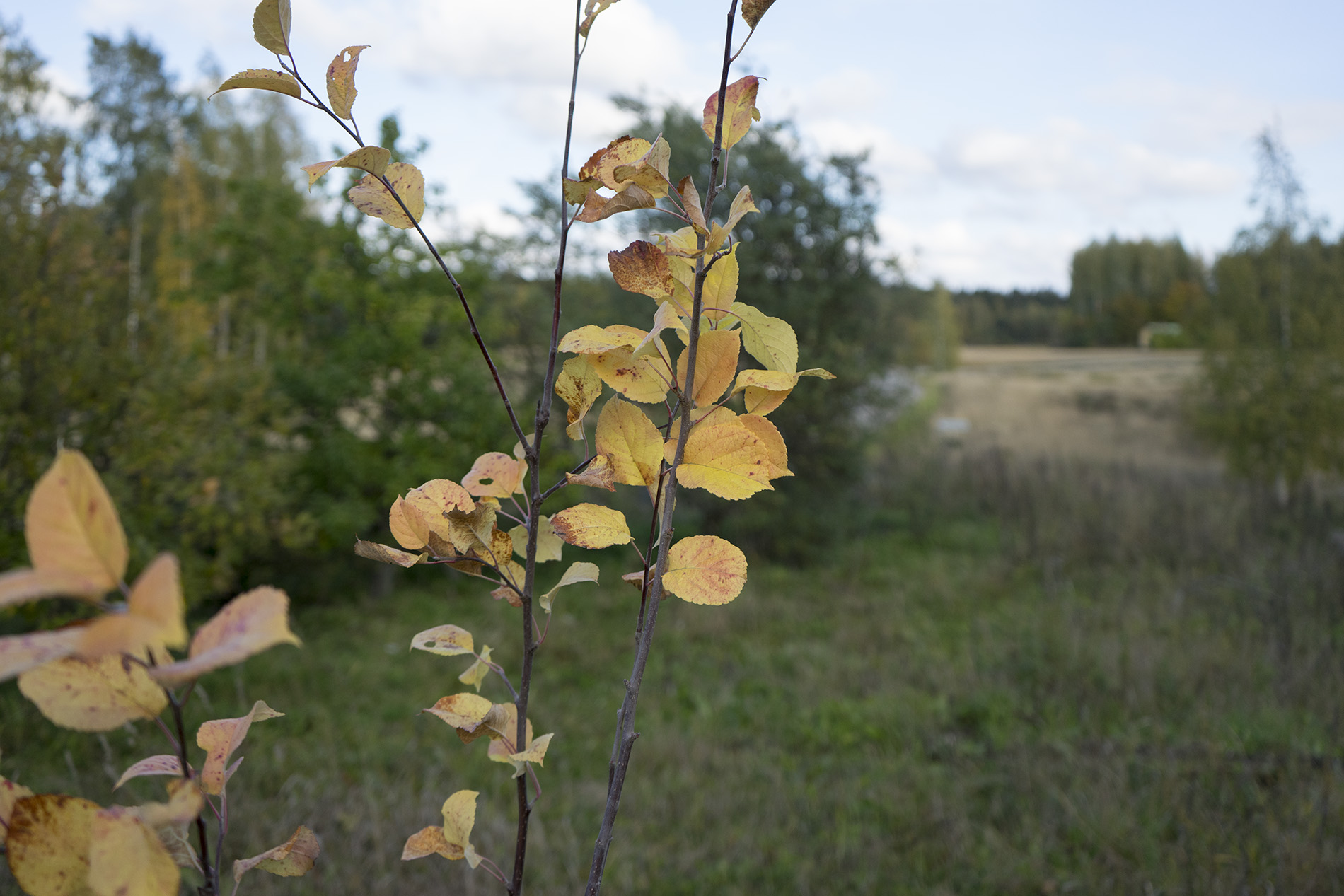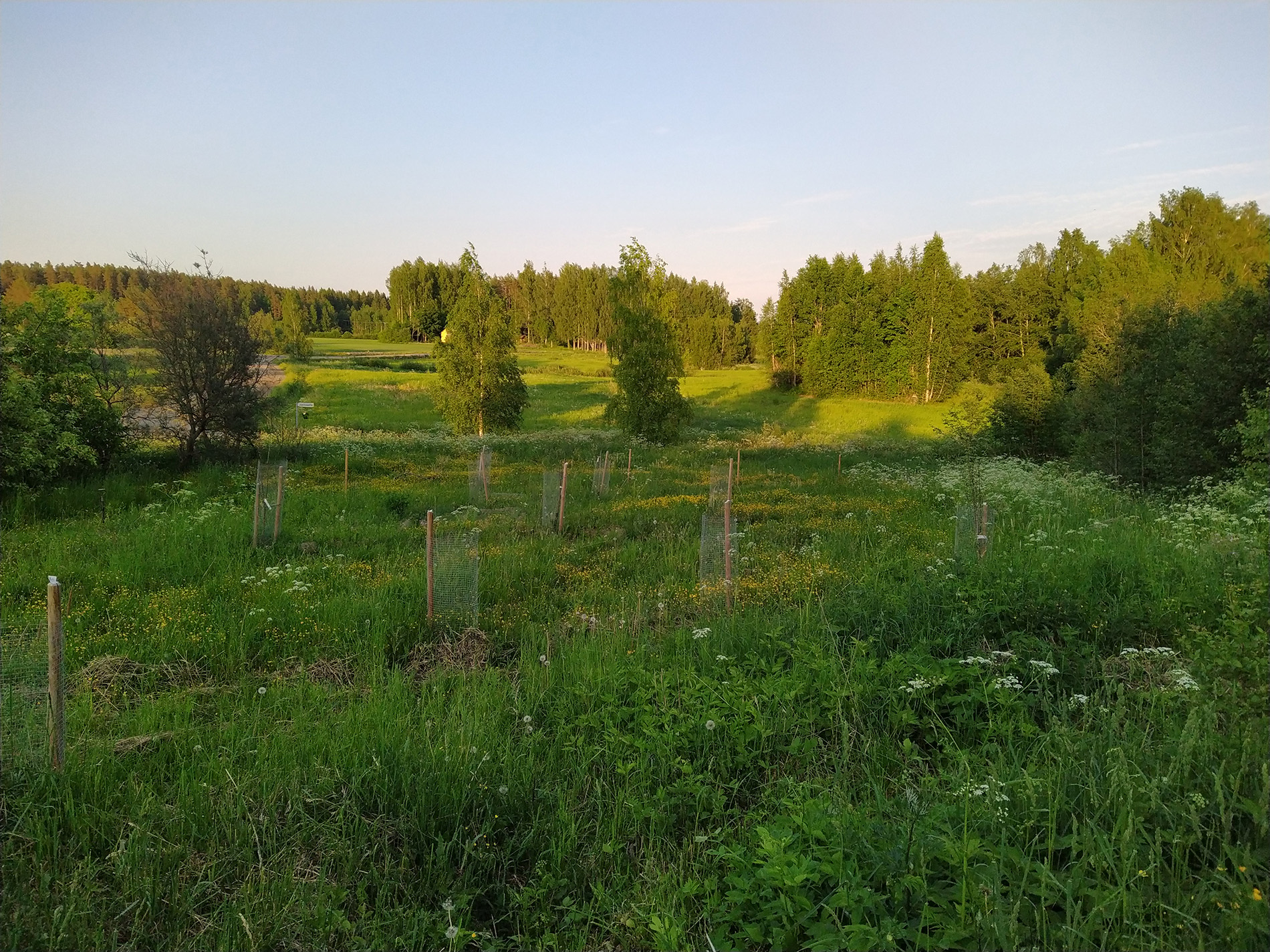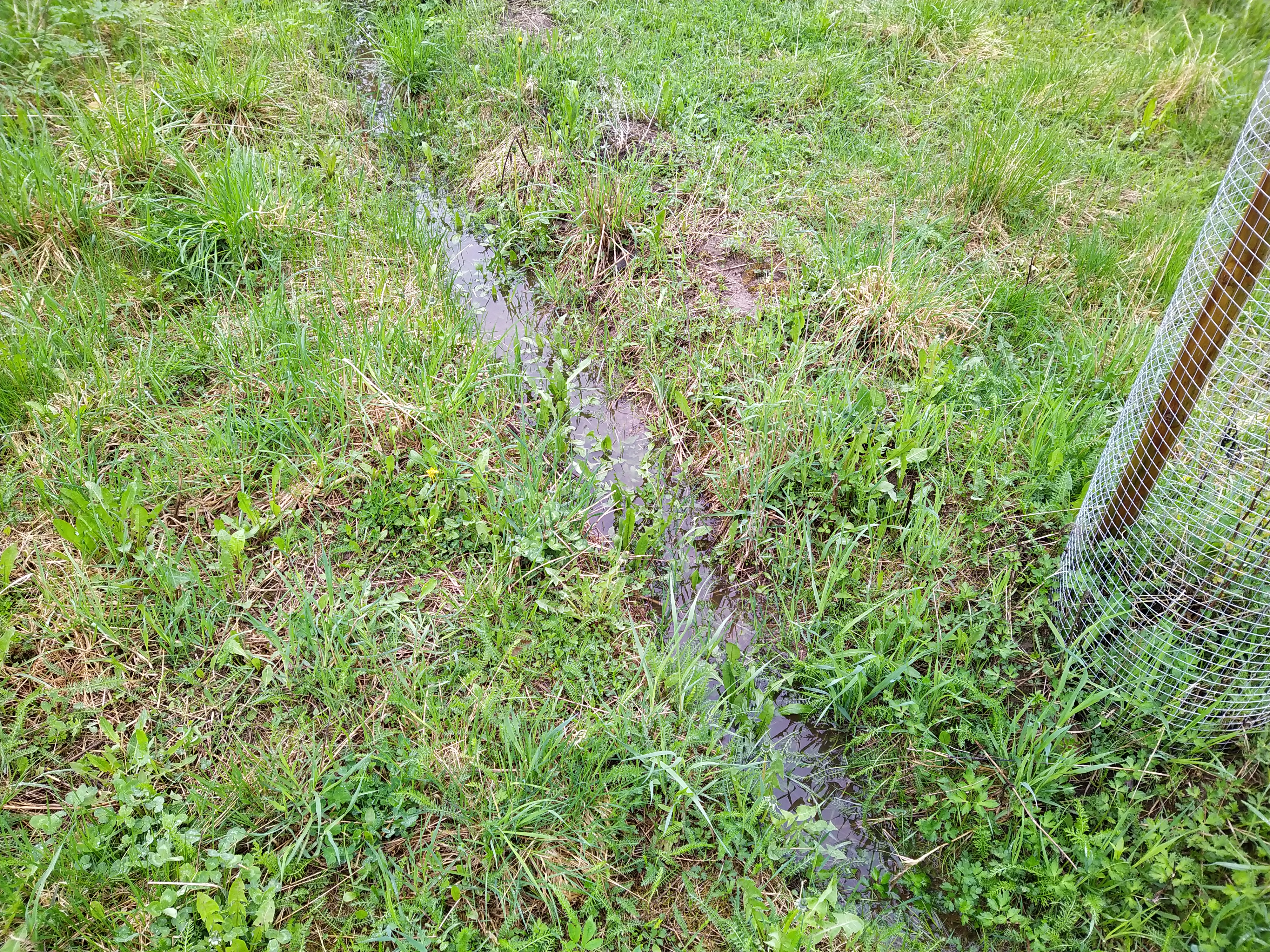Diploma in Applied Permaculture Design
final presentation by Dominik Jais
in 2021
all designs are available at https://www.beyondbuckthorns.com/content/dapd
Give feedback at: https://www.beyondbuckthorns.com/feedback
Who is who?
- Apprentice: Dominik Jais (FI/DE) - Dominikjais.com
- The best sidekick you can have for a diploma: Lumia Huhdanpää-Jais
- Tutor: Cathrine Dolleris (DK) - Geoliv
- Second tutor: Tomas Remiarz (UK) - UK Permaculture association profile
- Presiding Diplomate: Wilf Richards (UK) - Abundant Earth
- Peers: Mihaela Tzarchinska (BG), Andreas Jonsson (SE), Dan McTiernan (FI/UK), Erkki Pöytäniemi (FI), Moritz Holzinger (DE)
-
Principles used:
- Multiple elements (persons) for important functions (feedback)
- Each element (person) performs many functions (peer, consultant, friend)
- Small scale intensive system (information exchange, multiple levels)
- Use and value diversity (from the EU - not just Finland)
Dates
Mail to Cathrine about diploma in November 2018.
Started the diploma process with the Nordic Institute of Permaculture in March 2019.
The Nordic Institute defunct in 2020.
Switched to the UK system in July 2020.
Finished in October 2021!
Who is Dominik Jais?
Born in 77
Entrepreneur - Creative Director, Designer, Webdeveloper @ Chase & Snow
Diploma in Brewing Technology (pre Bologna) from TU Berlin
Homestead Beyond Buckthorns
Some of my previous work
The patterns - so far
Definition of pattern
a regular and intelligible form or sequence discernible in the way in which something happens or is done.
a form or model proposed for imitation
Patterns derived from the river of life
- Project manager
- Designer - web, graphic & products
- Diversity in projects
- Many things build on Serendipity
SWOC Analysis
Strength
|
Weakness
|
Opportunities
|
Challenges
|
Conclusions?
- I can't design a pathway with 10 designs since serendipity must play a part*
- I want to innovate - the designs should also be challenging for the tutors
- I will not wait for others, for example a diploma guild to catch up with me - high velocity means a lot to me
The 10 designs
LandEutopia Borealis Orchard, food and wood production system Catching the rain Rain water catchment design Introducing the Jean Luc Biogas digester for the Finnish climate The Biogas shed Retrofitting an old barn Ritva's permaculture garden * Land based / Home garden / Site design |
SocialPermaPuheet * / ** Online lecture series for SPEY Communication design for the Finnish Permaculture Association ** How does communication in a teal association look like? Templating a workshop Biogas workshop template Welcome to the PermaCafé * a permaculture upgrade for the Woldcafé Permablitz DesignCamp a permaculture design crash course |
My diploma in numbers
| Design | Words | Illustrations | Diagrams | Video | Photos |
| Eutopia Borelis | 7715 | 13 | 2 | 1 | 15 |
| PermaPuheet | 4101 | 3 | 3 | ||
| Catching the Rain | 3071 | 7 | 2 | 7 | |
| Communication | 6771 | 1 | 3 | 1 | |
| Templating a workshop | 3826 | 13 | |||
| PermaBlitz DesignCamp | 3328 | 1 | 14 | ||
| Welcome to the PermaCafe | 2244 | 1 | 5 | ||
| Ritva's Permaculture Garden | 2358 | 9 | 1 | 7 | |
| Introducing the Jean-Luc | 4947 | 4 | 3 | 1 | 13 |
| The Biogas Shed | 6023 | 11 | 5 | 2 | 30 |
| Total | 44384 | 50 | 15 | 6 | 107 |
Format
I have chosen the Beyond Buckthorns website to publish my diploma at.
The biggest plus is: It allows interlinking between different designs and linking of other websites, documents, materials, etc.
I can direct the output as I see it fit, leverage my web-designer knowledge
I can track the interest coming to the website
Order, order
The ten designs will take more than 45 minutes to present.
Therefore the proposed order of presentation:
- design chosen by the peers
- design chosen by me
- design chosen random
- design chosen by the people in Tampere
- If there is more time left we continue
Ritva's Permaculture Garden
- Design: https://www.beyondbuckthorns.com/content/dapd/ritvas-permaculture-garden
- Duration: 02.2020 - 10.2020 (ongoing)
- Process: Looby's web
- Word count: 2358 | Reading time: ~ 10 minutes
Goals
Goals are set in order to evaluate against them. It's like defining quality in the beginning of a process.
Earth Care: Increasing the variety of edible plants.
People Care: Making sure that Ritva learns about permaculture and that she gets the help she needs.
Fair Share: It’s an exchange in both direction: Giving and taking. She and her husband get a lovely design and garden and abundance in berries and tomatoes, while I get new varieties for my garden, especially flowers.
Looby's design web
Looby's design web is non-linear process allowing the designer to jump from anchor point to anchor point according to the designers needs
Possible anchor points are: Vision, Ideas, Limits, Helps, Patterns, Principles, Integration, Action, Momentum, Reflection, Appreciation, Pause
Sequence used: Helps → Limits → Ideas → Vision → Patterns → Principles → Integration → Action → Momentum → Reflection → Appreciation → Paus → Action → Reflection
Tools - Base map, Zones, Sectors
The design
Evaluation
This design was evaluated against the Nordic Institute's criteria.
The Nordic Institute requires to evaluate a design to what it achieved in earth care, people care, fair share, while earth care is split into soil, air, water, energy.
Evaluated against its set ethical goals in the beginning of the design - it achieved them using permaculture design.
A good straightforward garden design, using a few key permaculture tools.
Tomas Remiarz - FPA2
It’s a great design map with colours. Photos are nice, great to see hands achieve the plans and have fun.
Catherine Dolleris
Welcome to the PermaCafé
- Design: https://www.beyondbuckthorns.com/content/dapd/welcome-permacafe
- Duration: 05.2020 - 09.2020
- Process: CEAP
- Word count: 2244 | Reading time: ~ 8 minutes
Description:
Infusion of the Worldcafé (structured conversational process) with the CEAP linear permaculture design process created by Mollison.
While participating in the PermaCafé people have structured conversation but also learn the CEAP design process.
CEAP:
- Collect
- Evaluate
- Apply permaculture principles and design
- Plan and implement
CEAPER
In order to close the learning cycle it is necessary to add an additional evaluation & reflection step at the end. Therefore the tweaked and proposed process is called CEAPER.
- Collect data
- Evaluate
- Apply Permaculture principles and design
- Plan and Implement
- Evaluate outcome
- Reflect
Evaluation
Participant's feedback
Own evaluation using Plus, Minus, Interesting
Team evaluation using Worst, Best, Change
A design framework within a design framework within diploma design process….
Catherine Dolleris
Permablitz DesignCamp
- Design: https://www.beyondbuckthorns.com/content/dapd/permablitz-designcamp
- Duration: 06.2020 - 08.2020
- Process: Looby's web
- Word count: 3328 | Reading time: ~ 13 minutes
Description:
The Permablitz designCamp combines the Permablitz (talkoot) with a permaculture design crash course. The design is using Looby's design web as a process but teaches the "GoSadimet" process during the crash course.
GoSadimet
linear (circular) design process
- Goals
- Survey
- Analysis
- Design
- Implementation
- Evaluation
- Tweak
Goals
Earth care: Direct: Make sure students do something practical in the garden during the course. Hands on! Indirect: Make sure students understand the necessity of Earth Care and are given ideas on how to do it in practice
People care: teach and empower people; let them teach each other and learn by working together! Make all the participants feel welcome and that their input is of value for the project.
Fair share: for me: getting all the input needed | from me: giving information about permaculture & permaculture design & produce from the garden
Tools used
- Limits from Looby's web
- Best, Worst, Change about PDC and TPT
- Mind map from the outcome of the PermaCafé implementation
- Data mining of data given from IPEN's Lachlan McKenzie
- Dan McTiernan's "collective genius" session as inspiration. An implementation of crowdsourcing
From the implementation
Evaluation
Best, Worst, Change from Lumia's perspective and mine
SWOC of the implemented design
Rerun
In 2021 Lumia and I run the designCamp again. This time we designed the front area.
Your designs are very abstract in a way – using one design process to describe how you used another one etc. It gets a bit heady and constructed for me. However, I understand your desire to innovate and explore the field.
Catherine Dolleris
Templating a workshop
- Design: https://www.beyondbuckthorns.com/content/dapd/templating-workshop
- Duration: 12.2019 - 10.2020
- Process: Looby's web
- Word count: 3826 | Reading time: ~ 15 minutes
Description:
Building a blueprint that allows me to teach about Biogas in particular but other topics as well.
Goals
Earth care: Demonstrate the full cycle of biogas production. Come for the gas stay for the effluent. Cooking demonstration on biogas, feeding the dragon with food scraps.
People care: teach and empower people; Make all the participants feel welcome and that their input is of value for the project.
Fair share: food from the garden, feedback and ideas from the participants
Tools used
- Helps & Limits from Looby's web
- Best, Worst, Change about PDC and TPT
- SWOC
- Mind map
- Schedules
- Session plans
- Kanban
- Usage of consulting
From the implementation
Evaluation
Lumia's and my feedback using Worst, Best, Change.
The goals set in the beginning were met using permaculture design.
The feedback loops, the honest reflections and the guy on the photo who looks like someone from GOT(?)
Catherine Dolleris
The Biogas shed
- Design: https://www.beyondbuckthorns.com/content/dapd/ritvas-permaculture-garden
- Duration: 02.2020 - 10.2020 (ongoing)
- Process: GoSadimet
- Word count: 6023 | Reading time: ~ 23 minutes
Goals
Goals are set in order to evaluate against them. It's like defining quality in the beginning of a process.
Earth Care: I need the blue flame to guide all those in search of wisdom in the dark night to a glorious end. I want to grow food beyond the realms of time and space. I need a winter residence for the tame feathered egg laying beasts (chicken as the earthlings call them). Reducing my carbon footprint by creating food and energy on site.
People Care: a place worthy of my mighty frame. Where I can rest after all those battles I fought across the galaxy (and Facebook). Dreaming big without the boundaries in mind. Building something that Lumia can enjoy as well. Taking care of some of my needs.
Fair Share: let everyone take part in the journey, the endeavor, the challenges.
Context
Some Photos to start with
Tools, Tools, Tools
Survey
- Context
- Before photos
- Weather data
- Size, orientation,
structure of the building - Surroundings
- Soil
- Animals
- Rain water catchment (own design)
- PASTE Sheet
- Resources & Budget
Analysis
- PMI
- SWOC
- Function, System, Elements
- Limits and needs
Design
- From patterns to details
- Bubble map
- McHarg exlusion
- Flow diagram
- Relative location of elements
Some Photos to continoue
Some Photos to end
Credits
Lumia, Sirpa, Ritva, Nikko, Esko
Really nice maps and 3D illustrations and video
Tomas Remiarz - FPA2
The feeling of accomplishment and pride to have completed this big and difficult design with many functions and elements.
Catherine Dolleris
Introducing the Jean-Luc
- Design: https://www.beyondbuckthorns.com/content/dapd/introducing-jean-luc
- Duration: 05.2013 - 03.2021
- Process: Looby's web
- Word count: 4947 | Reading time: ~ 19 minutes
Description:
The aim of the was to show a holistic biogas system for the north, it's implementation and evaluation.
This design needs the Biogas shed design to be implemented to a certain extend.
The photo shows different biogas storage bags. 2 filled with a total of nearly 2m³ of gas ~ 10 kw. In the front is a modified stove.
Goals
Earth Care: biogas from a DIY digester fed from organic material is besides wood the most regenerative energy source we have on the planet. If you don't do it you have to ask yourself: why not?
People Care: we, the people, need energy – for cooking, heating, transportation, travel, etc. A biogas system for Beyond Buckthorns will make sure we have a showcase system. Something people can learn from. Besides that I take care of Lumia and me. We got energy for cooking.
Fair Share: The design of the system itself has been shared over and over on different DIY biogas websites by TH and me. Having it as a diploma design makes sure more people will read about biogas. I’m getting an education and research digester. The plant parts that can't be used for food will deliver energy.
Data, Thermal images, Photos
How I got the data? Citizen science!
In order to get the data I used remote sensing. I coded for ESP8266 + 2 DS18B20 temperature sensors and soldered a so called shield for the Wemos D1.
Data is sent via Wifi to Mosquitto and then towards Homeassistant (where it gets stored).
The citizen science design was first included as one of the 10 designs but then I realized that it would be even more difficult for the tutor to understand what I'm doing (context).
Credits
Lumia, Ritva
The SolarC³ITIES Team: TH, Jody, Kathy, Janice, and Bob
Some cows
The videos! Absolutely enlightening! Please add more in your next designs! You lighting up the gas, very exciting, I am quite jealous
Catherine Dolleris
Please do try this at home
TH Culhane
Communications at the Finnish Permaculture Association
- Design: https://www.beyondbuckthorns.com/content/dapd/communications-finnish-permaculture-association
- Duration: 03.2017 - 03.2021 (ongoing)
- Process: Looby's web
- Word count: 6771 | Reading time: ~ 26 minutes
Description
This design is to show that communication is an integral part of a permaculture association and thanks to permaculture design communication can be designed. I’m using the permaculture design philosophy with its ethics "earth care", "people care" and "fair share" and its principles throughout the design and also to set a goal.
Goals
Earth Care in this design is to enable others to bring information on how to take care for this planet is brought towards a broader public.
People Care is about the balance and the care for people in the Finnish Permaculture Association, especially those that are engaged in activities – people who contribute resources of any kind! But also people interested in permaculture get the information they need to take responsibility for their own lives and their family.
Fair Share is distributed by my volunteer work for the association and what comes back from it. Meet new people, learn about all kinds of topics, perhaps even earn some money.
Vision
A stable high quality website that serves the purpose of the association and its members by integrating the members into the content creation process. An online portal into permaculture in Finland.
A working internal transparent communication and access to all data for all members (except to those parts protected by the GDPR (General data protection regulation)
Engage people interested in permaculture through multiple channels
Embrace sociocracy
The communication monoculture inside the permaculture
Who is using Gmail?
Who is active on Facebook / Instagram?
Who is using WhatsApp?
The edge between two system is its own system
Have you ever heard of Protonmail?
Have you ever heard of Diaspora?
Have you ever heard of Signal or Matrix?
Help > Who needs to know what
| Jan | Feb | Mar | Apr | May | Jun | Jul | Aug | Sep | Oct | Nov | Dec | ||
| Yearly fee mail | x | Comms | |||||||||||
| Reminder Yearly fee | x | Comms | |||||||||||
| Preparation for Spring Assembly | x | x | x | Comms & Board | |||||||||
| Preparation for Autumn Assembly | x | x | x | Comms & Board | |||||||||
| Newsletter preparation | x | x | x | x | Comms |
The "Who needs to know what when was shown to me by Tanja Korvenmaa.
Thank you Tanja!
Help > Observation
Put into a mind map
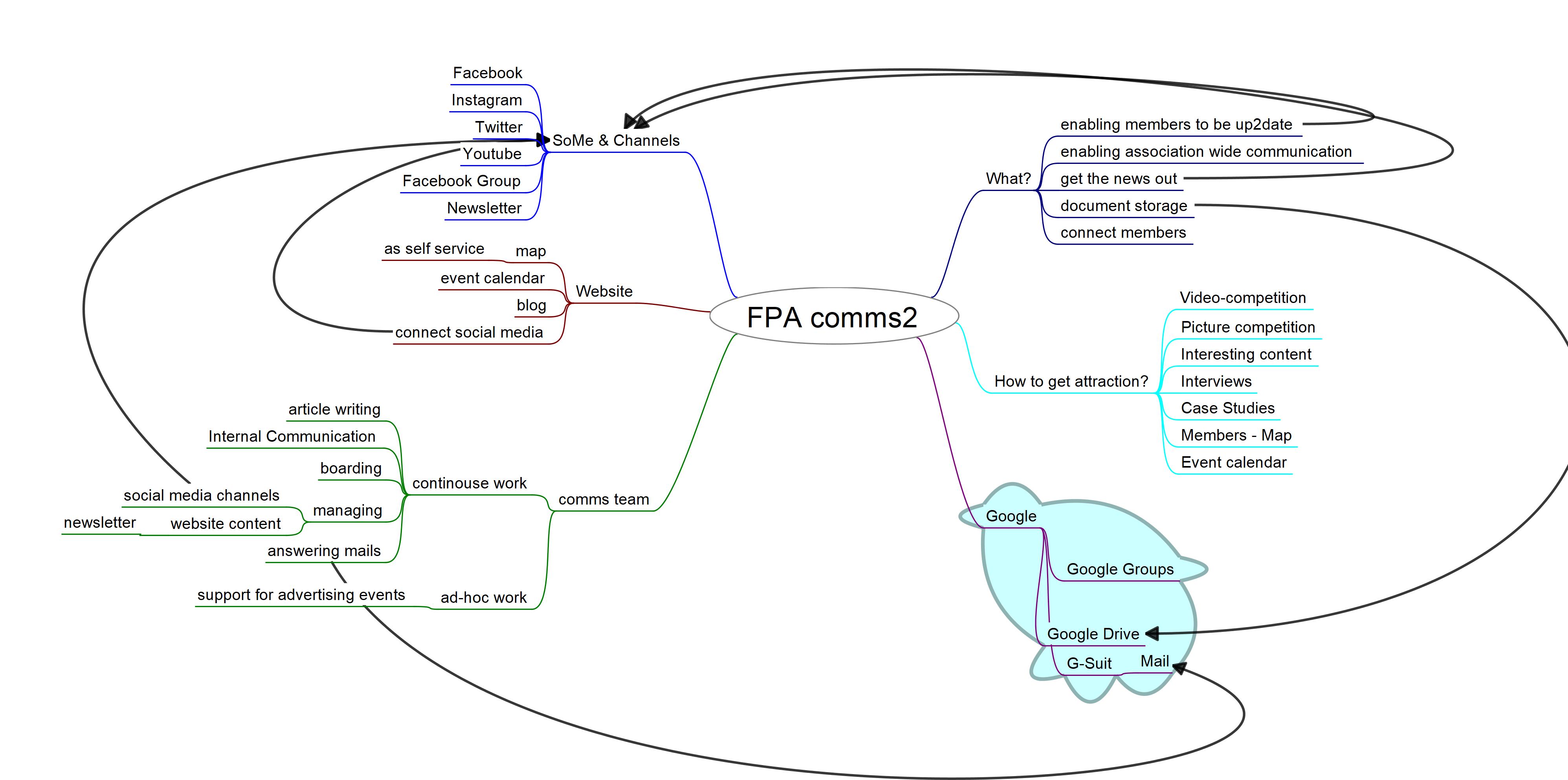
Communication needs
- Non-members must be able to get in contact with the association
- Members must be able to communicate with other members
- Members must be able to identify who is responsible
- Members must be able to get in contact with members responsible
- The board needs to be able to get in contact with members
- The circles must be able to communicate towards members and non-members
- The public needs to have access to permaculture information in Finnish
- The association needs to send official documents and info to members
Limit - evaluation of findings
PMI of all the different communication tools used
SWOC (Strength, Weakness, Opportunity, Challenge) of different communication tools in a future perspective
Costs
Time & manpower
Brooks' law - n(n − 1) / 2
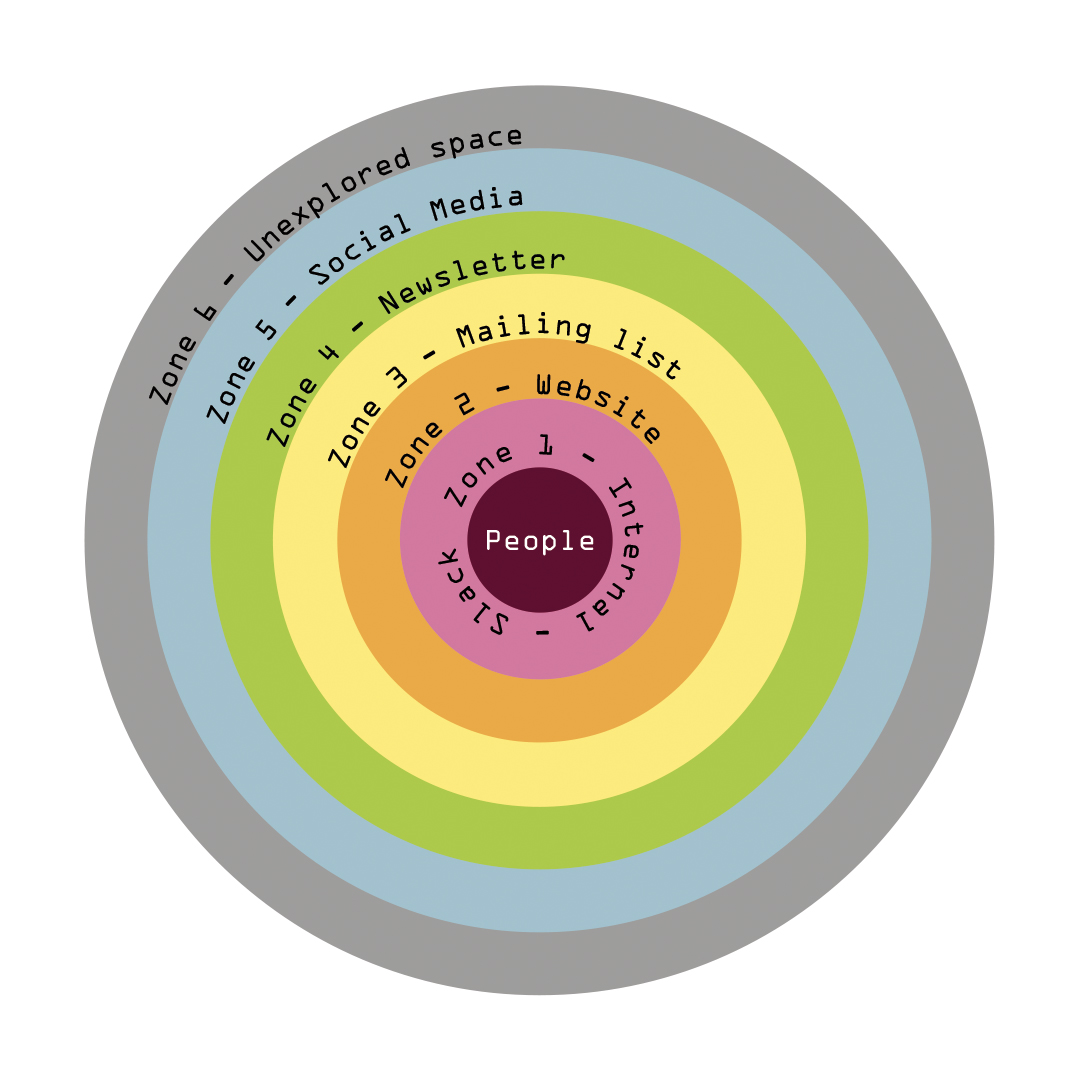
Zones
The image shows how zoning works with communication. The further the zone is away from the center the more work and time is needed and the less the information can be controlled. But, the further away the zone is from the center the more people can be reached.
Note that Zone 1 in this graphic is missing e-mail.
Principles
I see if I can come up with something that I haven't identified yet. It also might be repetitive and show me items that I really value as important.- Use edges
- the more diverse output of the association's content we can use, the better
- use as many channels as possible
- use the edge between different communities -> needs identification
- Use & value diversity
- different authors
- user driven content
- make it possible for all members to contribute
- Slow & Small solutions
- contribution from members will take time -> be patient but don't lose momentum. The website is a big change. Again: it will take time
- Apple Self regulation & accept feedback
- Besides a contact form we could have a feedback form and other kind of forms
- Discussion in the communication circle
- Everything gardens
- everyone can contribute
- The yield is theoretically unlimited
- Let's check the numbers of engagement, hit rate, stats and see if members interact, or not. How many articles got published?
More principles
- The problem is the solution
- I often wanted do too much -> I should do less
- Work with nature rather than against
- the nature of content dissemination is to use as many different ways and be as effective as possible while using the least amount of resources
- Each important function is supported by many elements
- dissemination happens over multiple channels
- multiple authors
- multiple communication circle members
- multiple communication managers (people that can manage accounts and understand the processes)
- Each element performs many functions
- while most elements are informative they also allow feedback and let people engage
- more edge due to different channels
- Integrate rather then segregate
- The segregation of the members from the board needs to end
Implementation
Implementation
Membership workflow
Who needs to know what now
| Jan | Feb | Mar | Apr | May | Jun | Jul | Aug | Sep | Oct | Nov | Dec | ||
| Yearly fee mail | x | Comms | |||||||||||
| Reminder Yearly fee | x | Comms | |||||||||||
| Voting out of members that haven’t paid | x | GA | |||||||||||
| Delete from members directory | x | Communications | |||||||||||
| Boarding of members into Google Group | x | x | x | x | x | x | x | x | x | x | x | x | Comms |
| Boarding of members into Slack | x | x | x | x | x | x | x | x | x | x | x | x | Comms |
| Preparation for Autumn Assembly | x | x | x | Comms & Board | |||||||||
| Preparation for Spring Assembly | x | x | x | Comms & Board | |||||||||
| Newsletter preparation | x | x | x | x | x | x | x | x | Comms |
Website stats
Website is connected to Matomo (opensource tracking tool)

- ~ 1000 visitors / month.
- Numbers fluctuate between seasons
- Numbers are higher when we run a lecture series or before an event
Slack stats

Evaluation against the goals
Earth Care in this design is to enable others to bring information on how to take care for this planet towards a broader public.
DonePeople Care is about the balance and the care for people in the Finnish Permaculture Association, especially those that are engaged in activities – people who contribute resources of any kind! But also people interested in permaculture get the information they need to take responsibility for their own lives and their family.
Done?Fair Share is distributed by my volunteer work for the association and what comes back from it. Meet new people, learn about all kinds of topics, perhaps even earn some money.
Done?Credits
Lumia for proofreading it twice
Dan for reading it twice and giving feedback
Comms team: Alexis Jutras, Maria Gremmelmaier Candido, Johanna Hatch, Camilla Grankull, Lumia Huhdanpää-Jais
Tanja Korvenmaa for her initial work
All the participants during many different discussions
A bold and very complex design that is sometimes hard to follow.
Tomas Remiarz
Catching the rain
- Design: https://www.beyondbuckthorns.com/content/dapd/catching-rain
- Duration: 05.2016 - 02.2021
- Process: SADIMET
- Word count: 3071 | Reading time: ~ 12 minutes
Description
Water catchment system designed towards the needs of the different food growing areas.
Goals
Earth Care by making sure that we don’t need well water for the garden. Store energy higher up in the landscape and make it available when needed.
People Care by making sure that Lumia, my wife, doesn’t have to worry about water scarcity. Be more resilient when it comes to water.
Fair Share by making my design available online.
Survey
Analysis
Rain water collection possibilities
| Possible Collection volume | |||
| Roof area | m | m | m² |
| Red building (only one side) | 26 | 4,25 | 110,5 |
| Biogas Shed | 10 | 6,5 | 65 |
| Main house | 12 | 10 | 120 |
| Total roof area | 295,5 | ||
| Monthly average precipitation | 50 | liter/m² | |
| Total amount of volume per total roof area | 14775 | liter | |
| 14,78 | m³/month | ||
| Current Collection volume | |||
| Barrels Volume | Amount | Liter total | |
| 200 | 4 | 800 | |
Design
| m³ | where |
| 2x1 | Stacked behind the house |
| 2x1 | Stacked front side of the house |
| 1 | back of the biogas shed |
| 1 | in front of the biogas shed |
| 1 | inside the biogas shed |
| 1 | besides the garage |
| 2x0,2 | Besides the house and in the main garden |
| 8,4 | total |
With that many different locations of water collection I have fulfilled the “multiple elements for important functions” principle. All the elements are in a good relative location to the different gardens.
Evaluation
Best, Worst, Change from Lumia - how about it?
Evaluation of the design process and the tools used
Evaluation of effectiveness against the goals set in the beginning: No well water for the garden, make sure Lumia doesn't need to worry. Store water higher up in the landscape.
Good illustrations and photos, nice to get that feeling of security and sense of accomplishment because the design works and has made your lives a little better. All in all a great design that will be great to share as a demonstration of how to make designs.
Catherine Dolleris
PermaPuheet (PermaTalks)
- Design: https://www.beyondbuckthorns.com/content/dapd/permapuheet
- Duration: 10.2020 - 04.2021
- Process: SADIMET
- Word count: 4101 | Reading time: ~ 16 minutes
Description
An online lecture series for the Finnish Permaculture Association
Implemented during COVID times
Goals
Earth Care: Bringing the knowledge of permaculture to as many people as possible so that they can take care of the Earth.
People Care: Learning the things I’m interested in. Encouraging other to step forward to hold a lecture. Bringing permaculture and permaculture related topics to the members of the Finnish Permaculture Association and beyond.
Fair Share: I get the knowledge I want while others get the lecture they want while other get paid for holding a lecture.
Survey
Survey was carried out mainly as observation from what I have seen at the Finnish Permaculture Association (decline in membership), other associations and communities (not just the permaculture associations).
Key observation: Online lectures were more and more accepted even by computer non-literates.
Analysis
PMI of online formats, PMI of possible software, PMI of difference between webinar and interactive lecture, SWOC from different perspective, SMART Goals, Limits & Helps, Principles (guiding)
Zones in a different context
- Zone 00 = for me
- Zone 0 = for Lumia
- Zone 1 = for friends
- Zone 2 = for colleagues and acquaintances
- Zone 3 = for the members of the Suomen Permakulttuuriyhdistys RY
- Zone 4 = for the Finns
- Zone 5 = for people interested
The teachers
| Who | What | Who handles | Language | Where | Zone |
| Lotta Laaksonen | Introduction to permaculture | Lumia | Finnish | Jitsi + Youtube | Zone 3 |
| Andreas Johnson | Sociocracy & Permaculture | Alexis | English | Zoom | Zone 1,2,3 |
| Annevi Sjöberg | Perennial vegetables | Milla | English | Zoom | Zone 0,1,2,3 |
| Looby Macnamara | People & Permaculture | Nick | English | Zoom | Zone 0,1,2,3 |
| Anton Nordqvist | Metsäpuutarha | Nick | Finnish | Jitsi + Youtube publicly open | Zone 1,2,3,4, |
| Cathrine Dolleries | LAND | Nick | English | Jitsi + Youtube open for international guest | Zone 0,1,2,3,4,5 |
Principles
The principles in this stage will guide me through the design.
- Multiple elements for important functions → One lecture feels not enough, also a panel discussion doesn’t feel enough. It also needs more than one person in the beginning to accept my idea. I’m bound to run my ideas by a peer in the association.
- Each element performs multiple functions → If we think of an event as an element then each event should accomplish more than one function. → Educate, get new members, connect, etc.
- Diversity → If I’m going to look for teachers, I’m not going to look for the same teachers that are always present in Finland. I also have to keep in mind to not just look for men but also women.
- Edge effect → It is not just about permaculture but also what is associated with it. Just because someone is growing good food organically doesn’t mean he could tell a lot about permaculture (Sepp Holzer didn’t know that he is into permaculture until someone told him that what he is doing is called permaculture). It is also about the edge of the association, the social edge, the connections between different associations / individuals.
- The yield of the system is theoretically unlimited → It might be not just about one lecture, but about the recording of it, the remix of it, conversion to podcast, etc.
Feedback & Evaluation
run a Best, Worst, Change with Lumia, Comms team, Cathrine, and from my perspective
- Opportunity to learn on all levels
- Inspiring
- Possible to meet people of the association
- How it moved, how the lectures happened, amount of new members
- the whole idea → well organized, → very popular → happy to give something to the workers, inspired to learn more
- variety of lectures, well balanced
- the missed opportunity for those that said not to hold a lecture
- being tied up in the work
- difficulty of being a host
- getting information from teachers was often difficult
- not knowing what to expect content wise
- platforms different → having a set format would be better
- sharing the workload
- putting a process in place → a bit more framework
- PermaPuheet extend → no tickets should be available for non-members
Credits
Management: Lumia
Comms team: Alexis Jutras, Maria Gremmelmaier Candido, Johanna Hatch, Camilla Grankull, Lumia Huhdanpää-Jais
The teachers: Lotta Laaksonen, Anton Nordqvist, Andreas Jonsson, Annevi Sjöberg, Looby Macnamara, Cathrine Dolleris, Sandor Ellix Katz, Erkki Pöytäniemi, Emma Ojanen, Lumia Huhdanpää-Jais, Joshua Finch
and all the contributors
Great idea and well analysed. I think I might consider doing PermaTalks within Permakultur Danmark.
Catherine Dolleris
Thorough analysis leading to a simple, effective design – great example of permaculture!
Tomas Remiarz - FPA2
Eutopia borealis
- Design: https://www.beyondbuckthorns.com/content/dapd/eutopia-borealis
- Duration: 05.201s6 - 07.2021
- Process: SADIMET
- Word count: 7115 | Reading time: ~ 30 minutes
Description
The design describes how I transferred a former annual garden into some type of orchard valuing the existing grassland while using edges to grow trees for multiple usage. In years to come there will be a good yield in fruits and berries. It is my biggest design so far. It uses the SADIMET design process and a lots of different tools. Some of them I used for the first time.
Goals
Earth Care: create abundance. A lot of apples for eating raw, apple juice and cooking. Sequester carbon. Leave space for nature, wild plants, insects, birds.
People Care: a place I and my wife can walk through and be happy but also for family, friends and visitors to enjoy.
Fair Share: Sharing apple and berry harvests with family & friends. Sharing this design with the public.
Survey
- Client interview
- Observation over 4 to 5 years
- DAFOR (dominant, abundant, frequent, occasional, rare)
- Climate data (see "Catching the rain")
- Base Map
- Sectors
- Budget
- Limits & Helps
Images before
Survey
Analysis
- Identifying indicator plants from DAFOR
- Contour and orientation
- Calculation of the amount of apple trees needed
- Nutrient demand of apple trees
- Nitrogen fixing trees & shrubs
- Needs of Wood
- Flow Map
- Soil samples
- Function, System, Elements
- Principles
Images from analysis
Visualising
put it into a mind map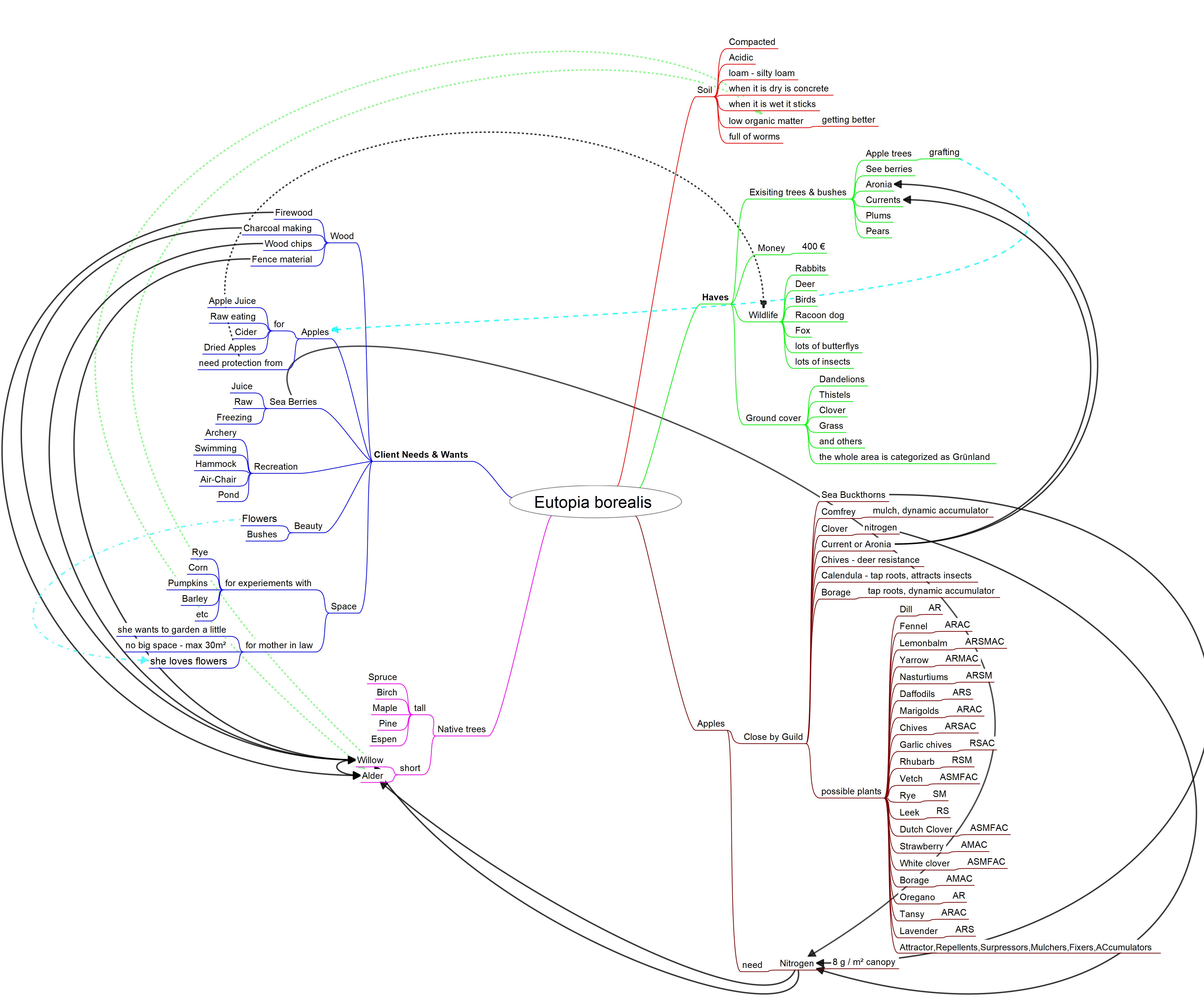
Design
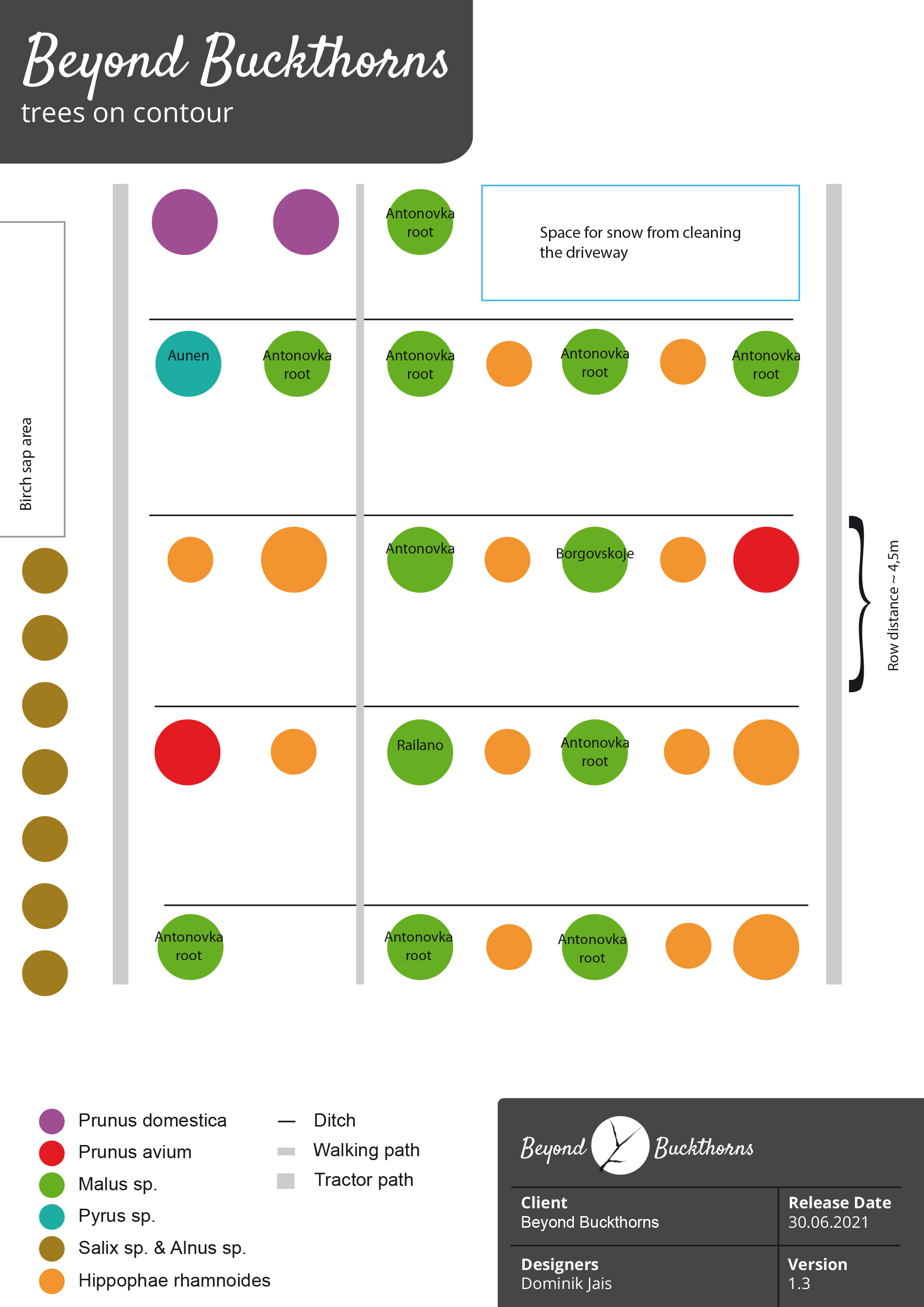
| Annual requirement | |||||||||
| N requirement in g / m² year | K requirements in g / year | ||||||||
| Amount | What | Full grown canopy area in m² | Total canopy area in m² | Moderate croppers | Heavy Croppers |
Annual Vegetable |
Moderate cropper | Heavy Croppers |
Annual Vegetables |
| 3 | 8 | 28 | 3 | 10 | 37 | ||||
| 12 | Apple | 7,065 | 84,78 | 678,24 | 847,8 | ||||
| 1 | Pear | 7,065 | 7,065 | 56,52 | 70,65 | ||||
| 2 | Plums | 14,13 | 28,26 | 226,08 | 282,6 | ||||
| 2 | Red currants | 0,8 | 1,6 | 12,8 | 16 | ||||
| 14 | Sea Buckthorns | 4,71 | 65,94 | 659,4 | |||||
| Total N | 973,64 | Total K | 1876,45 | ||||||
| N-Fixers | |||||
| N fixation in g / m² year | |||||
| Amount | What | m² | Total m² | Full light | Partial light |
| 10 | 5 | ||||
| 14 | Sea Buckthorns | 7,065 | 98,91 | 989,1 | |
| 8 | Alder | 7,065 | 56,52 | 565,2 | |
| Willows | 7,065 | 0 | 0 | ||
| Total N | 1554,3 | ||||
| Annual contribution | ||||||||
| Yearly | Suffix | Source | Amount N | Suffix | Amount K | Suffix | N g / year | K g / year |
| N-Fixer in Full light | 10 | G / m² | 1554,3 | |||||
| N-Fixer in Half light | 5 | G / m² | ||||||
| 180 | pees | Human Urine | 5,6 | G / pee | 7 | G / pee | 1008 | 1260 |
| 24 | plants | Comfrey Single Cut | 0,5 | G / cut | 10 | G / cut | 240 | |
| 50000 | L | Biogas slurry | 1,60 % | 1,00 % | 800 | 500 | ||
| Total | 3362,3 | 2000 | ||||||
Now
Evaluation
Difficult to evaluate against the set goals - it's too early
Worst- The rabbits feasting on the apple trees
- my first concept wasn't working
Best
- The amount of natural plants
- Letting go of the "Everything is a food forest" public view that dictates what is expected
- The ditches and berms
Change
- A bit more comfrey
- More diversity of berry bushes
Vision
- Keeping it as a biotope. Are we nature working or are we working nature? What is our part / role?
Credits
Lumia for reading, proofreading, tips, ideas, inputs
Sirpa for helping to identify plants and planting the front row decades ago.
The community for helping to identify plants
Seppo for the ditches & berms
Dan McTiernan & Andreas Jonsson for their input on swales
Cathrine for saving me from a mistake
The vision of the land in 10-20 years from now – filled with blossom, lush fruits and a buzz of bees. I also really like all the details on nutrients and principles being put to work.
Catherine Dolleris
Costs
- Assessment of designs - Cathrine Dolleris - 540 €
- Assessment of designs - Wilf Richards - 180 pound
- Membership UK Permaculture Association - 144 pound
- Total ~ 960 €
Cathrine's invoice was paid using funding. The rest out of my own pockets.

Closing loops
What was going well?
The research. The hours of thinking & tweaking. Learning different things, building on what was there. The graphics design. Project management at high velocity. Taking a course in Sociocracy, writing and herbs (all remote).
What has been challenging?
When I had to rewrite the Communications design. When I had to remove some complaints about brain drain. Setting a limit. I could have easily written 100.000 words. Not making it to difficult for my tutor.
What is your next achievable step?
DIY weather station
Finishing the composting toilet design implementation
Finishing the full site design in winter, then LAND center assessment in 2022
What are your long-term visions and goals?
Setting up the Finnish Diploma system
Lumia's and my homestead Beyond Buckthorns to be a LAND center for decades
Having one PDC in Finland per year
Being more self-sufficient
One more thing
PDC at Beyondbuckthorns in June 2022
Permaculture design camp
A modern version of the PDC using the required core curriculum, blending it with Sociocracy / Teal methods and project management methods from software development

